Introduction
In an era where efficiency and accuracy are paramount, the insurance industry is increasingly turning to Artificial Intelligence (AI) to revolutionize claims management. As insurers grapple with the vast amounts of structured and unstructured data inherent to their operations, AI emerges as a beacon of innovation, drastically reducing processing times and enhancing customer satisfaction. By automating routine tasks and leveraging advanced analytics, AI not only accelerates decision-making but also plays a pivotal role in early fraud detection, thereby minimizing losses and boosting profitability.
Despite the promising benefits, the journey towards full AI integration is fraught with challenges. Balancing technological advancements with robust governance frameworks is essential to ensure sustainable digital transformation. Moreover, addressing data privacy concerns, integrating with legacy systems, and overcoming employee resistance are critical hurdles that need strategic solutions.
This article delves into the transformative potential of AI in insurance claims management, exploring how it enhances accuracy, streamlines processes, and offers practical solutions to the industry’s inherent challenges.
Benefits of AI-Driven Insurance Claims Management
Artificial Intelligence (AI) is transforming the management of requests by enhancing both efficiency and accuracy. By automating routine tasks, AI significantly decreases turnaround times, enabling insurers to settle claims faster and enhance customer satisfaction. According to Capgemini, organizations that have implemented AI show significant gains in speed, reduced expenses, and improved target achievement compared to those that haven’t.
AI-driven analytics also play a crucial role in early fraud detection, minimizing losses and enhancing profitability. In fact, property/casualty insurers were among the first to adopt AI and are already seeing benefits. However, the journey hasn’t been straightforward. While 91% of financial services and insurance leaders report launching AI proofs of concept, only 36% are using them widely across business functions. Despite these challenges, AI provides a solution for managing and processing the vast amounts of organized and unorganized information that insurers handle daily.
Moreover, AI helps in reallocating time spent on administrative tasks. Reports show that underwriters spend 41% to 43% of their time on administrative duties like data entry, leaving only 32% to 33% for essential tasks such as risk assessment and premium calculation. By automating these tasks, AI enables underwriters and adjusters to concentrate more on essential activities that require human intervention, thereby promoting better decisions and results.
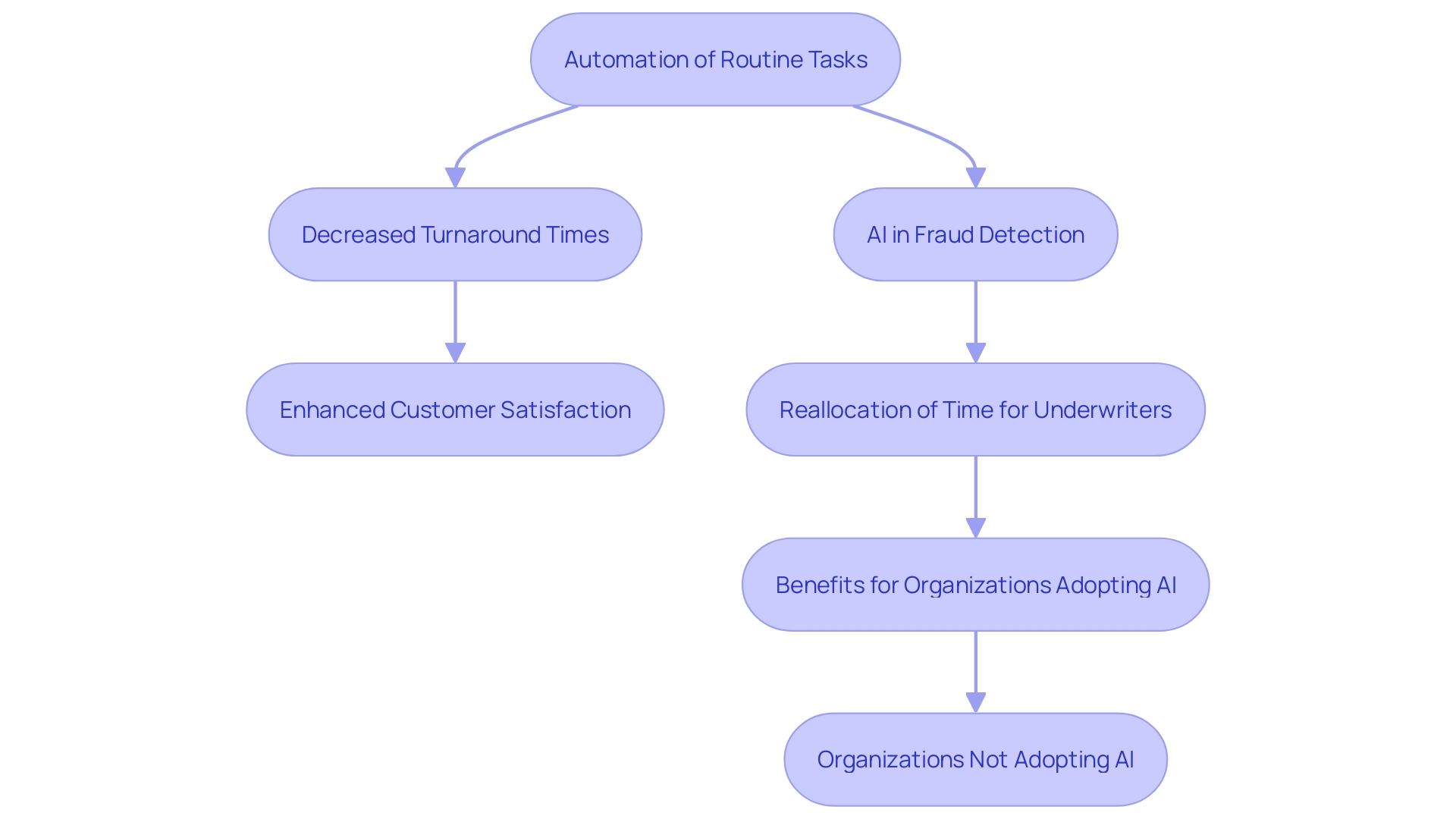
How AI Automates Claims Processing
‘The application of AI in insurance request handling transforms the complete workflow, from initial reporting to final settlement.’. Utilizing natural language processing (NLP), AI effectively examines claims information submitted through various channels, including chatbots and mobile applications. Furthermore, machine learning algorithms analyze historical information to speed up decision-making, thus guaranteeing a smooth workflow and reducing manual mistakes. This technological advancement not only streamlines operations but also significantly reduces operational costs.
Recent studies indicate that while 91% of financial services and protection leaders have initiated AI proofs of concept, only 36% have successfully integrated them across all business functions. Despite the challenges, property and casualty insurers have been pioneers in adopting AI to tackle real-world issues, and many are now reaping the benefits. This move towards AI-driven efficiency addresses the industry’s need to balance innovation with robust governance frameworks, ensuring sustainable digital transformation.
For instance, AI-driven systems can now manage and process the complex mix of structured and unstructured information that insurers deal with daily. This capability is crucial for efficiently handling applications in areas such as property casualty, reinsurance, and commercial lines. The adoption of AI thus emerges as a catalyst for efficiency and prioritization, revolutionizing the insurance sector by transforming how information is utilized and decisions are made.
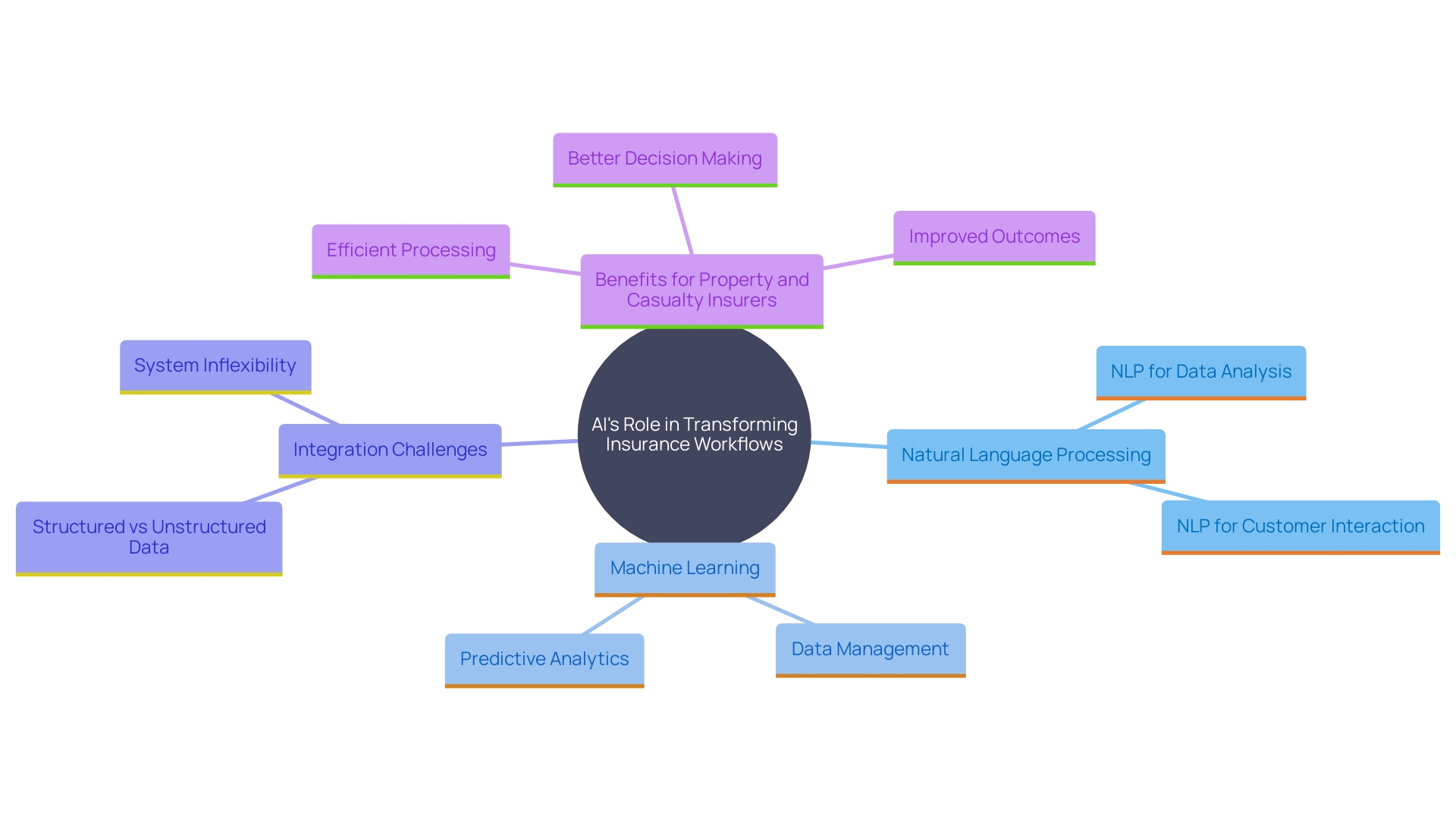
Enhancing Claims Accuracy and Efficiency with AI
AI significantly enhances accuracy by utilizing advanced data validation methods, cross-referencing information from various sources to reduce human errors and guarantee data integrity. This meticulous approach ensures that requests are processed based on precise and verified information. Additionally, AI algorithms excel in analyzing patterns and trends, allowing them to predict the probability of requests being legitimate or fraudulent. According to a Capgemini report, organizations that have adopted AI for automated decision-making have seen notable gains in speed and reduced expenses, outperforming their peers. By enhancing accuracy, insurers can make well-informed decisions, thus driving overall efficiency and productivity in their operations.
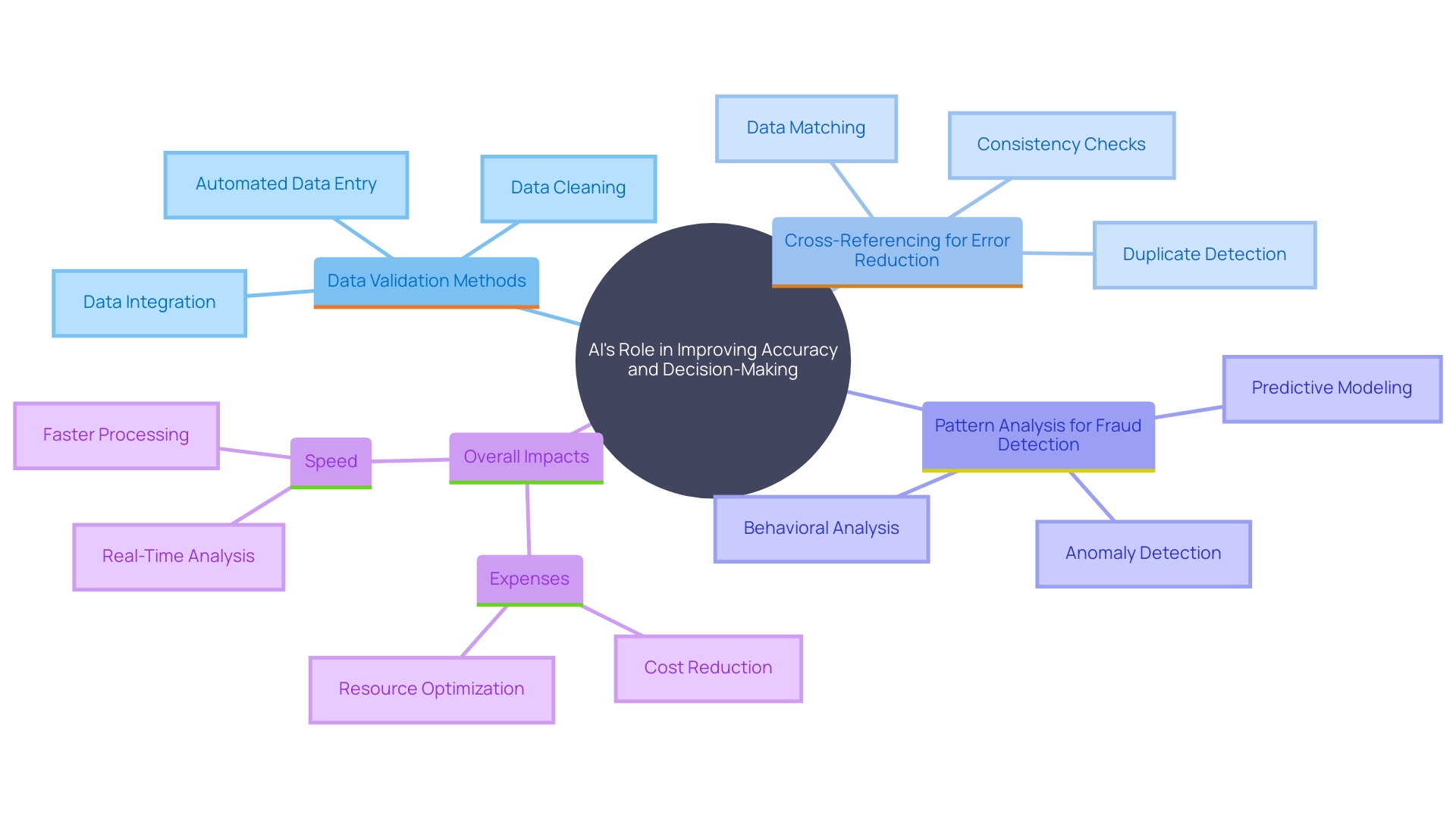
Challenges and Solutions in Implementing AI in Insurance Claims
The incorporation of AI into claims processing provides transformative advantages but also introduces several challenges. Tackling privacy issues is crucial. Recent studies highlight that balancing technological innovation with well-defined regulations is essential to ensure sustainable digital transformations within the sector. This balance helps build trust and protects user information, reducing privacy risks.
Integration with legacy systems is another significant hurdle. The coverage sector frequently handles extensive volumes of varied organized and unorganized information. Traditional systems struggle to manage this complexity efficiently. AI and machine learning can mitigate these issues by effectively prioritizing and processing data, but transitioning from outdated infrastructure requires careful planning and investment.
Employee resistance to change is a common obstacle. Clear and transparent communication about the benefits and impacts of AI can help address this resistance. Investing in comprehensive employee training is crucial, as it equips staff with the necessary skills to adapt to new technologies. A phased implementation strategy allows for gradual adaptation, making the transition smoother and less disruptive.
Overall, while AI adoption in insurance is challenging, it holds the promise of significantly improving operational efficiency. By focusing on transparent communication, robust training programs, and phased implementation, insurers can successfully navigate these challenges and harness the full potential of AI.
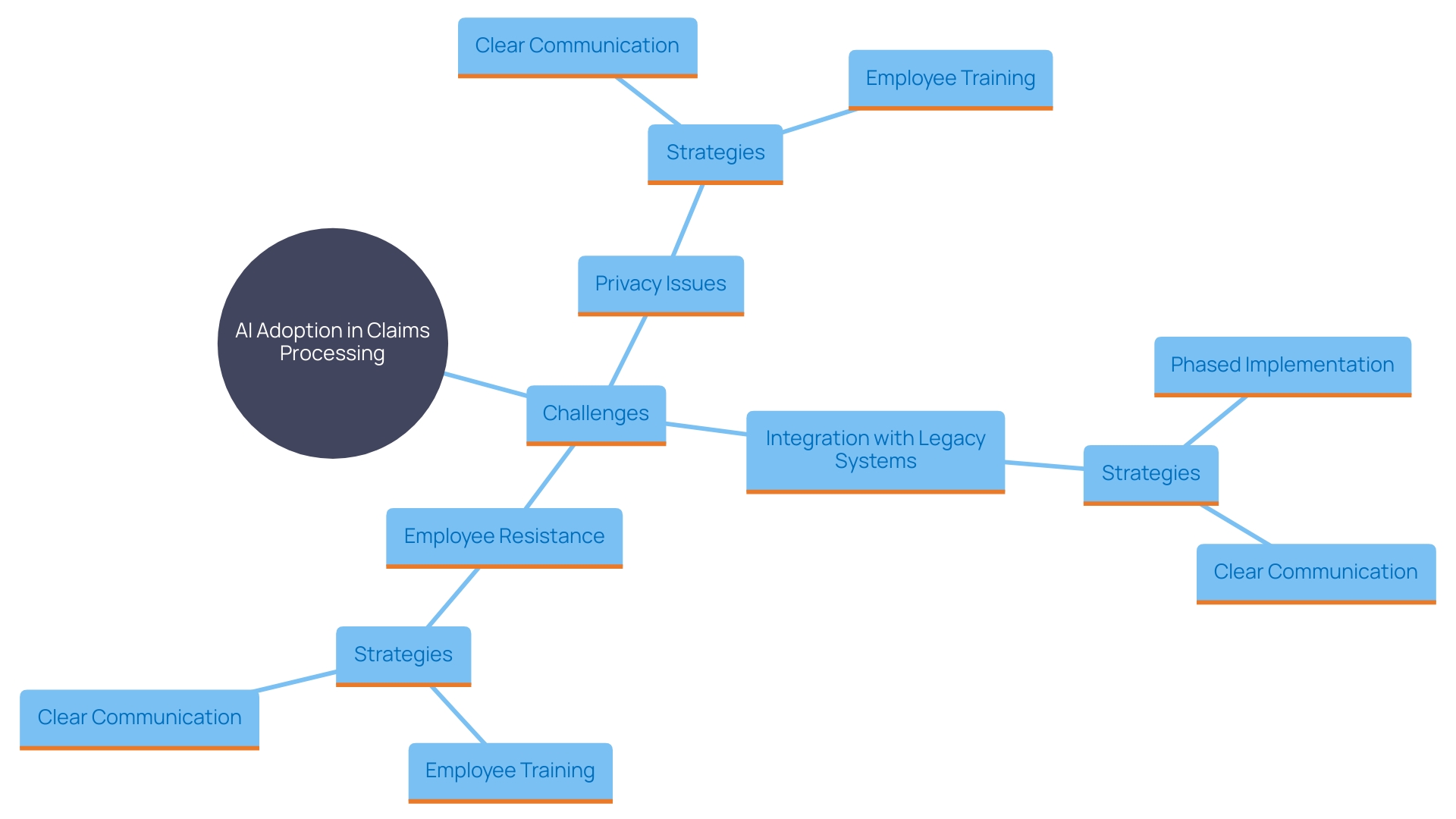
Conclusion
The integration of Artificial Intelligence in insurance claims management presents a transformative opportunity for the industry. By automating routine tasks and leveraging advanced analytics, AI enhances efficiency and accuracy, allowing insurers to process claims faster and improve customer satisfaction. The significant reduction in operational costs and the ability to detect fraud early are compelling reasons for the industry to embrace these technologies.
Despite the clear benefits, the path to full AI adoption is not without its challenges. Data privacy concerns, integration with legacy systems, and employee resistance are hurdles that require strategic solutions. Establishing robust governance frameworks and prioritizing transparent communication can build trust and facilitate smoother transitions.
Furthermore, investing in employee training ensures that staff are equipped to adapt to new technologies, ultimately driving better decision-making and operational outcomes.
In conclusion, while the journey toward AI-driven efficiency in insurance claims management may be complex, the potential rewards are substantial. By addressing the challenges head-on and focusing on sustainable implementation strategies, insurers can unlock the full capabilities of AI, leading to enhanced accuracy, streamlined processes, and improved profitability. Embracing this digital transformation will not only benefit individual organizations but also elevate the industry as a whole, paving the way for a more innovative and efficient future.
Introduction
In the ever-evolving landscape of insurance, traditional claims processing methods face mounting challenges that hinder efficiency and customer satisfaction. Manual data entry, extensive paperwork, and prolonged response times result in high error rates and increased operational costs. To navigate these complexities, forward-thinking companies are embracing automation technologies to transform their claims processing systems.
This article explores the pivotal role of AI and automation in revolutionizing the insurance sector, highlighting real-world case studies and the substantial benefits of automated claims processing. By examining the key technologies driving this transformation, such as Optical Character Recognition (OCR), Natural Language Processing (NLP), and Robotic Process Automation (RPA), the discussion will underscore how insurers can achieve remarkable improvements in efficiency, accuracy, and customer experience. Moreover, the insights and best practices shared will guide organizations on their journey to digital transformation, ensuring they remain competitive in an increasingly demanding market.
Challenges in Traditional Claims Processing
Traditional claims processing is plagued by manual data entry, extensive paperwork, and prolonged response times, leading to inefficiencies and increased operational costs. This outdated approach lacks clarity, resulting in high error rates and reduced client satisfaction. The dependence on legacy systems further complicates the adaptation to changing client expectations and regulatory requirements. Forward-thinking companies are now turning to automation to address these challenges. For example, Cognizant’s collaboration with Alm. Brand Group in Denmark is a testament to the transformative potential of automation. By automating various insurance policies and administrative tasks, they aim to enhance efficiency, improve customer experience, and boost competitiveness. As emphasized by industry specialists, AI-driven technologies such as generative AI can greatly update the process by searching, generating, and summarizing information swiftly and precisely. This shift not only streamlines workflows but also enhances productivity and operational efficiency, fundamentally changing how insurers manage and process requests.
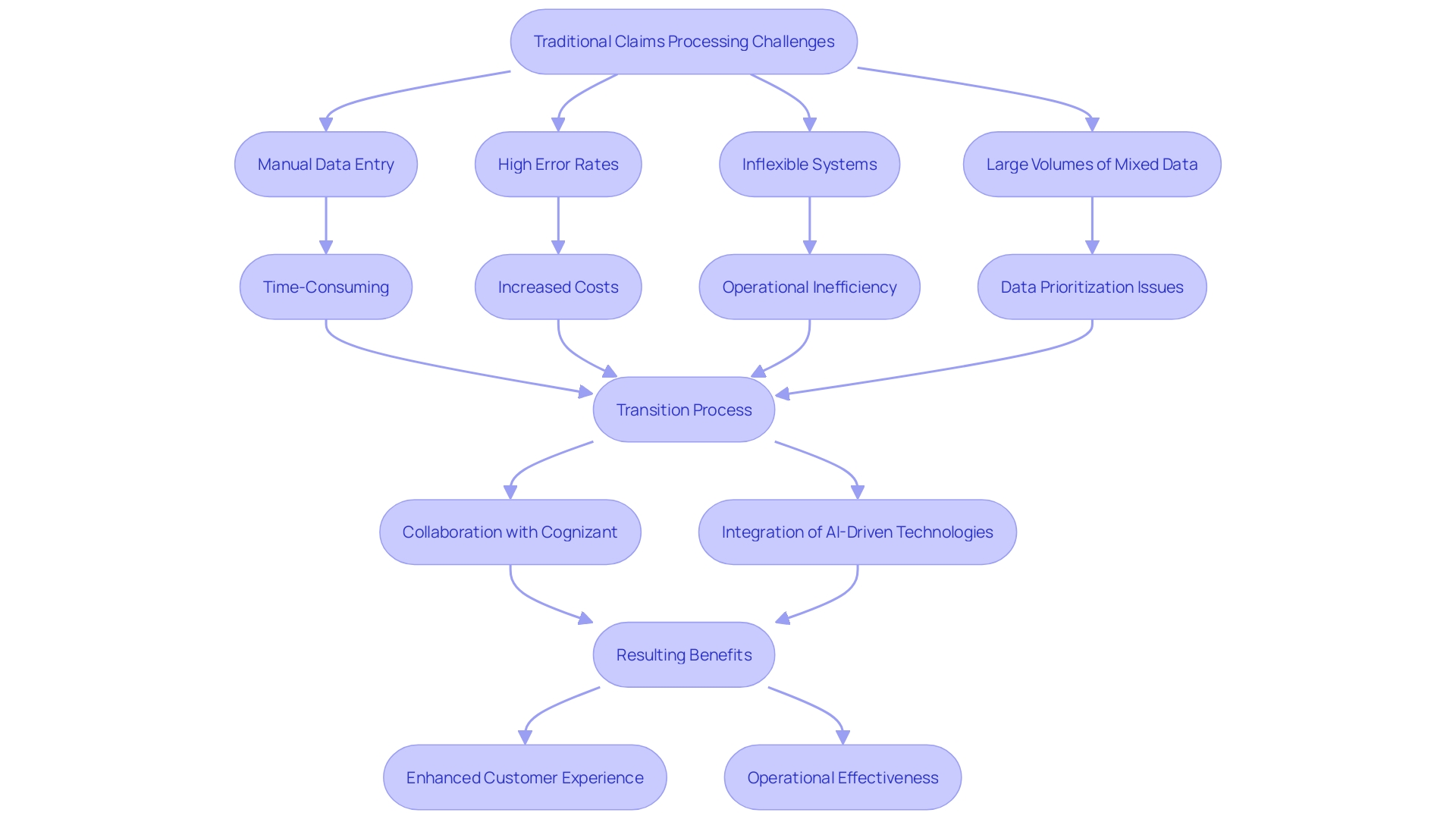
The Role of AI and Automation in Claims Transformation
Automation technologies, such as Robotic Process Automation (RPA) and Natural Language Processing (NLP), are pivotal in revolutionizing claims processing within the insurance sector. By leveraging these tools, insurers can automate repetitive tasks like data extraction and validation, significantly reducing human error and boosting accuracy. This shift allows employees to concentrate on more intricate tasks that demand critical thinking and direct customer interaction.
The influence of AI in the coverage sector is already evident. Research indicates that although 91% of insurance leaders have initiated AI proofs of concept, only 36% have fully integrated these technologies across their operations. Yet, those who have implemented AI, including RPA and NLP, report substantial improvements in speed, cost reduction, and goal achievement. For instance, underwriters traditionally spend over 40% of their time on administrative tasks, but with automation, this time is significantly cut down, allowing them to focus more on core activities like risk assessment and premium calculation.
Moreover, automated data entry powered by machine learning and NLP can lead to a 95% reduction in data entry time. This efficiency not only improves operational performance but also enables adjusters to provide superior service to clients. As the generative AI revolution progresses, the sector stands to benefit greatly from embracing these advanced technologies.
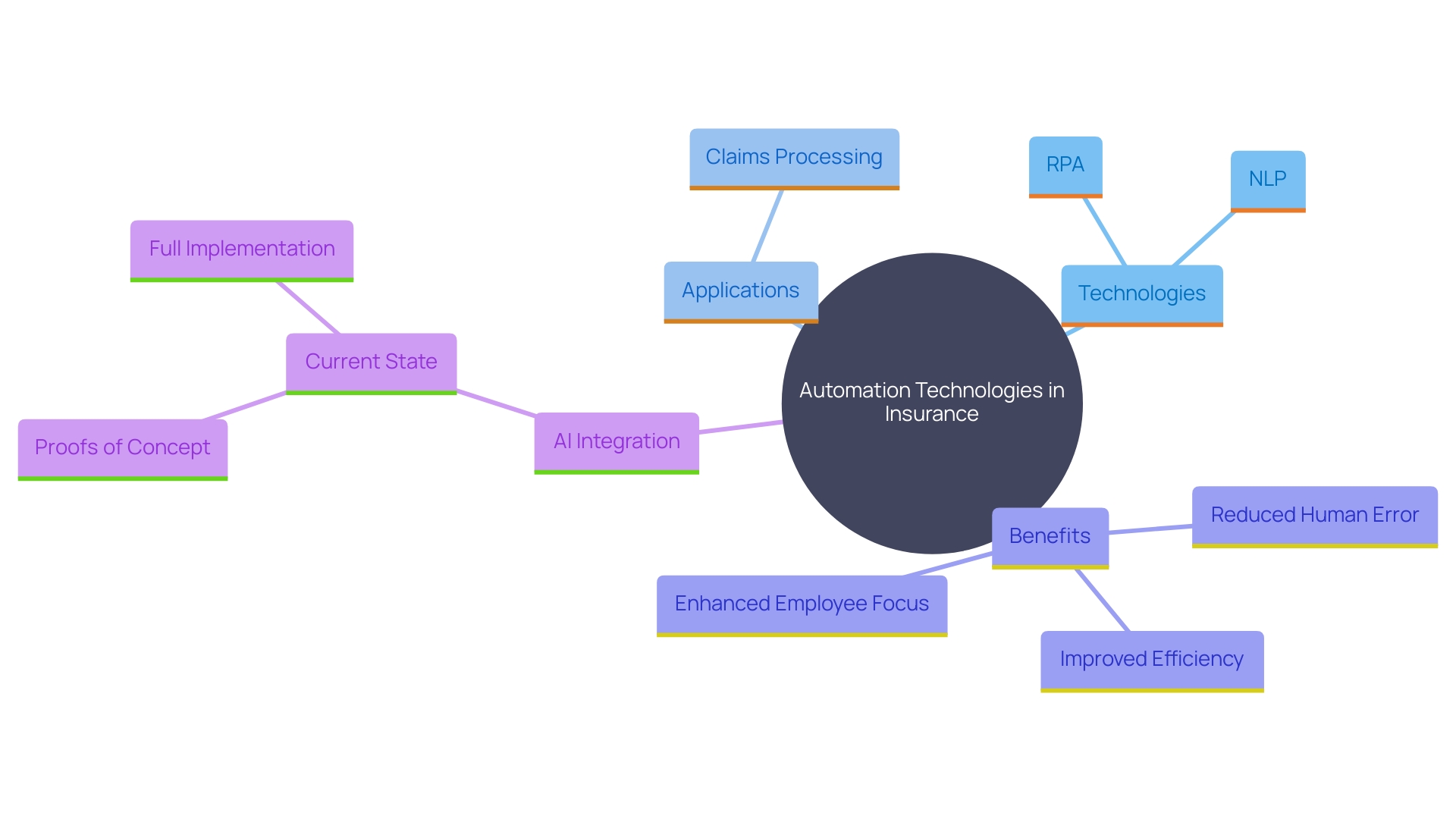
Case Study: A Nordic Insurance Company’s Automation Journey
A prominent Nordic insurance firm embarked on a journey to modernize its processing system to enhance efficiency and customer satisfaction. By conducting a comprehensive analysis of their current processes, they pinpointed critical areas ripe for automation. ‘Implementing Robotic Process Automation (RPA) and integrating machine learning algorithms led to a significant achievement: a reduction of over 40% in the average time taken to process requests.’. This transformation was made possible through a collaborative effort between the IT and claims departments, ensuring a smooth transition and continuous improvement.
‘The strides made by this coverage provider echo the broader industry trends.’. For instance, Cognizant’s collaboration with Alm. Brand Group in Denmark intends to automate various traditionally manual and repetitive tasks, including policy management and administrative duties, to increase efficiency and improve customer experience. Such initiatives underscore the potential of automation to revolutionize the sector by streamlining workflows and driving productivity gains.
Automation in underwriting also showcases similar benefits. By leveraging AI and rule-based systems, insurers can quickly analyze and process data, eliminating the need for tedious manual work and significantly enhancing operational efficiency. A broad survey highlights that 77% of senior executives are in some stage of adopting AI, reflecting a widespread recognition of its transformative potential.
These advancements are part of a larger shift within the sector towards embracing modern technologies to remain competitive and meet changing client expectations. With automation, firms in the sector not only enhance their operational efficiency but also establish a new benchmark for customer service in the digital era.
Benefits of Automated Claims Processing: Efficiency and Customer Satisfaction
The implementation of automation in processing has transformed the Nordic insurance company, achieving remarkable results. Utilizing generative artificial intelligence (Gen AI) and intelligent document processing (IDP), the company significantly reduced turnaround times and improved precision in managing requests. According to a survey by Sollers Consulting and Ipsos, quicker claims processing is a critical priority for clients, with 52% to 63% citing prompt responses as a top expectation. Automation assisted the company in fulfilling these demands, resulting in a 30% rise in favorable feedback and enhanced satisfaction scores. ‘The implementation of AI not only streamlined operations but also provided valuable insights by analyzing patterns, thus improving the overall customer experience.’.
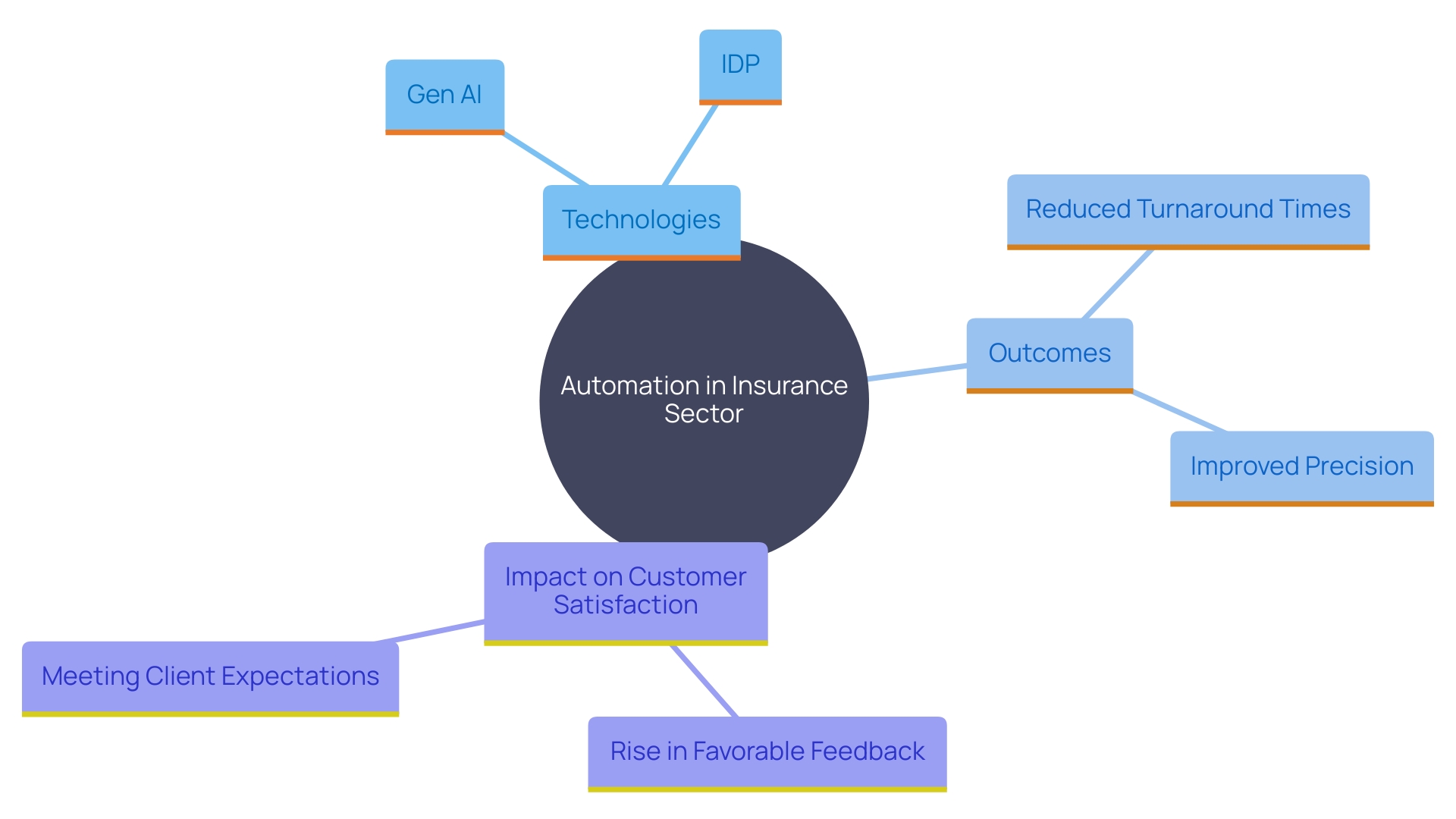
Key Technologies for Claims Automation: OCR, NLP, and RPA
Successful claims process automation leverages several key technologies to optimize efficiency and accuracy. Optical Character Recognition (OCR) is essential in extracting information from various document types, including handwritten notes, tax returns, and medical records, transforming them into digitally editable formats. This technology is commonly utilized in healthcare and coverage areas for automated information entry and document digitization, minimizing manual mistakes and time usage.
‘Natural Language Processing (NLP) plays a crucial role in comprehending unstructured information, such as client communications and insurance claims, facilitating more accurate and efficient processing.’. By transforming complex text into organized information, NLP improves the capacity to analyze and respond to customer inquiries promptly.
Robotic Process Automation (RPA) automates repetitive, rule-based tasks, such as input and validation, by seamlessly integrating information across different systems. This integration is particularly beneficial in the underwriting process, where it accelerates workflows, minimizes errors, and boosts productivity.
Integrating these technologies creates a strong structure for effective management of requests, allowing organizations to handle substantial amounts of information precisely and quickly. As highlighted by industry experts, the adoption of AI and machine learning further enhances these capabilities, addressing the challenges associated with mixed structured and unstructured data, ultimately driving better decisions and outcomes.
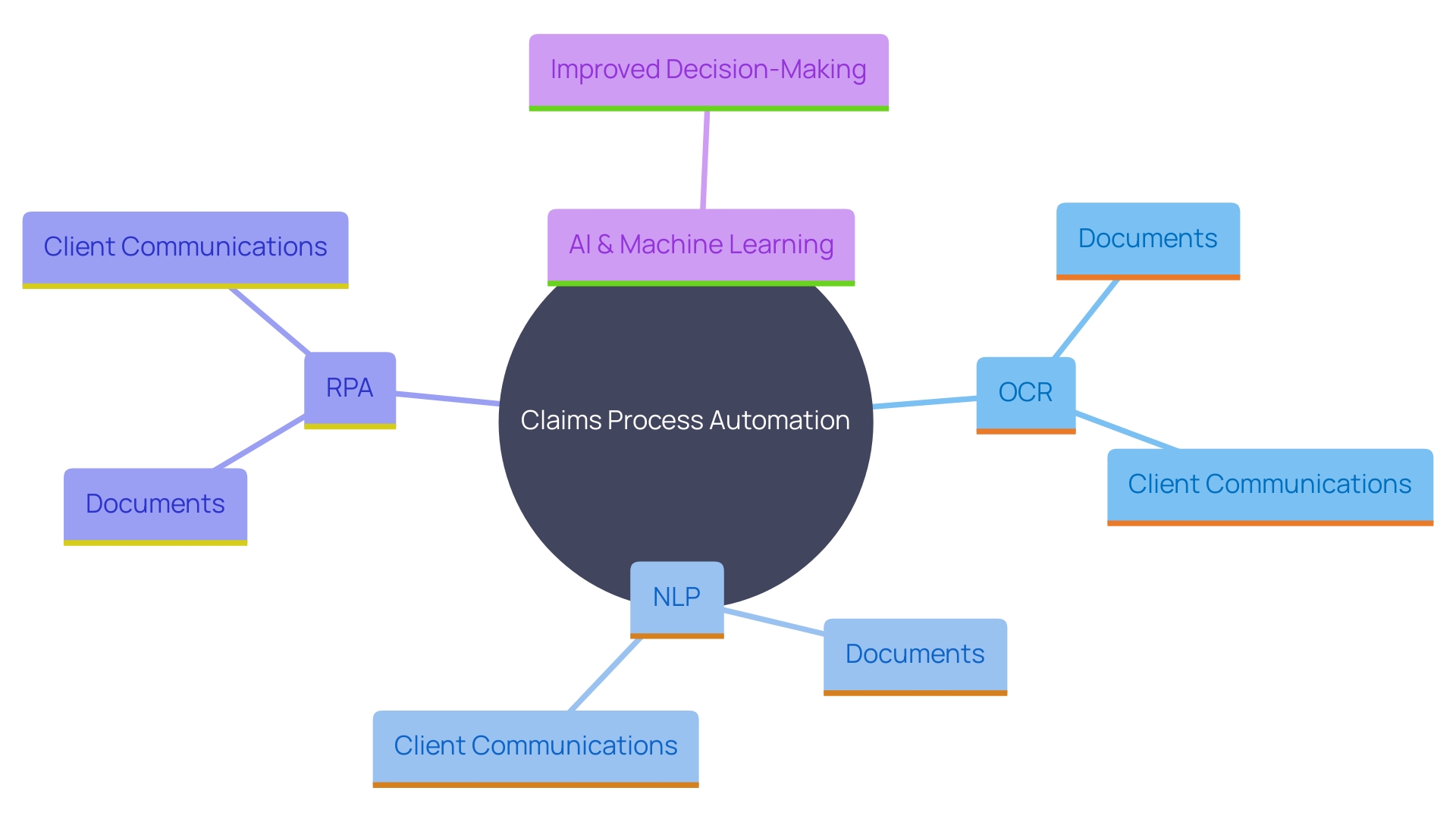
Results and Impact: Reduced TAT, Improved Accuracy, and Enhanced Customer Experience
The Nordic insurance firm’s implementation of intelligent document processing (IDP) has transformed its processing operations. By utilizing this technology, the company reduced the average turnaround time (TAT) from 15 days to just 8 days while achieving a 25% improvement in the precision of assessment results. This transformation highlights the potential of IDP, which assists in extracting vital information from unstructured data, allowing insurers to handle requests more efficiently and effectively.
The enhanced accuracy and speed in processing claims have significantly improved the customer experience, resulting in higher retention rates and increased trust in the company’s services. This aligns with the broader trend in the insurance industry, where companies are increasingly adopting AI and automation to gain a competitive edge. According to Forrester, the right solutions can provide a substantial advantage, particularly in data analysis, which is crucial for success.
Moreover, the benefits of automation extend beyond operational performance to customer satisfaction. As the technology continues to evolve, its impact on the sector is expected to grow, promising even greater efficiency, accuracy, and overall operational effectiveness. This case demonstrates that with a clear vision and the right tools, companies can lead the way in digital transformation, reaping significant rewards in the process.
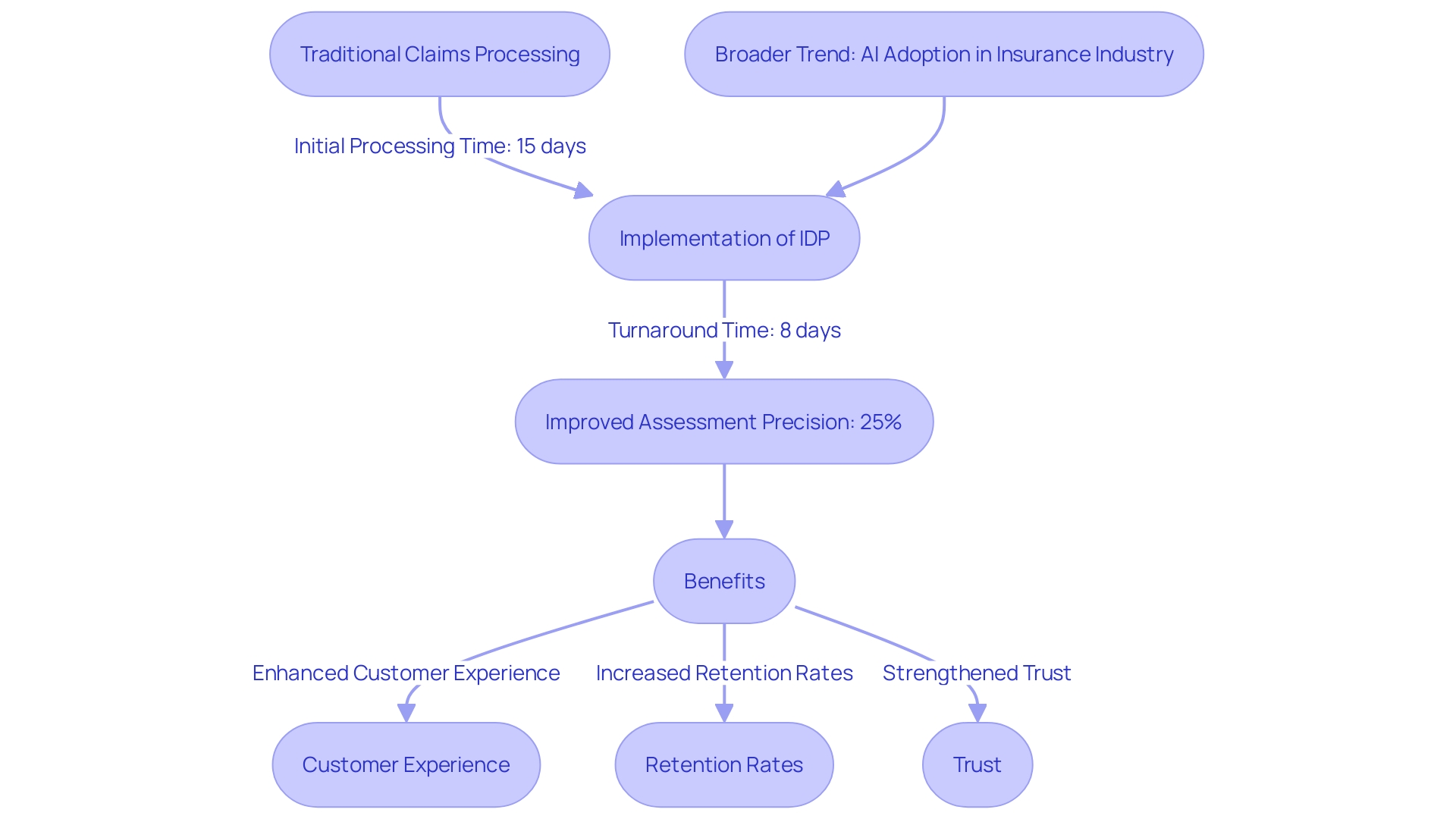
Lessons Learned and Best Practices for Claims Process Automation
Automating claims processing provides significant insights for organizations embarking on similar ventures. A notable example from the risk management sector is the transformation observed in underwriting processes. Traditionally manual and error-prone, underwriting has been revolutionized by automation, enhancing productivity and operational efficiency. This shift underscores the importance of establishing a strong digital core, as evidenced by the success of platforms like Salesforce and Microsoft in facilitating customer service and internal collaboration.
Key best practices for automation initiatives include engaging stakeholders early, maintaining clear communication, and continuously monitoring performance metrics. For example, in the area of AI adoption, 91% of financial services and protection leaders have launched AI proofs of concept, though only 36% have implemented them widely across business functions. This highlights the need for a balanced approach, combining technological innovation with well-defined rules and regulations to ensure sustainable digital transformations.
Fostering a culture of innovation and adaptability is crucial to fully leverage the benefits of automation. Investing in employee training is also essential, equipping staff to manage new technologies effectively. This approach not only improves job satisfaction but also addresses the challenges of processing large volumes of complex data, as seen in the case of AI and machine learning applications in the insurance industry. Through these strategies, organizations can drive better decisions and outcomes, ultimately achieving greater efficiency and productivity.

Conclusion
The transformation of claims processing through automation and AI technologies marks a significant shift in the insurance industry. Traditional methods, characterized by manual data entry and long response times, have proven inadequate in meeting modern customer expectations. By embracing automation, insurers can streamline workflows, enhance accuracy, and significantly reduce operational costs.
The collaboration between companies like Cognizant and Alm. Brand Group exemplifies how leveraging automation can lead to remarkable improvements in efficiency and customer satisfaction.
Key technologies such as Optical Character Recognition (OCR), Natural Language Processing (NLP), and Robotic Process Automation (RPA) serve as vital components in this transformation. These tools not only minimize human error but also free up employees to focus on more complex tasks that require critical thinking and direct customer engagement. As demonstrated by the Nordic insurance company’s successful implementation of intelligent document processing, organizations can achieve substantial reductions in turnaround times and improvements in claim accuracy, ultimately leading to higher customer retention and satisfaction.
The lessons learned from these automation initiatives underscore the importance of strategic planning, stakeholder engagement, and continuous performance monitoring. Fostering a culture of innovation and investing in employee training are crucial for maximizing the benefits of automation. As the insurance sector continues to evolve, those who adopt these advanced technologies will be well-positioned to meet the challenges of an increasingly competitive market while delivering exceptional service to their customers.
Introduction
In the rapidly evolving landscape of text recognition, understanding the nuances between Intelligent Character Recognition (ICR) and Optical Character Recognition (OCR) is crucial for optimizing operational efficiency. ICR and OCR serve distinct yet complementary purposes, each excelling in different aspects of text digitization. OCR specializes in converting printed text from various sources into machine-readable data, making it indispensable for tasks such as automated data entry, document digitization, and text extraction from images.
It significantly enhances workflows across industries by reducing manual data entry errors and improving accessibility.
Conversely, ICR takes text recognition a step further by accurately interpreting handwritten text, accommodating diverse writing styles and nuances. This capability is especially valuable in sectors like healthcare, where managing handwritten patient records and prescriptions is a common challenge. By automating the digitization of such documents, ICR not only streamlines operations but also minimizes errors, thereby enhancing overall efficiency.
As the demand for precise and efficient text recognition technologies grows, both ICR and OCR continue to play pivotal roles in transforming how industries handle and process textual data.
Key Differences Between ICR and OCR
ICR (Intelligent Character Recognition) and OCR (Optical Character Recognition) are essential tools in character recognition, each fulfilling different roles. OCR excels in converting printed material from sources like books, receipts, and old letters into machine-readable data. This innovation is extensively utilized in automated data entry, document digitization, extraction of information from images, invoice processing, form recognition, and improving accessibility for visually impaired individuals. By converting both handwritten and typed material from various sources, including images and scanned documents, OCR remains a crucial component of modern technology, aiding in tasks such as reading product identifiers on assembly lines to update inventory tracking systems.
On the other hand, ICR progresses beyond OCR by interpreting handwritten characters, accommodating various writing styles and nuances. This capability makes ICR particularly valuable in sectors where handwritten notes are prevalent, such as healthcare. In this domain, managing patient records, medical histories, and prescriptions can be laborious and error-prone when done manually. ICR automates the digitization of these records, streamlining workflows and reducing errors. Both ICR and OCR are essential to the changing environment of character recognition, tackling distinct challenges and improving operational efficiency across various industries.
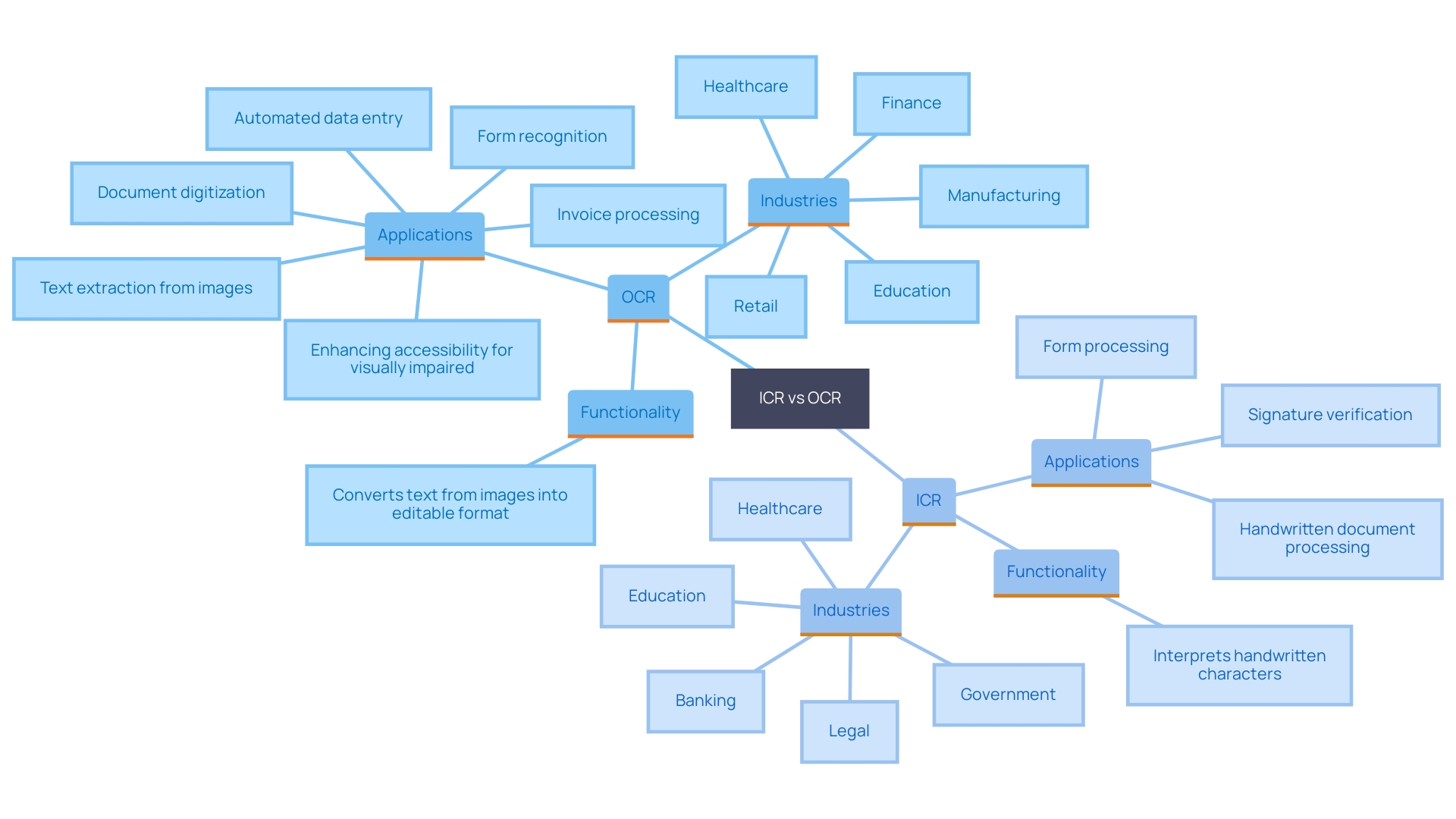
How ICR Works: Machine Learning and AI
Intelligent Character Recognition (ICR) leverages advanced machine learning algorithms and artificial intelligence to significantly enhance its accuracy and adaptability. By training on extensive and diverse datasets of handwritten characters, ICR systems develop the ability to recognize various symbols and writing styles. This training process allows ICR to continuously improve its performance, effectively addressing the variations in handwriting that often challenge traditional Optical Character Recognition (OCR) systems. The AI component of ICR goes beyond simple character recognition; it can analyze context and semantics, further boosting its recognition capabilities.
A recent example of such advancements comes from a team of researchers at MBZUAI, who have developed an AI program capable of learning an individual’s handwriting style and producing writing that mimics their hand. ‘This innovation, which has received a patent from the United States Patent and Trademark Office, has the potential to assist individuals who are unable to write due to injuries.’. It can also generate large amounts of data to improve machine learning models for processing handwritten scripts. Hisham Cholakkal, an assistant professor of computer vision at MBZUAI, highlighted the project’s origins in curiosity about whether a model could learn and replicate someone’s handwriting style from just a few samples.
Moreover, the project underscores the importance of a global receptive field in understanding handwriting. As Fahad Khan explained, analyzing the entire content allows the model to grasp how characters are ligated, letters are connected, and words are spaced. This holistic approach, which utilizes a transformer-based method, has proven effective in English and is being explored for other languages like Arabic, known for its complex letter connections in handwritten form.
These advancements underscore the transformative capabilities of ICR innovations, rendering them essential for contemporary uses that necessitate precise and adaptive handwritten character recognition.
How OCR Works: Pattern Recognition and Image Processing
Optical Character Recognition (OCR) technology utilizes advanced pattern recognition and image processing methods to transform printed or handwritten characters into a digitally editable format. Initially, the system acquires images through scanning or capturing digital photos. Preprocessing steps, such as noise reduction and binarization, enhance the visibility of the written content. The core function of OCR involves segmenting written content into individual characters and recognizing each based on its shape, comparing it to a predefined library. While this method excels with standardized fonts, it often faces challenges with irregular or poorly printed text.
OCR is indispensable in various sectors. For instance, in healthcare, cloud-based OCR automates digitizing handwritten patient records, significantly reducing manual entry errors and saving time. This innovation also finds extensive applications in automated data entry, document digitization, and invoice processing. As we navigate the age of digital transformation, OCR continues to be a crucial component for efficient data extraction and analysis, revolutionizing how we handle vast amounts of textual data.
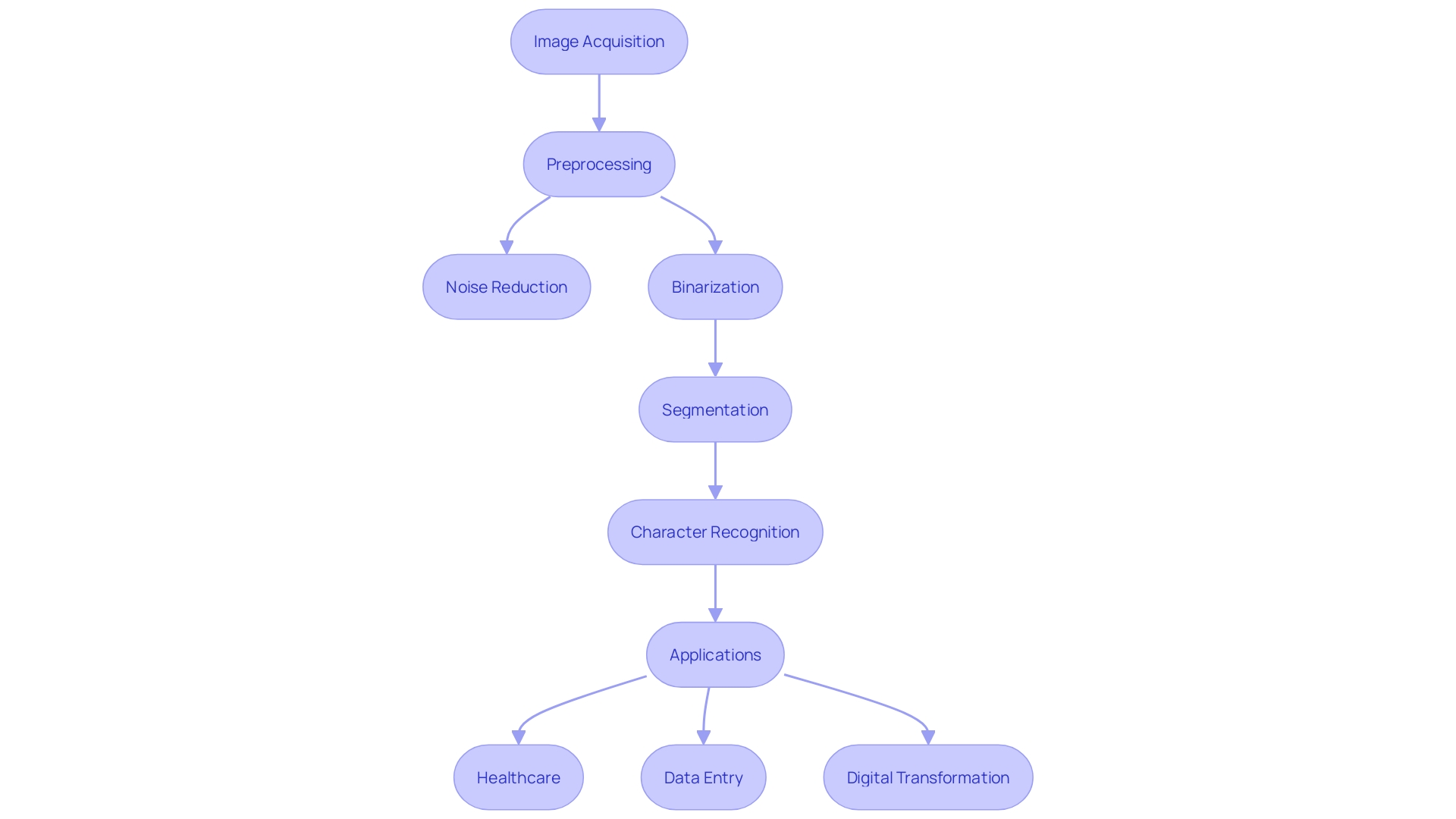
ICR Applications: Handwritten Text Recognition in Various Industries
ICR systems are transforming various sectors by converting handwritten information into digital form. In healthcare, it automates the digitization of patient records and prescriptions, significantly improving data accessibility, accuracy, and reducing administrative burdens. For instance, cloud-based OCR solutions can automate the transfer of handwritten notes into electronic health systems, cutting down on manual entry errors and saving time. This transformation is crucial, as healthcare providers often spend over 50% of their time on administrative tasks like writing visit notes, which can lead to burnout.
In the finance sector, ICR streamlines the processing of checks and forms, enhancing operational efficiency. Educational institutions also leverage ICR to automate the grading of handwritten exams, thereby reducing the administrative load and ensuring quicker, more accurate results. These applications highlight the versatility of ICR systems in addressing document processing challenges across various industries.
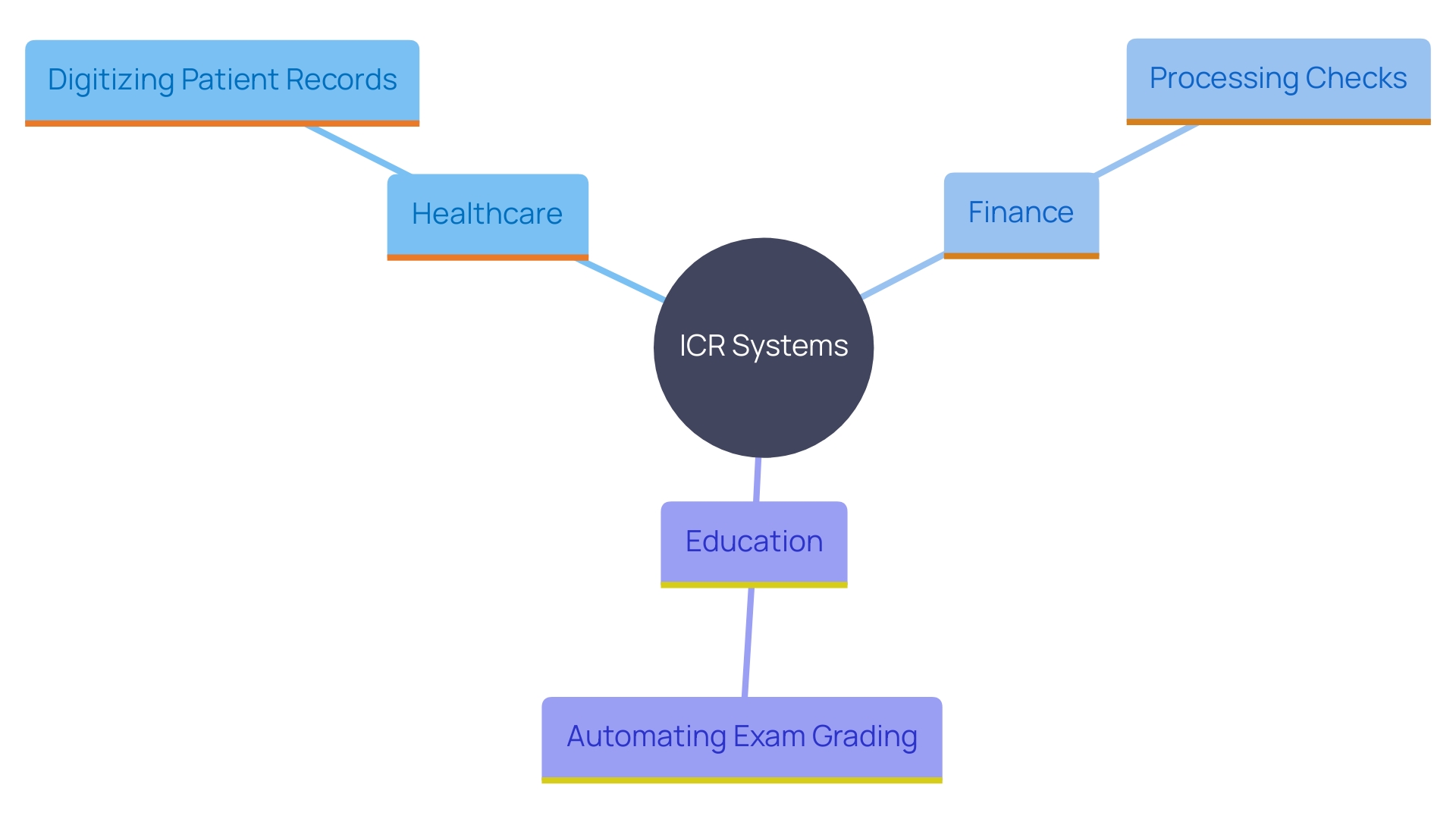
OCR Applications: Printed Text Recognition in Document Management
OCR methods have become a cornerstone in document management systems for digitizing printed materials, fundamentally altering how organizations handle data. By converting paper-based documents into searchable digital formats, OCR enhances both storage efficiency and retrieval speed, addressing the pressing need for quick access to vital information. ‘This innovation is particularly impactful in industries like legal and insurance, where it automates the processing of contracts, claims, and other text-heavy documents.’. This automation significantly reduces manual entry errors and improves turnaround times, leading to substantial efficiency gains and cost savings.
The healthcare sector also benefits immensely from OCR. Managing patient records, a traditionally laborious task prone to errors, has been revolutionized by cloud-based OCR. ‘This innovation automates the digitization of handwritten notes, medical histories, and prescriptions, streamlining workflows and enhancing the accuracy of patient data management.’.
Moreover, OCR contributes to environmental sustainability by reducing the dependency on paper. The recycled paper industry, for instance, highlights the potential for technological advancements to drive cost savings and sustainability. In the U.S., this industry generates approximately $90M in annual revenue and employs over 100,000 people, emphasizing the significant economic and environmental benefits of reducing paper consumption through OCR technology.
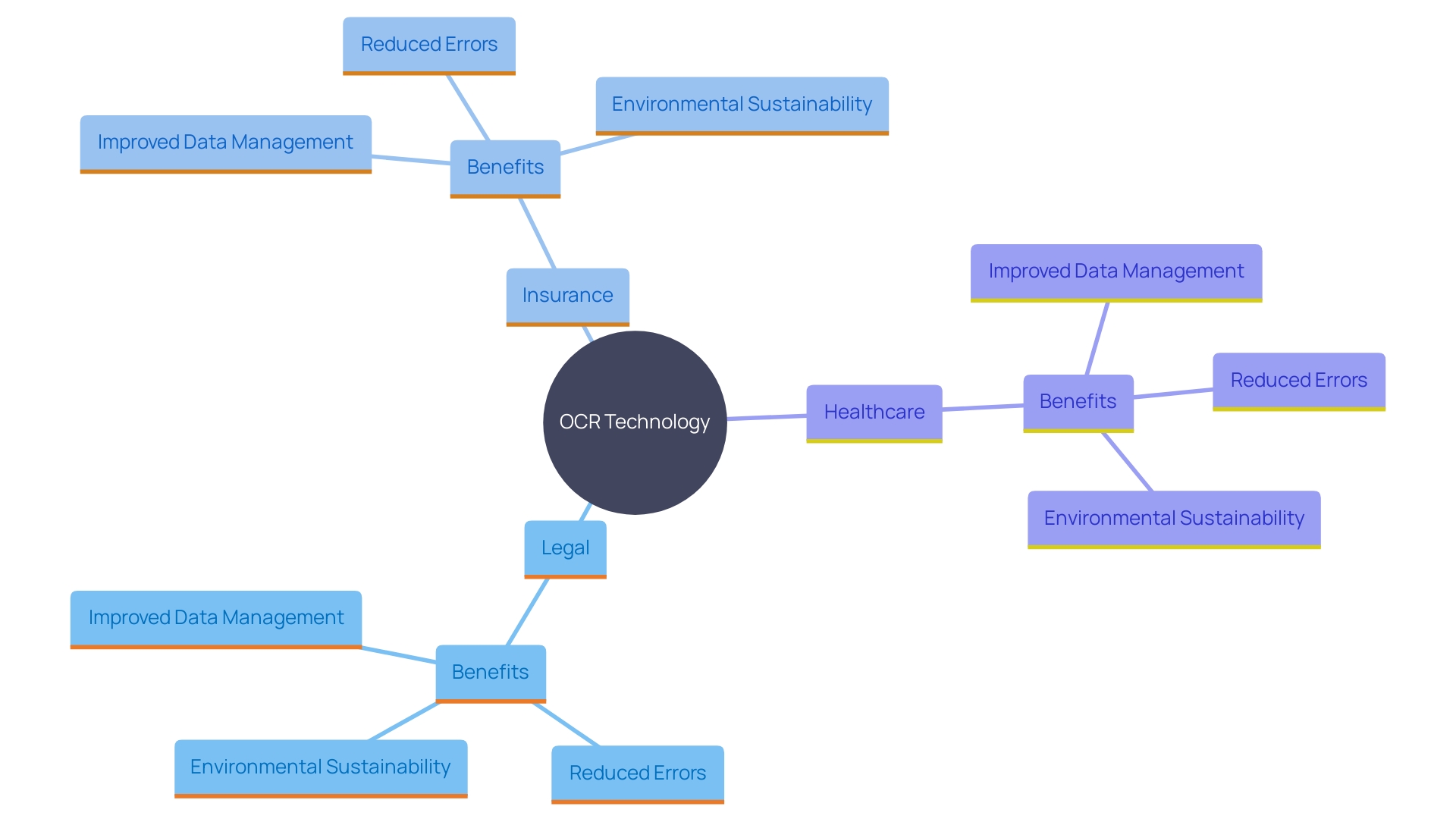
Comparing ICR and OCR: Accuracy, Cost, and Implementation
When comparing ICR and OCR, accuracy is a crucial element affected by the kind of content being processed. ICR excels in recognizing handwritten characters, making it invaluable for tasks like digitizing patient records in the healthcare sector. This process traditionally required manual entry, which was both time-consuming and error-prone. However, ICR’s advanced algorithms and the need for extensive training data often result in higher costs. On the other hand, OCR provides a more economical option for printed material recognition and is generally simpler to implement because of the wide range of available software solutions. Automating the digitization of documents such as invoices, contracts, and customer forms with OCR can lead to substantial efficiency gains and cost savings. Organizations must evaluate their particular requirements and the characteristics of the text they manage to identify the most appropriate solution. As one expert observed, ‘Manual data entry and document processing have long been costly drags on productivity and efficiency for organizations of all sizes.’ By utilizing the appropriate tools, businesses can significantly enhance their operational efficiency.
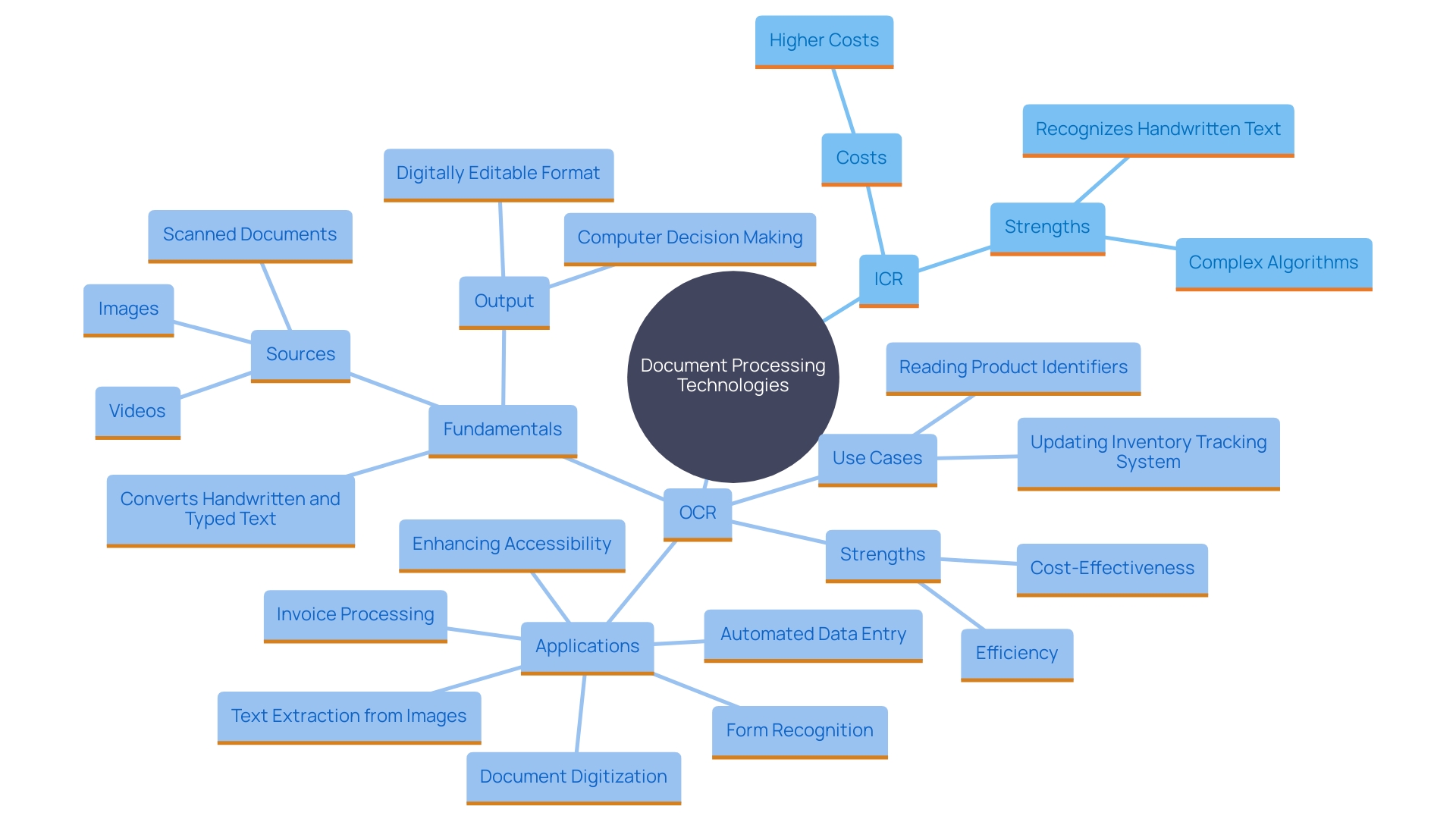
Choosing the Right Technology: ICR vs. OCR for Specific Needs
Selecting between ICR and OCR systems requires a comprehensive grasp of your organization’s document processing requirements. If your business primarily handles printed materials such as invoices, contracts, and reports, OCR can be a cost-effective solution. OCR excels at converting printed material into machine-readable data, significantly reducing the time IT employees spend searching for and collating information, which can cost up to $120 per employee per day.
However, for organizations managing a high volume of handwritten content, such as medical notes or legal documents, ICR systems are essential. ICR offers superior adaptability to varied handwriting styles and layouts, ensuring that even the most complex documents are accurately digitized. In the healthcare sector, for instance, the transition to cloud-based OCR and ICR has revolutionized the digitization of patient records, automating a process that was previously time-consuming and prone to errors.
Understanding the diverse formats and layouts of your documents is critical. Enterprise content can include plain text, formatted text, tables, charts, and handwritten notes, each presenting unique challenges for data extraction. By leveraging AI and machine learning, modern document processing solutions can handle this complexity, ensuring that your data is accurately captured and efficiently processed.
Integrating advanced document AI solutions can drastically minimize the manual effort needed for data entry and document processing, providing substantial efficiency improvements and cost reductions. As unstructured data is projected to make up over 80% of enterprise data by 2023, selecting the right technology—ICR for handwritten content and OCR for printed materials—will be pivotal in streamlining your operations and enhancing productivity.

Best Practices for Implementing ICR and OCR
To ensure the successful application of ICR and OCR methods, organizations should adopt several best practices. Begin with a comprehensive analysis of document workflows to pinpoint areas where automation can deliver the most significant benefits. For instance, in the healthcare sector, managing handwritten patient records has traditionally been a labor-intensive process. However, cloud-based OCR has revolutionized this by automating the digitization of medical histories and prescriptions, drastically reducing errors and saving time.
High-quality input images are essential for both ICR and OCR systems. Poor image quality can severely impact accuracy, so it’s essential to maintain clear and precise document scans. Regularly updating and training ICR systems with new handwriting samples is another crucial step. This continuous learning process ensures the system remains effective over time.
Gradual integration of these technologies is advisable. This approach allows teams to adapt incrementally, reducing resistance to change and facilitating smoother transitions. Continuous measurement of effectiveness is also vital. By monitoring performance metrics regularly, organizations can make necessary adjustments to optimize efficiency and productivity.
A case in point is ICL, a multi-national manufacturing and mining corporation. ICL faced challenges with manual monitoring of equipment in harsh conditions. Implementing automated document processing helped streamline their monitoring processes, reducing costs and improving accuracy. Similarly, intelligent document processing (IDP) has brought transformative changes to industries like insurance, by automating the processing of unstructured and semi-structured documents, leading to incredible efficiencies and reduced human errors.
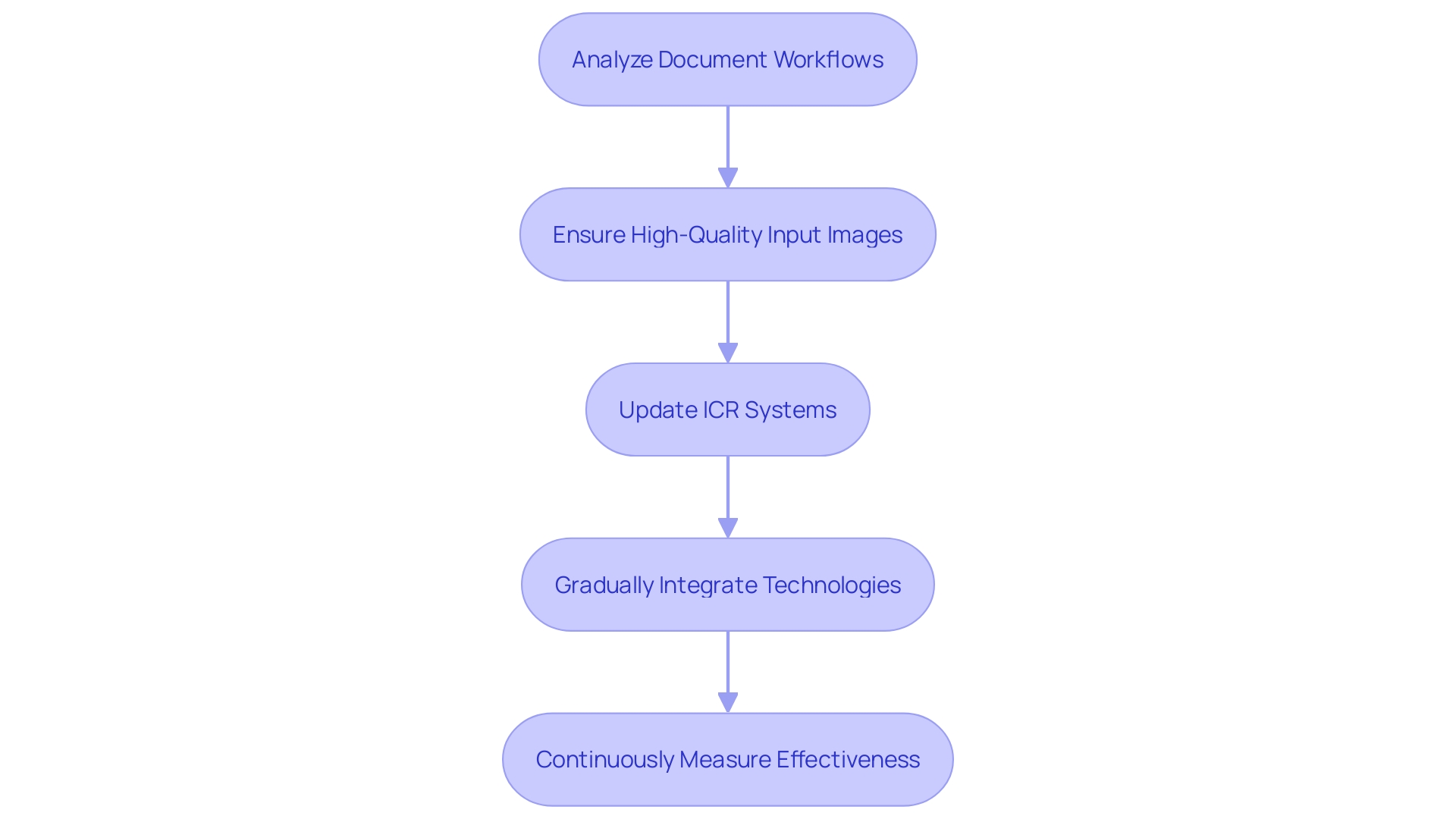
Conclusion
The exploration of Intelligent Character Recognition (ICR) and Optical Character Recognition (OCR) highlights the unique strengths and applications of each technology in enhancing operational efficiency across various industries. OCR remains a vital tool for converting printed text into machine-readable formats, streamlining tasks such as document digitization, automated data entry, and improving accessibility. Its broad applicability makes it indispensable in sectors like healthcare, legal, and finance, where accurate data management is crucial.
In contrast, ICR takes text recognition to a new level by effectively interpreting handwritten text. This capability is particularly valuable in environments where handwritten notes are common, such as in healthcare and education. ICR not only automates the digitization of handwritten documents but also adapts to diverse writing styles, significantly reducing manual errors and administrative burdens.
When choosing between ICR and OCR, organizations must consider their specific needs. For those primarily dealing with printed material, OCR offers a cost-effective and efficient solution. However, for businesses managing a high volume of handwritten documents, ICR is essential for ensuring accuracy and adaptability.
Implementing these technologies requires careful planning, high-quality input, and a commitment to continuous improvement to maximize their benefits.
By leveraging the appropriate text recognition technology, organizations can streamline their operations, enhance productivity, and ultimately drive significant cost savings. Understanding the distinct advantages of ICR and OCR empowers businesses to make informed decisions that align with their operational goals, paving the way for a more efficient future.
Introduction
In an era where efficiency and speed are paramount, decision automation is revolutionizing the way businesses operate. Leveraging advanced algorithms and machine learning, this technology enables organizations to make swift, data-driven decisions without human intervention. From enhancing supply chain management at Renault to improving operational efficiency at Amgen, decision automation is proving to be a game-changer across industries.
This article delves into the core aspects of decision automation, exploring its benefits, applications, and the strategic role it plays in driving business efficiency. By understanding and implementing decision automation, companies can not only streamline their processes but also empower their workforce to focus on innovation and growth, ensuring they stay ahead in a competitive landscape.
What is Decision Automation?
The use of advanced automated systems and algorithms enables business choices to be made without human involvement. By employing predefined rules, machine learning, and analytics, this technology can analyze extensive datasets to produce outcomes aligned with strategic objectives. AI-driven decision-making is skilled at recognizing concealed patterns and trends within extensive amounts of information, providing insights into market developments, consumer behavior, and operational effectiveness that would be challenging to detect by hand.
For example, Renault’s supply chain department has utilized a data lake to structure and analyze its processes, enabling precise control over factory supplies. This approach, combined with AI, has significantly enhanced their decision-making capabilities. According to Ludovic Doudard, General Manager Process Engineering Supply Chain at Renault, this digital foundation has allowed them to develop a control tower that connects with partners and optimizes their operations.
By streamlining decision-making processes, organizations can drastically reduce the time spent on analysis and improve response times. Data from a Canadian survey suggest that 6.1% of enterprises have incorporated AI into their production processes, highlighting a rising trend towards mechanization. Effective managerial decision-making, supported by AI, not only influences growth and partnerships but also enhances overall operational efficiency.
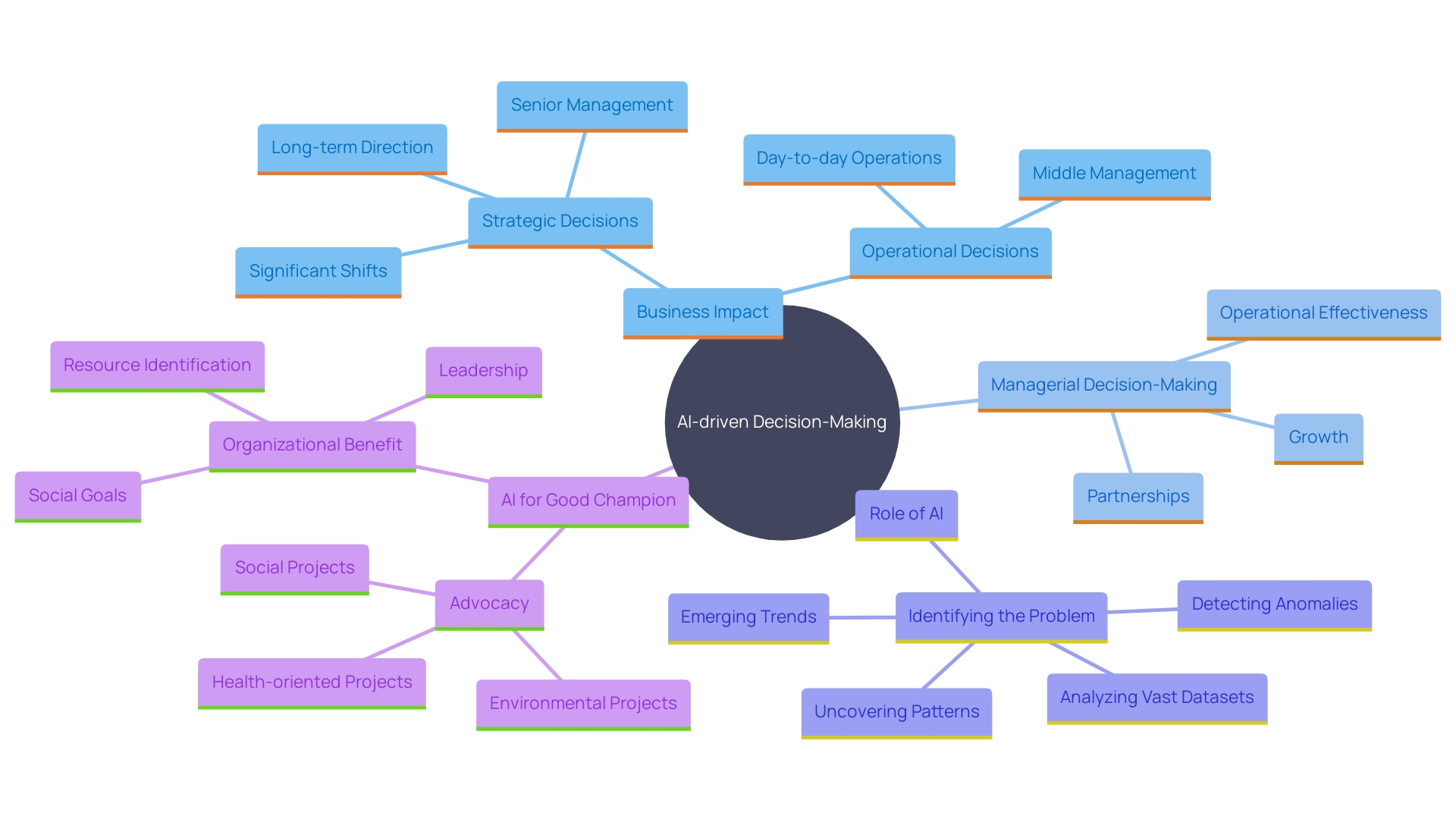
Key Aspects of Decision Automation
Decision mechanization is transforming enterprise procedures across different industries. Central to this transformation are rule-based logic, machine learning capabilities, and seamless integration with existing organizational systems. Rule-based reasoning, which has been essential to mechanization for decades, allows organizations to create and uphold specific rules for decision-making. According to Gartner, a Business Rules Engine (BRE) allows companies to ‘explicitly define, analyze, execute, audit and maintain a wide variety of business logic, collectively referred to as rules.’ This system ensures that actions, such as authorizing credit card transactions or processing insurance claims, are automatically executed once predefined conditions are met.
Machine learning further enhances automation of choices by enabling systems to learn from data patterns over time. This capability is crucial for identifying and defining problems more accurately. AI algorithms analyze vast datasets to reveal underlying patterns, anomalies, or emerging trends that might not be apparent to human decision-makers. This not only enhances the precision of choices but also diminishes the uncertainty and inconsistency linked to human judgment.
Integration with current organizational systems ensures that automated decisions are seamlessly incorporated into broader operational processes. This holistic approach fosters a cohesive operational environment, allowing organizations to navigate and win in today’s data-driven world. As Phil Goldstein, a veteran technology journalist, notes, ‘To navigate and win in today’s world, the modern enterprise needs a decision-centric software architecture.’ By integrating data, logic, and action into a dynamic and collaborative foundation, organizations can adapt to ever-changing conditions and achieve their operational goals.
In summary, process enhancement through rule-based logic, machine learning, and seamless integration significantly improves the decision-making process. It allows companies to make improved, quicker choices while ensuring that these choices align with their broader operational strategies.
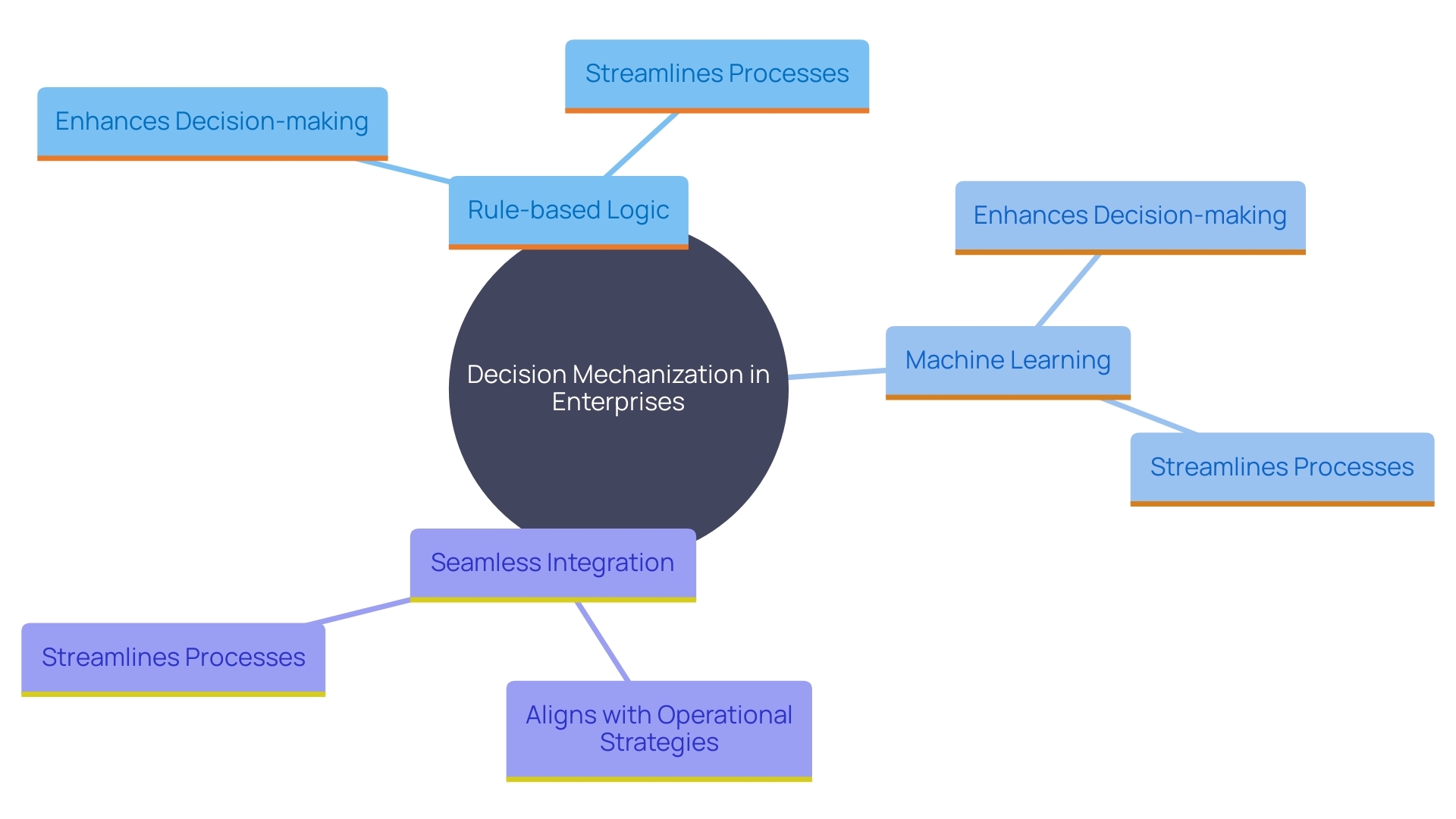
Benefits of Decision Automation
Applying automated choices can change an organization’s processes, providing numerous advantages. By utilizing AI and automated tools, companies can speed up their decision-making processes, significantly reducing the time needed to make critical choices. This rapid decision-making not only enhances efficiency but also ensures higher accuracy by utilizing data-driven insights, thereby reducing the potential for human error.
Furthermore, automation of choices promotes uniformity across all processes of making choices, guaranteeing that the same high standards are upheld throughout the organization. This consistency is vital for maintaining quality and reliability in business operations. Furthermore, with regular choices being automated, employees can shift their attention towards strategic, high-value tasks that foster innovation and growth, ultimately enhancing overall productivity.
A real-world example of this can be seen with Amgen, a biotechnology company that adopted Copilot for Microsoft 365 to enhance its operational efficiency. Initially beginning with 300 licenses, Amgen grew to 20,000, demonstrating the substantial influence of process optimization on their productivity and choices.
Furthermore, AI’s role in decision-making is indispensable. It aids in identifying and defining problems with greater precision by analyzing vast datasets to uncover hidden patterns and trends. This capability enables companies to make more strategic choices based on robust data insights, enhancing their competitive edge in the market. As noted, ‘Artificial intelligence, when coupled with Big Data, enables the extraction of valuable insights from massive datasets that would be practically impossible for humans to analyze manually.’
In conclusion, incorporating decision-making technology into organizational operations not only simplifies processes but also enables staff to participate in more significant and influential work, propelling the entity towards enhanced success.
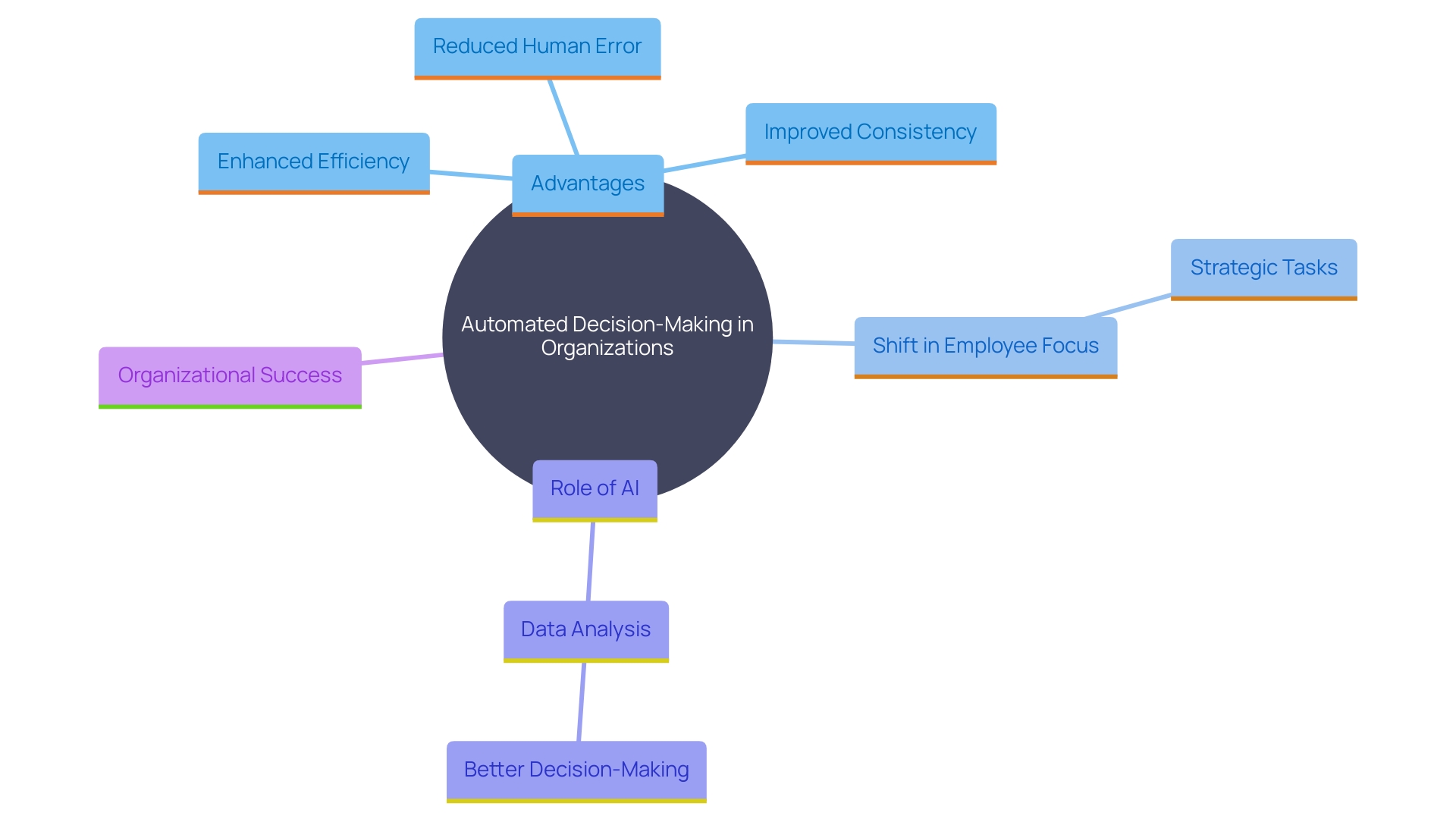
Impact on Business Efficiency
Decision automation significantly transforms business efficiency by streamlining the decision-making process and reducing manual intervention. This swift response to market changes enables companies to capitalize on opportunities and mitigate risks promptly, enhancing overall operational performance. AI plays a pivotal role in this transformation by accurately identifying problems through vast data analysis, revealing patterns and trends that might be overlooked by humans. For instance, AI systems can limit cognitive load on decision-makers, allowing them to focus on critical issues.
The integration of AI in decision-making processes fosters a data-driven culture within organizations, leading to continuous improvement. As pointed out by Konstantinos Mitsopoulos, a research scientist at the Institute for Human and Machine Cognition, generative AI systems can assist in overcoming human limitations such as mental exhaustion and restricted working memory. These systems can serve as decision ‘co-pilots,’ assessing dynamic situations, suggesting options, and completing tasks. This capability is crucial in uncertain times, as highlighted in a recent report where 94% of IT decision-makers are implementing technology changes to manage ongoing instability and uncertainty.
Additionally, AI-driven processes simplify intricate tasks, allowing companies to gain a deeper insight into market trends, consumer behavior, and operational efficiencies. ‘This strategic use of AI and information science in decision-making processes is essential for businesses aiming to thrive in today’s rapidly changing environment.’.
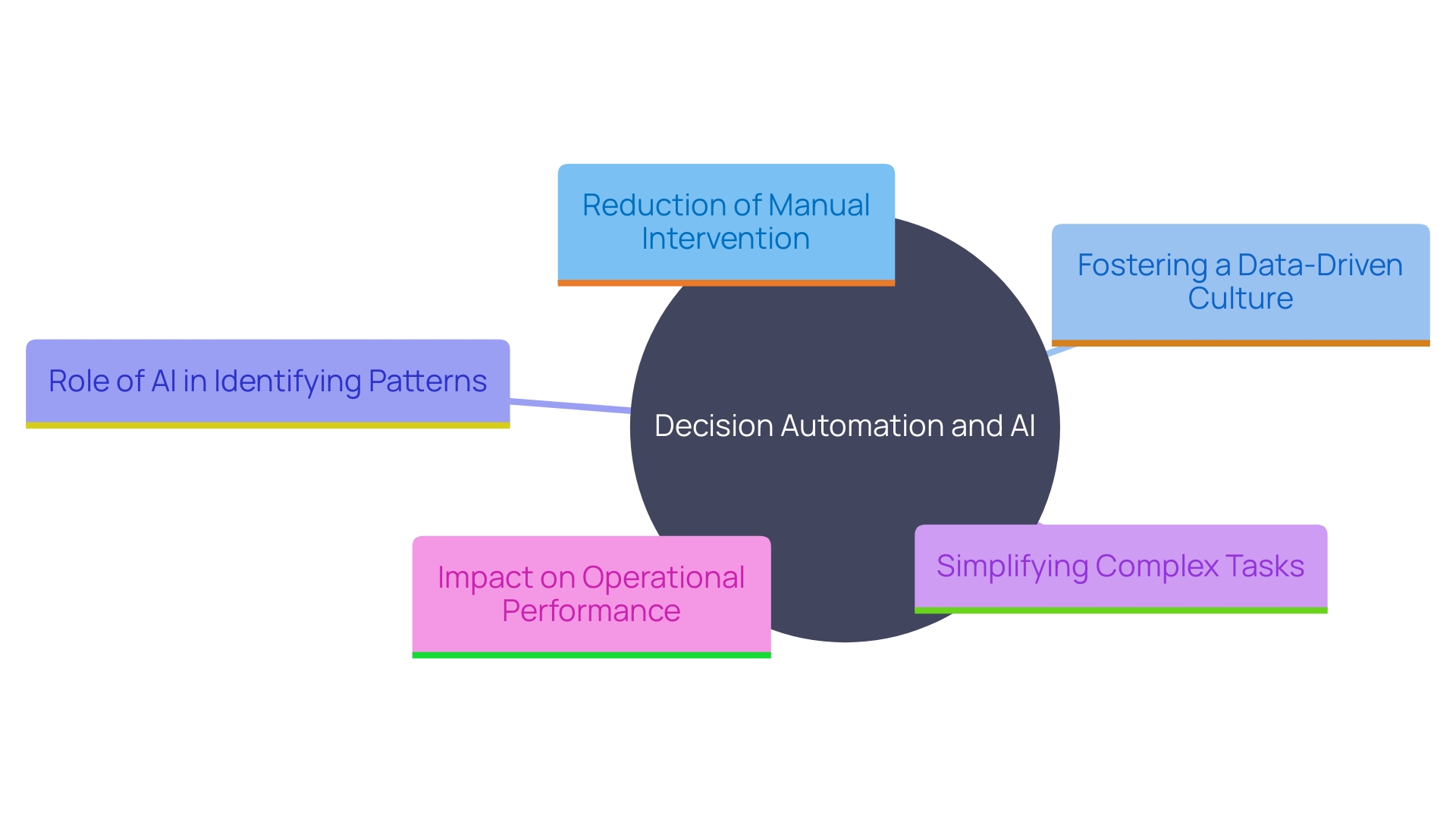
How Decision Automation Works
‘Decision automation utilizes a systematic process involving information gathering, analysis, and decision execution.’. At first, information is collected from various sources, including internal databases, customer interactions, and market trends. Advanced algorithms and machine learning models then analyze this information to generate valuable insights. The system subsequently applies predefined rules, transforming insights into actionable decisions that are seamlessly integrated into the business framework. ‘This iterative cycle resembles TBC Bank’s method, where ongoing information processing improves their time-to-market for digital products, ensuring exceptional banking experiences.’. Similarly, Bosch’s use of AI in green energy solutions exemplifies how sustained data analysis can lead to more efficient and sustainable energy production. As time passes, decision-making systems enhance their abilities, resulting in more precise and impactful choices, thus promoting operational efficiency and strategic achievement.
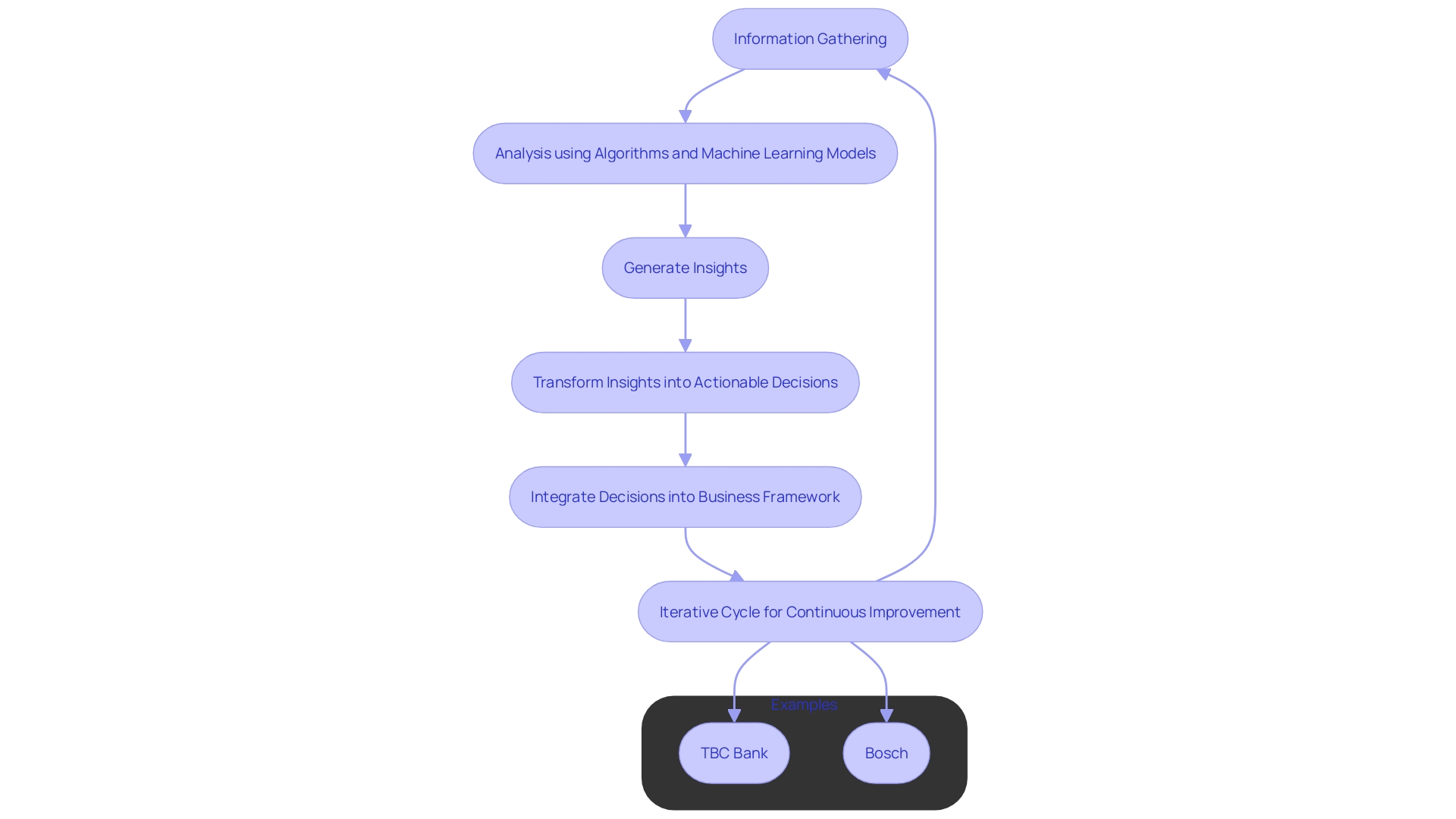
Applications of Decision Automation
Decision automation has become a transformative tool for organizations across diverse sectors. In finance, automated systems enhance risk assessment by analyzing vast datasets, thereby providing more precise insights and recommendations. Financial analysts, for instance, utilize AI to distill business insights from both financial and non-financial data, overcoming challenges posed by the volume and variety of information. This capability is essential for making informed investment decisions under time constraints.
In customer service, chatbots powered by AI handle numerous inquiries efficiently, improving response times and customer satisfaction. This automation not only streamlines operations but also frees up human agents to tackle more complex issues, thereby enhancing overall service quality.
Supply chain optimization is another critical application. AI-driven tools analyze supply chain data to predict demand, manage inventory, and optimize logistics. These systems help in reducing costs and increasing efficiency, ensuring that products are delivered on time and resources are utilized effectively.
Predictive maintenance in manufacturing is revolutionizing how companies manage their equipment. By using AI to predict when machinery is likely to fail, organizations can perform maintenance proactively, minimizing downtime and extending the life of their assets. This not only improves operational efficiency but also significantly reduces maintenance costs.
The integration of AI in these areas underscores its vital role in enhancing decision-making processes. As Professor Joshi observes, “To analyze AI choices, we cannot concentrate exclusively on outcomes being produced with AI.”. We need to comprehend the phenomenon alongside how we determine matters regarding AI and the consequences of such choices on other facets of the organization. This comprehensive approach guarantees that the integration of AI tools results in significant enhancements in operational efficiency and overall business growth.
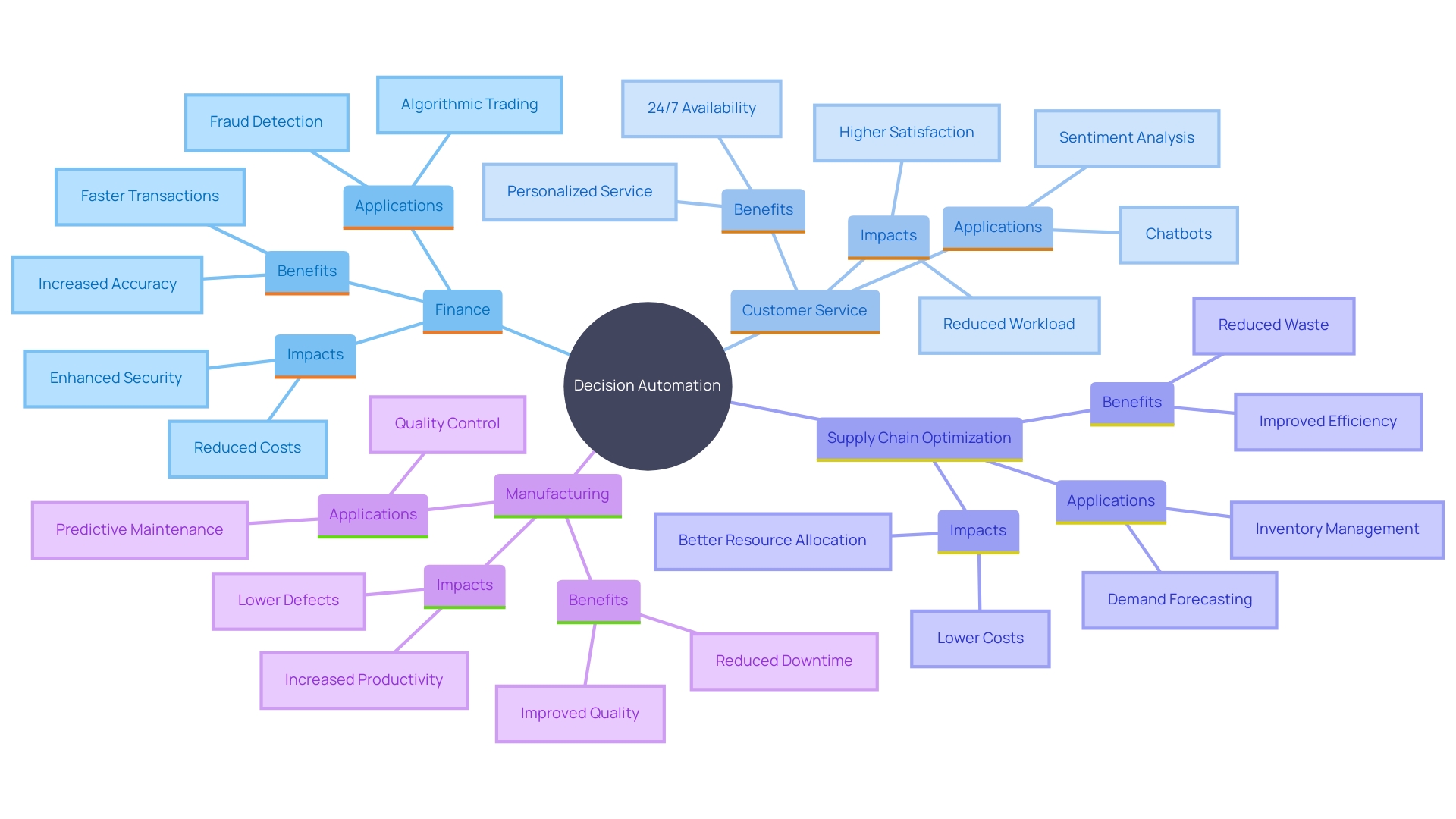
Data-Driven Decision Automation
Decision automation based on information quality and accessibility is crucial. ‘High information quality is paramount, as emphasized by industry experts like Jane Arnold of Aperio, who underscores the critical role it plays in operational efficiency and reliability.’. ‘The exponential growth of information, with 90% produced in the past two years and projections reaching over 180 zettabytes by 2025, necessitates vigilant monitoring to identify and correct inaccuracies.’.
Organizations must ensure datasets are fully understood before using them in predictive models. This includes understanding the information’s source, gathering methodology, and structure to ensure precise and pertinent predictions. For instance, in the industrial sector, information anomalies have led to significant operational issues, such as configuration errors and unnoticed environmental tags, highlighting the need for robust quality frameworks.
A structured method for managing quality involves profiling information to analyze content, structure, and relationships, thus identifying inconsistencies and outliers. Establishing clear standards for information formatting and representation is also essential. ‘With information preparation accounting for about 80% of analysts’ work according to Forbes, enhancing quality directly affects shortening the time to market for products.’.
‘AI in market research plays a crucial part in refining large amounts of information into practical insights, enabling companies to make knowledgeable choices based on well-organized details.’. This capability is crucial for maneuvering through the competitive environment, as it converts raw information into strategic benefits, ensuring choices are timely and pertinent by utilizing real-time insights and historical patterns.
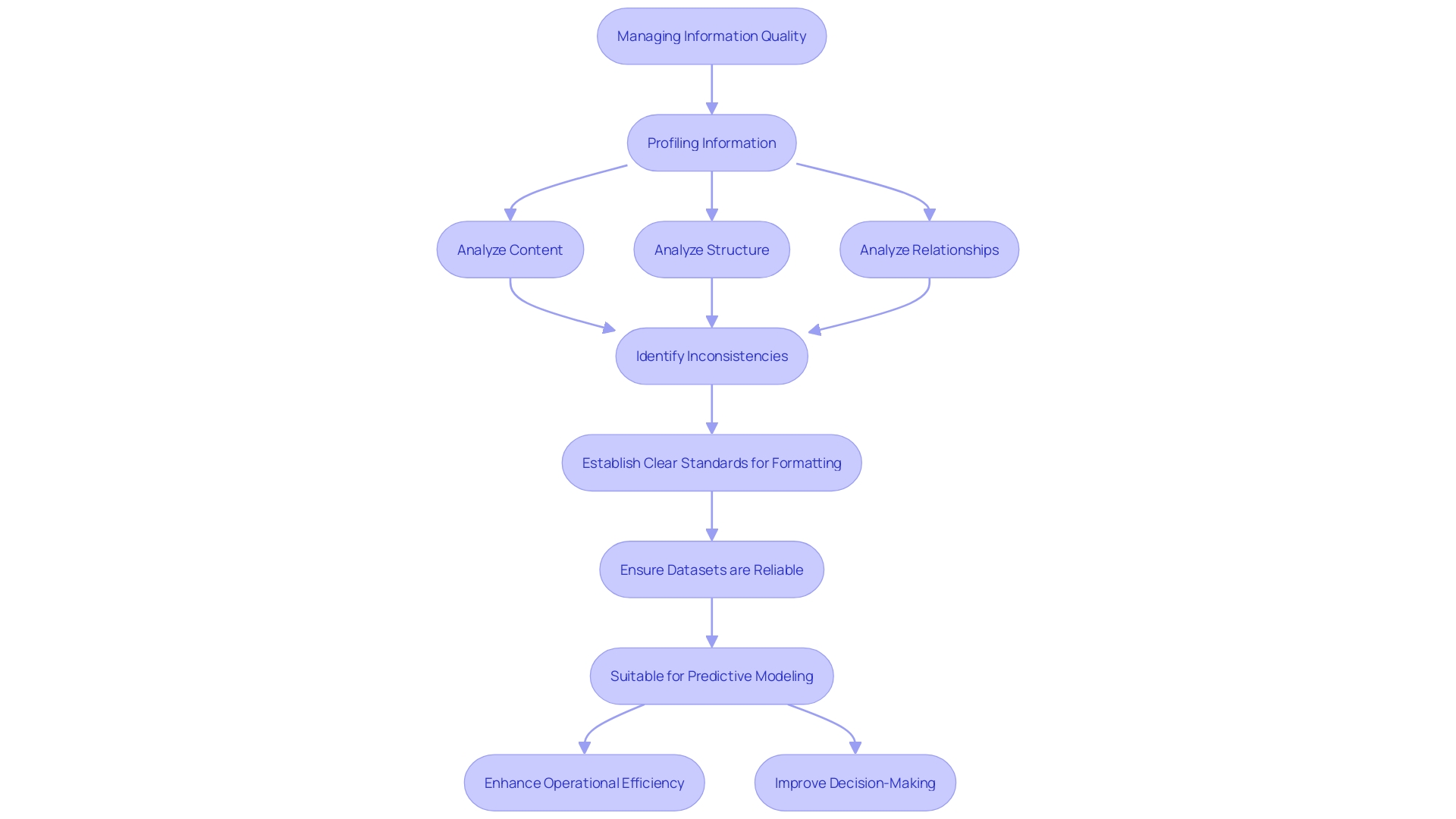
Challenges and Considerations
‘While automation of choices offers numerous benefits, it also presents several challenges that organizations must address.’. Ensuring data quality is paramount, as the adage “Garbage in, garbage out” remains true; high-quality data is essential for achieving measurable returns such as productivity improvement and cost reduction. Addressing potential biases in algorithms is another significant concern. A participatory approach, involving various stakeholders throughout the AI system’s lifecycle, can help mitigate biases by incorporating diverse perspectives and granular information, thereby improving the algorithm’s overall quality.
Managing resistance to change among employees is another hurdle. Engagement and transparency are key to building trust and gaining buy-in for AI systems. The ethical implications of automated decision-making cannot be overlooked; transparency and accountability must be integral to the process. As highlighted in discussions around autonomous weapons systems, the importance of maintaining human control over critical decisions is paramount. This principle is equally applicable to business processes, where ethical considerations must guide the deployment of AI and automation tools.
Furthermore, the international discourse on AI and ethics underscores the need for robust regulatory frameworks to ensure that AI technologies are used responsibly. Issues such as privacy, data protection, and the ethical use of AI in decision-making are central to this discussion, emphasizing the importance of placing human rights and ethics at the forefront of AI regulation.
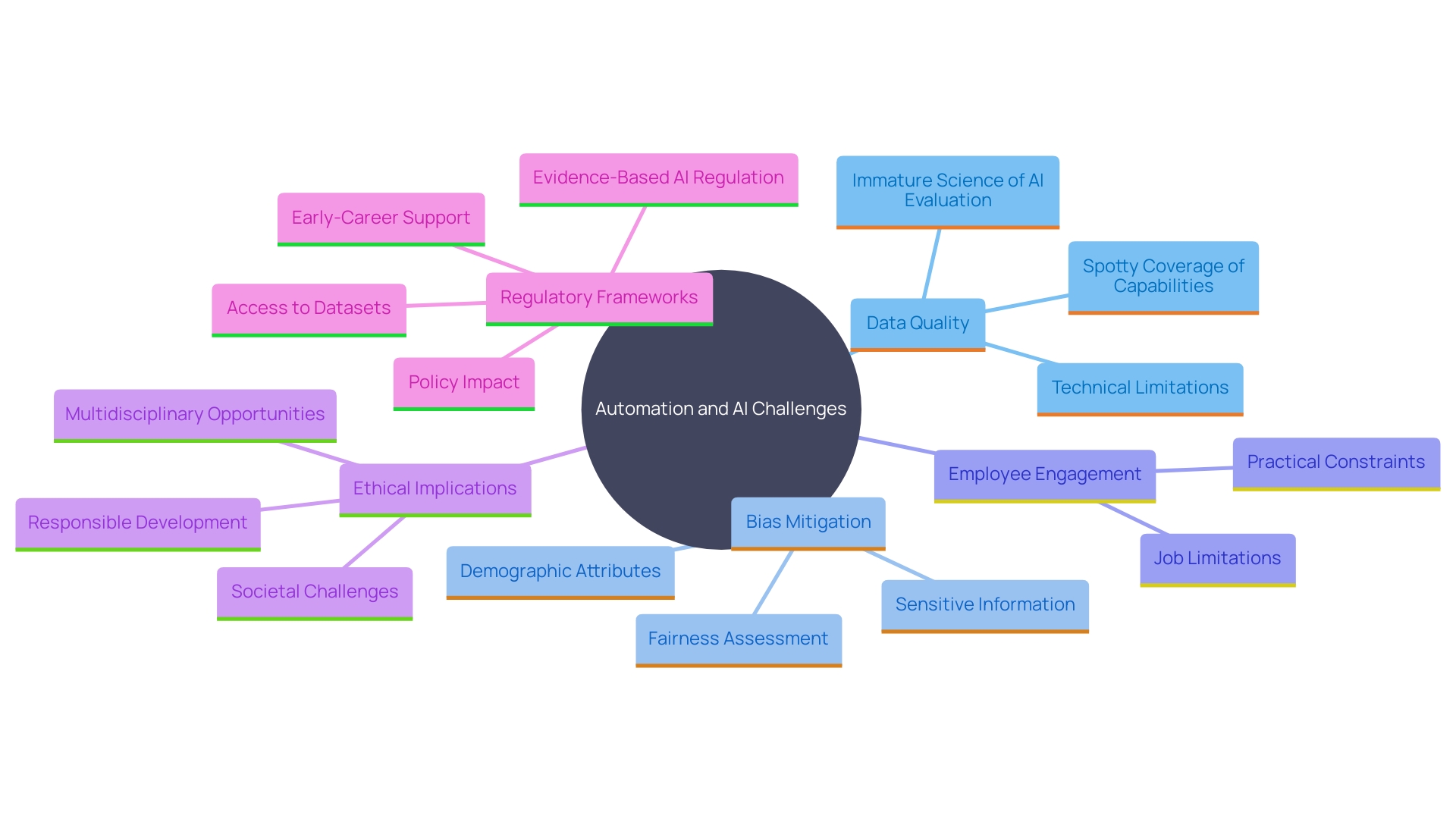
Conclusion
Decision automation stands as a transformative force in the business landscape, streamlining processes and enhancing decision-making capabilities across various sectors. By harnessing advanced algorithms and machine learning, organizations are equipped to make swift, data-driven choices that align with their strategic objectives. The integration of rule-based logic ensures consistency, while AI’s analytical prowess uncovers valuable insights from vast datasets, enabling companies to respond effectively to market dynamics.
The benefits of decision automation are profound, leading to increased efficiency, reduced human error, and the liberation of employees to focus on higher-value tasks. Real-world applications in finance, customer service, supply chain management, and predictive maintenance illustrate the versatility of this technology. Companies like Amgen and Renault exemplify how decision automation can drive operational excellence and foster a culture of continuous improvement.
However, challenges such as data quality, algorithmic bias, and employee resistance must be addressed to fully realize the potential of decision automation. A commitment to ethical practices and robust regulatory frameworks will ensure that the deployment of AI technologies is responsible and beneficial. By embracing decision automation and overcoming these challenges, organizations can position themselves for sustained success in an increasingly competitive environment.
Introduction
In the rapidly evolving landscape of artificial intelligence, LLM-powered autonomous agents are emerging as a groundbreaking innovation. Leveraging large language models (LLMs), these agents can operate independently and execute complex tasks with remarkable efficiency. By understanding and generating human-like text, they seamlessly interact with users and integrate various specialized tools to address intricate queries.
This modular approach not only enhances their versatility but also optimizes their ability to automate workflows and provide insightful solutions. From autonomous driving software to sophisticated enterprise applications, the potential applications of these agents are vast and transformative. This article delves into the key components, integration techniques, and real-world applications of LLM-powered agents, offering a comprehensive guide to understanding their impact and future potential.
What Are LLM-Powered Autonomous Agents?
‘LLM-powered autonomous systems represent a significant advancement in AI technology, utilizing large language models (LLMs) to operate independently and execute intricate tasks.’. These entities are capable of understanding and generating human-like text, which allows them to interact fluidly with users and other systems. A key characteristic of these individuals is their capability to combine various tools—each intended for specific purposes—into their workflows. For instance, they can employ an NLP module to analyze text and extract relevant information, a database query application to retrieve specific data, and a machine learning model to generate text or make predictions based on input data.
These instruments function as the foundational elements that allow representatives to create thorough responses to user inquiries. By breaking down complex tasks into manageable steps and selecting the appropriate tools for each step, the individuals can efficiently address and resolve issues. This modular method not only improves the versatility of the entities but also their effectiveness in automating workflows, processing natural language inquiries, and delivering valuable insights.
A notable application of LLMs in autonomous systems is seen in companies like Ghost, which uses multi-modal large language models (MLLMs) to develop autonomous driving software. These models employ human-like reasoning to navigate intricate driving situations, demonstrating the potential of LLM-powered systems in various fields.
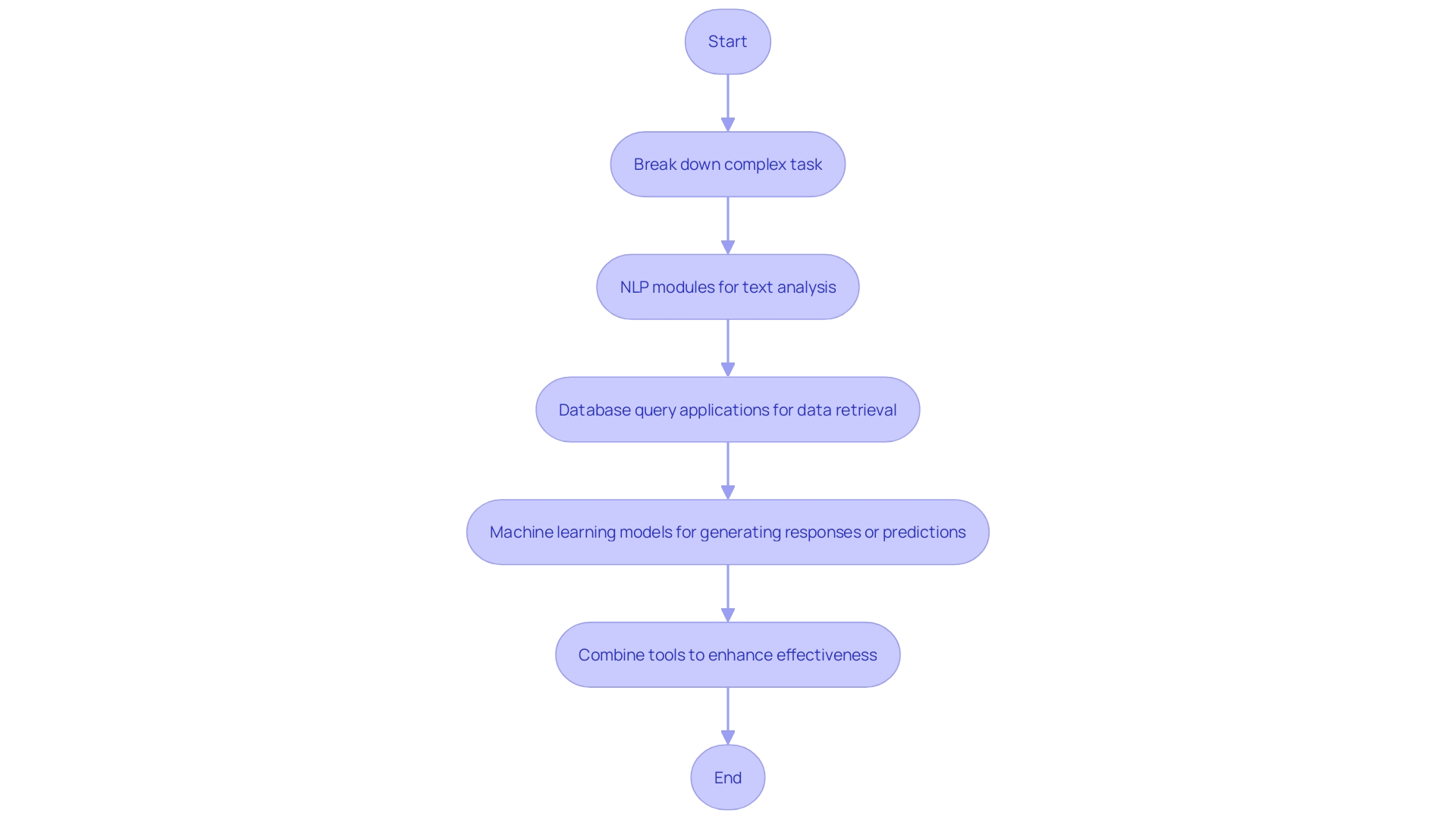
Key Components of LLM-Powered Agents
The functionality of LLM-powered autonomous systems hinges on several pivotal components working in unison to amplify their capabilities. Central to these entities is the planning module, which orchestrates the breakdown of complex questions into manageable tasks, ensuring that the entity can systematically address each part. Complementing this is the memory module, divided into short-term and long-term segments. Short-term memory captures the individual’s immediate actions and thoughts in response to a user’s query, essentially forming a ‘train of thought.’ Meanwhile, long-term memory records interactions and events over extended periods, building a rich history that the system can draw upon for more informed responses.
Integration tools further enhance these entities’ efficiency, enabling seamless operation in dynamic environments. The paper ‘On the Prospects of Incorporating Large Language Models in Automated Planning and Scheduling’ underscores the growing importance of these models in planning and scheduling, highlighting their potential when combined with traditional symbolic planners. This neuro-symbolic approach combines the generative capabilities of LLMs with the accuracy of traditional planning techniques, promising more efficient and scalable autonomous systems.
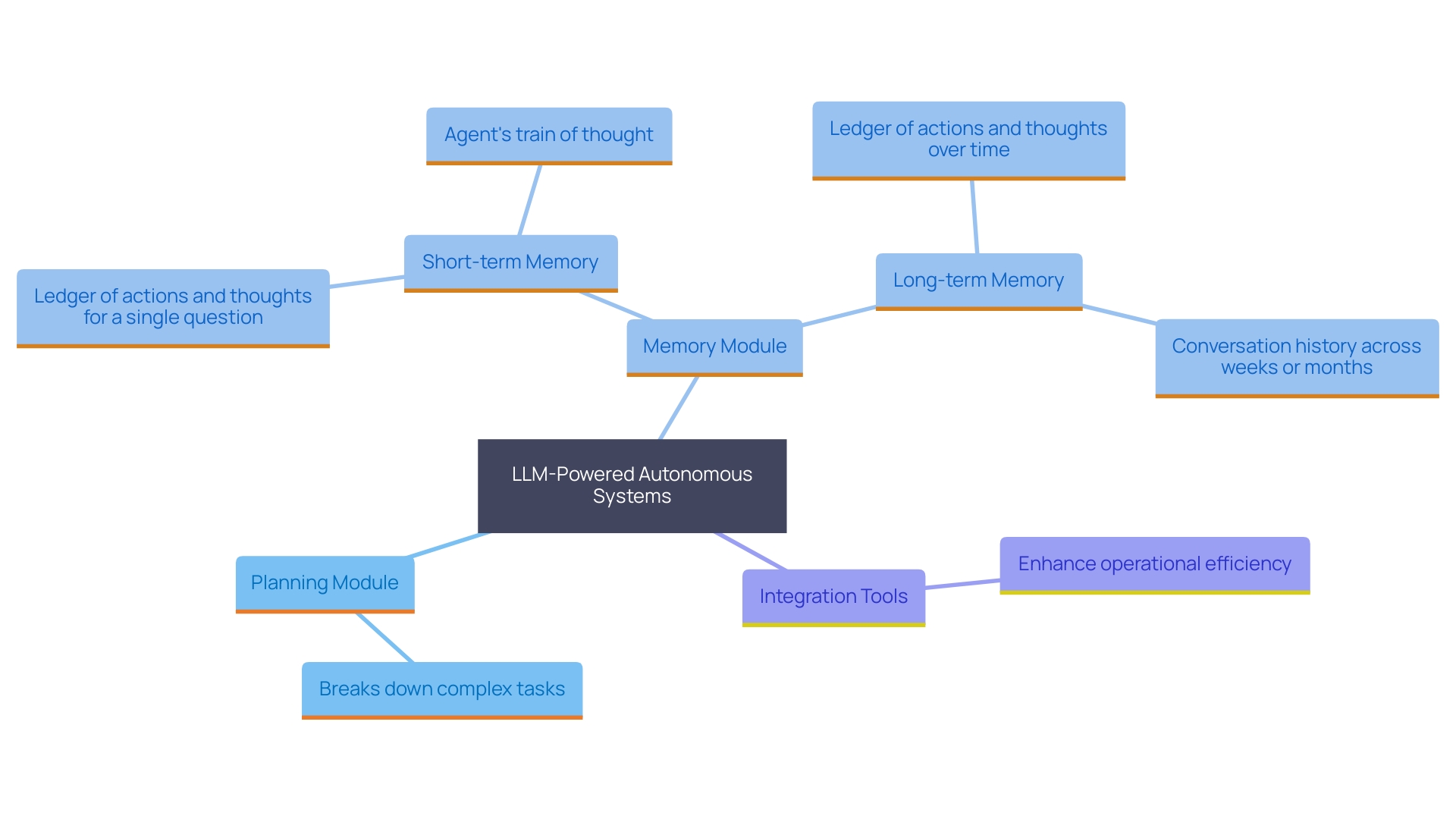
Planning Module
The planning module plays a pivotal role in managing activities and facilitating informed decision-making. It enables representatives to deconstruct intricate assignments into smaller, more manageable stages and formulate effective strategies for implementation. Some essential techniques within this module include:
-
Task Decomposition Techniques: This involves breaking down large, complex objectives into smaller, actionable tasks. This methodical process guarantees that each assignment can be managed effectively by one individual and can result in a unique outcome. ‘According to the paper ‘ADaPT: As-Needed Decomposition and Planning with Language Models’, activity decomposition is crucial for AI to efficiently manage and complete activities, thereby enhancing productivity and accuracy.’.
-
Reflection and Self-Improvement Techniques: These techniques enable agents to evaluate their performance continuously and adapt their strategies for improved outcomes. The Reflection Pattern article highlights how iterative self-assessment can significantly enhance the quality of AI outputs. The process involves the AI generating content, critiquing it, and refining it in cycles until a satisfactory level of quality is achieved.
In practical applications, such as those developed by the Korea Institute of Machinery and Materials (KIMM), AI technology based on Large Language Models (LLMs) is utilized to automate sequences of activities in manufacturing processes. This technology allows robots to understand user commands and autonomously generate and execute necessary actions, demonstrating the real-world impact of effective task planning and decomposition.
Memory Module
The memory module is crucial for retaining and retrieving information, enabling context-aware interactions. Key aspects include:
- External Memory Architectures (e.g., MRKL, TALM): These systems enhance the ability of agents to store and recall relevant information, much like how advanced reasoning techniques help in manually sifting through vast data warehouses to find and later recall specific data tables. This avoids the repetitive, brute-force approach often required when the data needs updating.
- Retrieval-Augmented Generation (RAG): This method merges the retrieval of past experiences with generative capabilities, resulting in more accurate responses. Think of RAG as a conversation between two experts—one with a vast memory (the generator) and one who fetches the most relevant documents (the retriever). Using similarity search techniques, the retriever scans through extensive data and selects the most pertinent information, which the generator then uses to craft more informed responses.
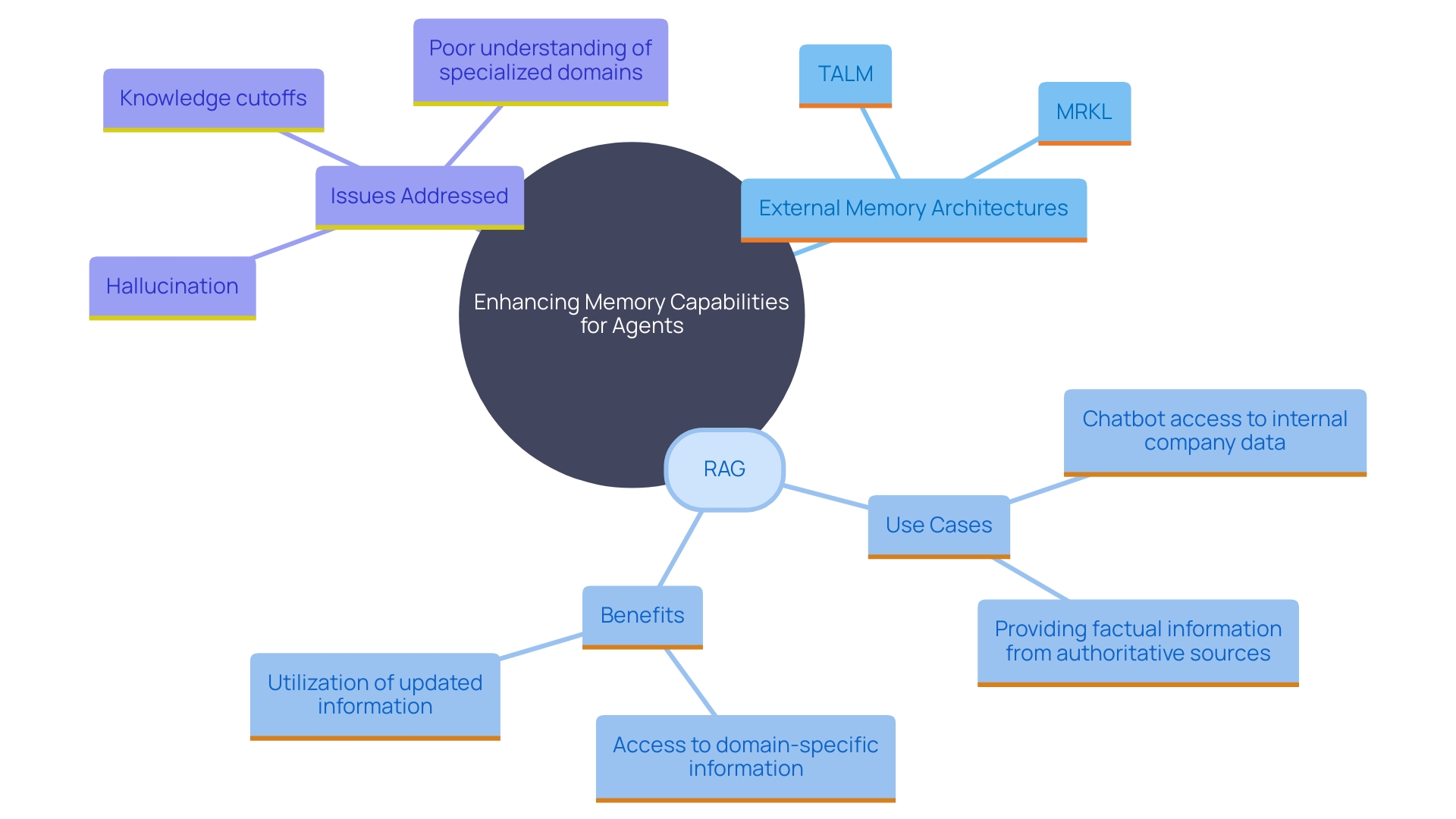
Tool Use and Integration
Incorporating advanced tools significantly expands the abilities of Large Language Model (LLM) systems. Key techniques and integrations include:
-
ReAct and Reflexion Techniques: These methods enable LLM agents to dynamically adapt to changing inputs, enhancing their ability to provide contextually relevant responses. By leveraging the React AI agent model, large language models can seamlessly combine reasoning and actionable steps. This method not only simplifies complex data analysis activities but also guarantees more precise and insightful results, especially when handling varied datasets.
-
External Service APIs and Integration: Connecting LLMs with third-party services and resources amplifies their functionality and performance. For example, organizations such as Holiday Extras have gained advantages from incorporating different resources to manage multilingual marketing activities and data-informed processes. Such integrations help streamline processes, reduce the burden of repetitive tasks, and allow employees to focus on strategic initiatives. Another example is Summer Health, where the use of integrated tools has alleviated the administrative load on medical professionals, enabling them to dedicate more time to patient care.
These integrations not only enhance the operational efficiency of LLM-powered systems but also foster a collaborative ecosystem by making advanced technologies accessible and user-friendly. The continuous open-sourcing of projects and engagement with the research community further drive innovation and practical applications across diverse domains.
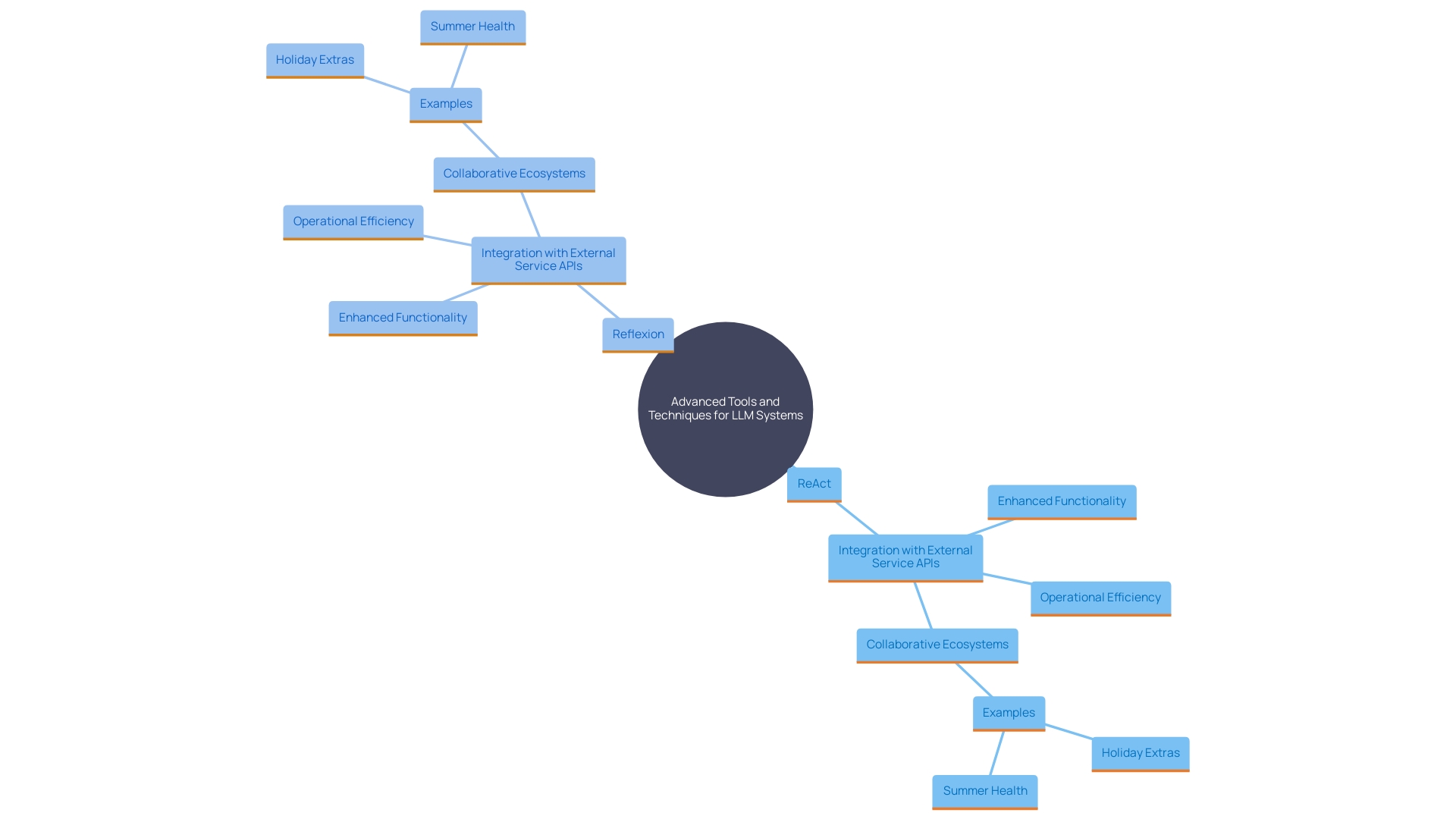
Challenges and Limitations
Despite their potential, LLM-powered agents face several challenges that can impact their efficiency:
-
Limited Context Capacity: The ability to understand and respond to queries can be hindered by the constraints of context length. LLMs are stateless, meaning they do not store conversations, making context length a critical aspect of their functionality. This limitation can affect the quality and coherence of responses, particularly in complex or lengthy interactions.
-
Long-Term Planning and Adaptability: Agents may struggle with responsibilities requiring foresight and adjustments over extended periods. ‘While LLM-based autonomous systems can understand natural language and reason about tasks, their ability to handle long-term planning is still evolving.’. Memory modules, both short-term and long-term, play a crucial role in enabling these entities to keep track of interactions and enhance their adaptability over time.
-
Natural Language Interface Challenges: Interpreting complex queries can lead to misunderstandings and inaccuracies. The sophistication of natural language interfaces has improved significantly, yet challenges remain in accurately processing and responding to intricate or ambiguous questions. This is particularly evident in scenarios requiring detailed and nuanced understanding, where even minor inaccuracies can lead to significant misunderstandings.
Research has explored the capabilities, efficiency, and security of personal LLM systems, highlighting both their promise and the hurdles that must be overcome. For instance, while LLMs can assist with various tasks and offer substantial efficiency, they are also resource-intensive to run. Ensuring these representatives are secure and reliable in their interactions with users remains a critical area of focus.
Applications and Future Directions
The versatility of LLM-powered autonomous agents unlocks a myriad of applications across various domains:
- Enterprise Applications (e.g., Financial Analysis, E-commerce): These agents streamline operations and enhance decision-making processes. For instance, Amazon leverages LLM technology to improve customer service by enabling chatbots to understand and process natural language, thus providing quick and relevant responses. This integration not only boosts customer satisfaction but also improves operational efficiency.
- Behavioral Simulations and Economic Studies: Utilizing participants to model and analyze human behavior in economic contexts offers valuable insights. For example, representatives can be developed using distinct prototyping that considers behavioral elements, driven by strategies that stimulate knowledge generation based on specific use cases. This approach provides a differentiated and adaptable experiment across various applications and complexities.
- Advanced Business Automation: Automating repetitive tasks and enhancing operational efficiency is a key benefit. By utilizing representatives created from large language models, businesses can automate policy execution through a closed control loop for intent deployment. This includes actions such as monitoring, analysis, planning, and execution, thereby ensuring a seamless and efficient workflow.
These applications demonstrate the potential of LLM-powered agents to transform organizational strategies and operational processes, making them indispensable tools in the modern business landscape.
Conclusion
The exploration of LLM-powered autonomous agents reveals their transformative potential across various sectors. By leveraging advanced large language models, these agents can independently manage intricate tasks, engage in meaningful interactions, and integrate specialized tools to enhance their functionality. The modularity of their design allows for efficient problem-solving, making them invaluable assets in automating workflows and improving productivity.
Key components such as planning and memory modules play a crucial role in the agents’ ability to break down complex tasks and retain relevant information. This structured approach not only facilitates informed decision-making but also enhances the agents’ adaptability in dynamic environments. The integration of external tools further amplifies their capabilities, providing solutions that streamline operations and reduce the burden of repetitive tasks.
Despite the remarkable advancements, challenges remain, including context limitations and the complexities of natural language processing. Addressing these hurdles will be essential for maximizing the effectiveness of LLM-powered agents. The future of these technologies promises exciting possibilities, from enhancing enterprise applications to automating advanced business processes, ultimately reshaping how organizations operate and interact with their environments.
Embracing these innovations will empower businesses to unlock new levels of efficiency and insight, paving the way for a more automated and intelligent future.
Introduction
Artificial intelligence (AI) is revolutionizing the business landscape, offering transformative potential for small businesses striving to enhance operational efficiency and strategic decision-making. AI consultants emerge as pivotal allies in this journey, bridging the knowledge gap and providing bespoke solutions that align seamlessly with business objectives. By leveraging AI, small businesses can streamline operations, automate repetitive tasks, and make data-driven decisions that propel growth.
However, the challenge lies not just in adopting AI but in doing so responsibly and effectively. Ethical considerations and the need for tailored, strategic implementation are paramount. This article delves into the multifaceted role of AI consultants, the tangible benefits they bring to small businesses, and the key areas where AI can drive substantial improvements.
Additionally, it explores how to select the right AI consultant, best practices for effective AI integration, and future trends that small businesses must watch to stay competitive. Get ready to unlock the full potential of AI for your small business and navigate the future with confidence.
The Role of an AI Consultant
AI advisors serve as essential strategic partners for emerging enterprises, assisting them in navigating the complex journey of integrating artificial intelligence solutions. Their expertise enables them to thoroughly evaluate organizational needs and pinpoint key opportunities for AI integration, offering customized solutions that seamlessly align with corporate objectives. By utilizing the extensive capabilities of AI, these advisors enable lesser enterprises to navigate the swiftly changing environment, ensuring knowledgeable and strategic choices regarding technology investments.
In an economy where both time and money are critical, AI offers significant advantages. According to industry data, a growing number of companies are recognizing the benefits of AI, yet many still hesitate to invest due to a lack of understanding of its potential. AI specialists bridge this gap, providing training and knowledge transfer to internal teams, thus equipping them with the necessary tools and strategies for effective implementation.
An example of successful AI integration is seen with companies like Provider’s Choice Scribe Services, which utilized AI to enhance customer service and streamline product development. This transformation led to more efficient operations and increased success, showcasing the tangible benefits that AI can bring to small enterprises.
Moreover, ethical considerations remain a priority amidst rapid technological advancements. AI advisors guarantee that moral standards are maintained, directing organizations through the intricacies of responsible AI application. This comprehensive approach not only optimizes operational processes but also instills confidence in technology investments.
Investigating AI tools is crucial for remaining competitive, and AI experts are vital to realizing their complete capabilities for your enterprise.

Benefits of AI Consulting for Small Businesses
Utilizing an AI advisor can greatly assist small enterprises by optimizing processes and improving decision-making abilities. AI specialists excel in automating repetitive tasks, allowing employees to focus on strategic initiatives. This shift not only boosts efficiency but also fosters a culture of data-driven decision-making. By leveraging data analytics, AI consultants assist organizations in uncovering actionable insights, leading to enhanced outcomes.
For instance, Marty Fisher’s early embrace of new innovations assisted his enterprise in retaining a competitive advantage, illustrating the significance of remaining ahead with developing tech trends. Similarly, Holiday Extras, a leading travel extras provider in Europe, has effectively used AI to manage multilingual marketing and enhance data fluency across various departments. These real-world examples highlight how AI can transform operational processes, making companies more agile and competitive.
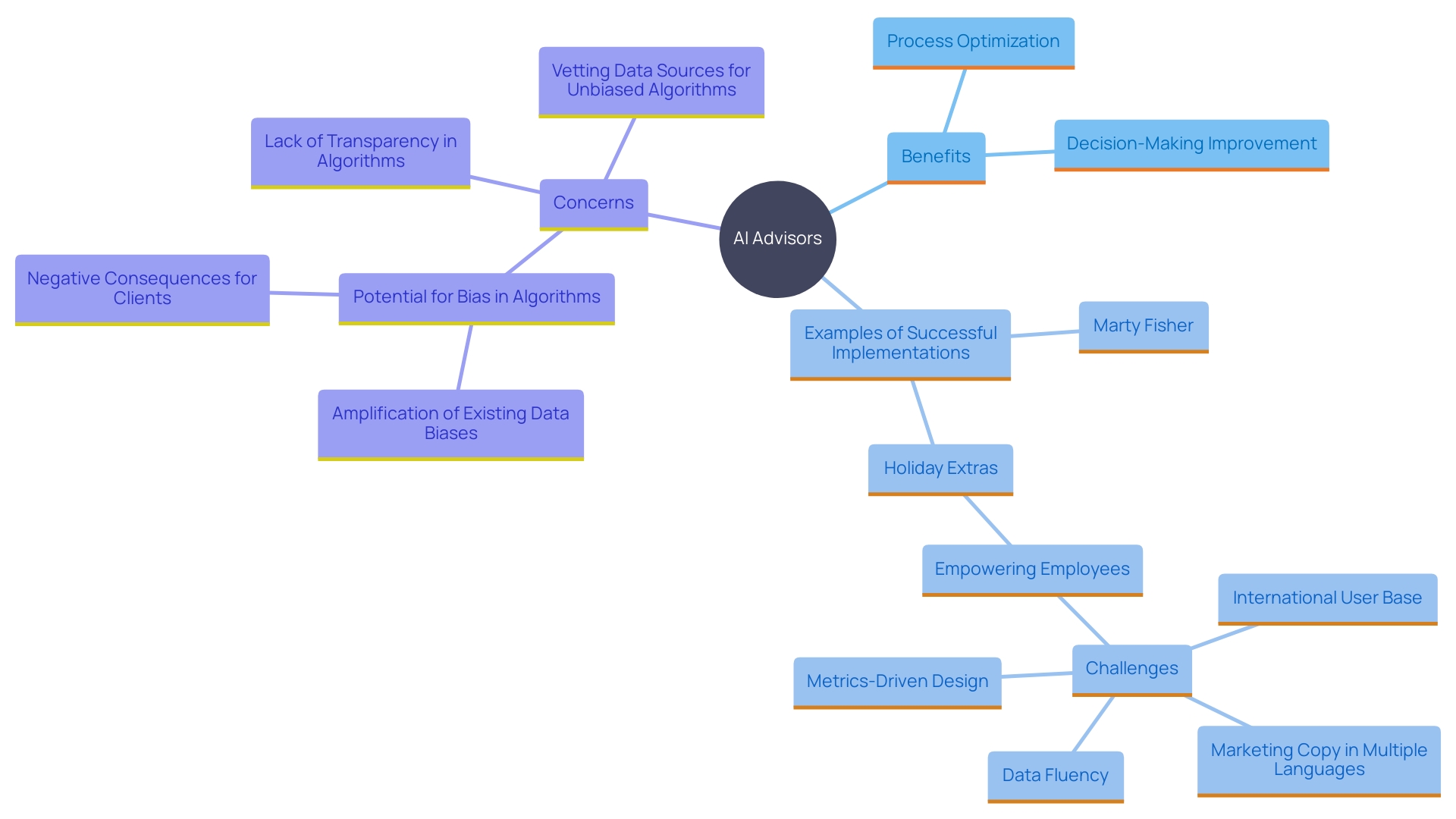
Key Areas Where AI Can Benefit Small Businesses
Small enterprises can significantly transform their operations by leveraging AI technologies. Key areas include automating customer service through chatbots, enhancing inventory management with predictive analytics, and utilizing machine learning for personalized marketing strategies. For instance, automating initial identity verification and basic order status inquiries can be a quick win for retailers, addressing repetitive and costly manual processes. By mapping processes and identifying stakeholders and systems involved, organizations can compare complexity and estimated ROI, ensuring they prioritize impactful yet low-complexity tasks.
Holiday Extras, a leading European travel extras provider, has successfully navigated these challenges by empowering employees with data-driven tools, despite the scale and multi-language requirements of the market. As Annette Reuther, Head of Growth (Europe), notes, the data-driven culture, supported by dashboards and metrics, has enabled even non-technical employees to engage with data fluently.
Moreover, the adoption of AI tools is increasing among lesser-known companies. According to Pipedrive’s Annual State of Sales and Marketing report, 42% of companies with 10 or fewer employees are now using AI tools, compared to 37% of companies with 11 to 100 employees and 23% of companies with 100+ employees. This increasing tendency highlights the significance of AI in enhancing efficiency and expansion, making it essential for modest enterprises to investigate and adopt these innovations.

Choosing the Right AI Consultant for Your Small Business
Selecting the appropriate AI advisor is a crucial choice for small enterprises seeking to utilize technology for expansion and effectiveness. It’s crucial to assess their experience and industry-specific knowledge, ensuring they have a proven track record in solving similar challenges. Seek advisors who emphasize grasping your distinct organizational needs and provide customized solutions, since a universal approach seldom yields the best outcomes. Efficient communication and teamwork are crucial to align AI initiatives with your overall corporate strategy seamlessly.
Begin by asking probing questions to identify priorities and desired outcomes across all facets of the business. For instance, how could AI make revenue more predictable and repeatable? Where can AI drive efficiency to reduce significant costs? Consider pain points that detract from the customer experience and explore how AI could enhance interactions.
Technological advances, including AI, are rapidly transforming the consulting industry, offering new ways to deliver value. Despite some skepticism about Ai’s accuracy, it’s important to remember that human-based consulting is also prone to errors, underscoring the need for all outputs to be checked for accuracy. As AI advancements keep progressing, it becomes increasingly essential to explore these tools to remain competitive.
Marty Fisher’s experience highlights the importance of embracing new technology early. His openness to innovations like the Internet in the 1990s helped his enterprise maintain a competitive edge. Likewise, artificial intelligence can offer invaluable insights and support in fields ranging from customer service to product development, allowing companies to function more efficiently and effectively.
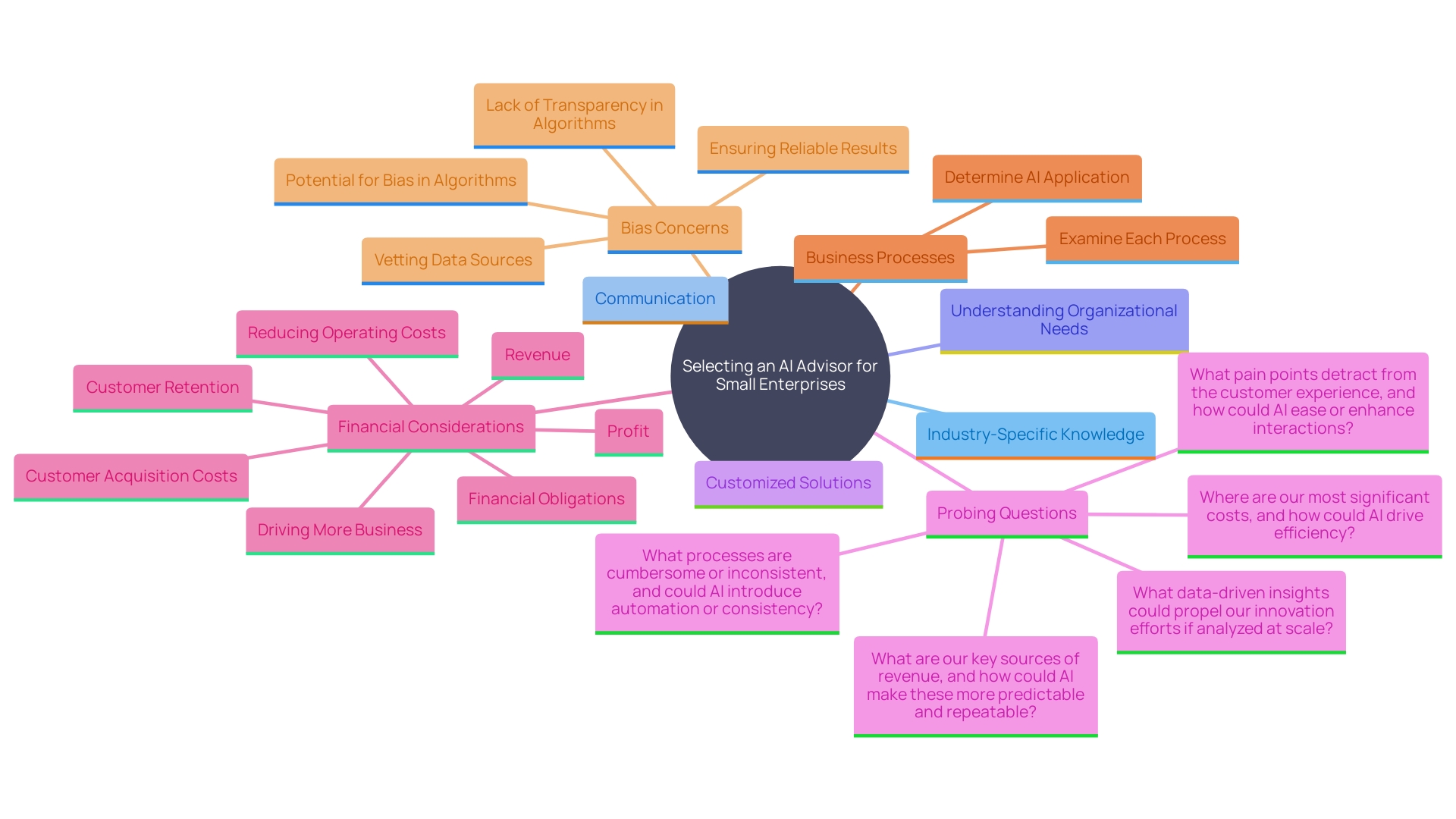
Best Practices for AI Consulting in Small Businesses
To enhance the effectiveness of AI consulting, lesser enterprises should adopt best practices such as establishing clear, measurable objectives for AI projects. For instance, objectives could range from enhancing customer service with chatbots to optimizing supply chain logistics. Defining these goals will guide the strategy and help quantify success.
Involving key stakeholders from the outset is crucial. This ensures that everyone is aligned and can contribute valuable insights, facilitating smoother implementation. Additionally, investing in data infrastructure is essential. Machine learning models are only as good as the data they’re trained on. Assessing and potentially upgrading your data collection, management, and processing capabilities will significantly impact the success of AI initiatives.
Furthermore, fostering an organizational culture that embraces innovation and change is beneficial. Encouraging a mindset open to AI-driven operations will ease the transition and enhance acceptance among employees. This approach not only mitigates resistance but also promotes a collaborative environment where employees feel empowered to contribute to the AI journey.
By incorporating these strategies, minor enterprises can effectively leverage AI to enhance efficiency and productivity, ultimately gaining a competitive advantage in their respective sectors.
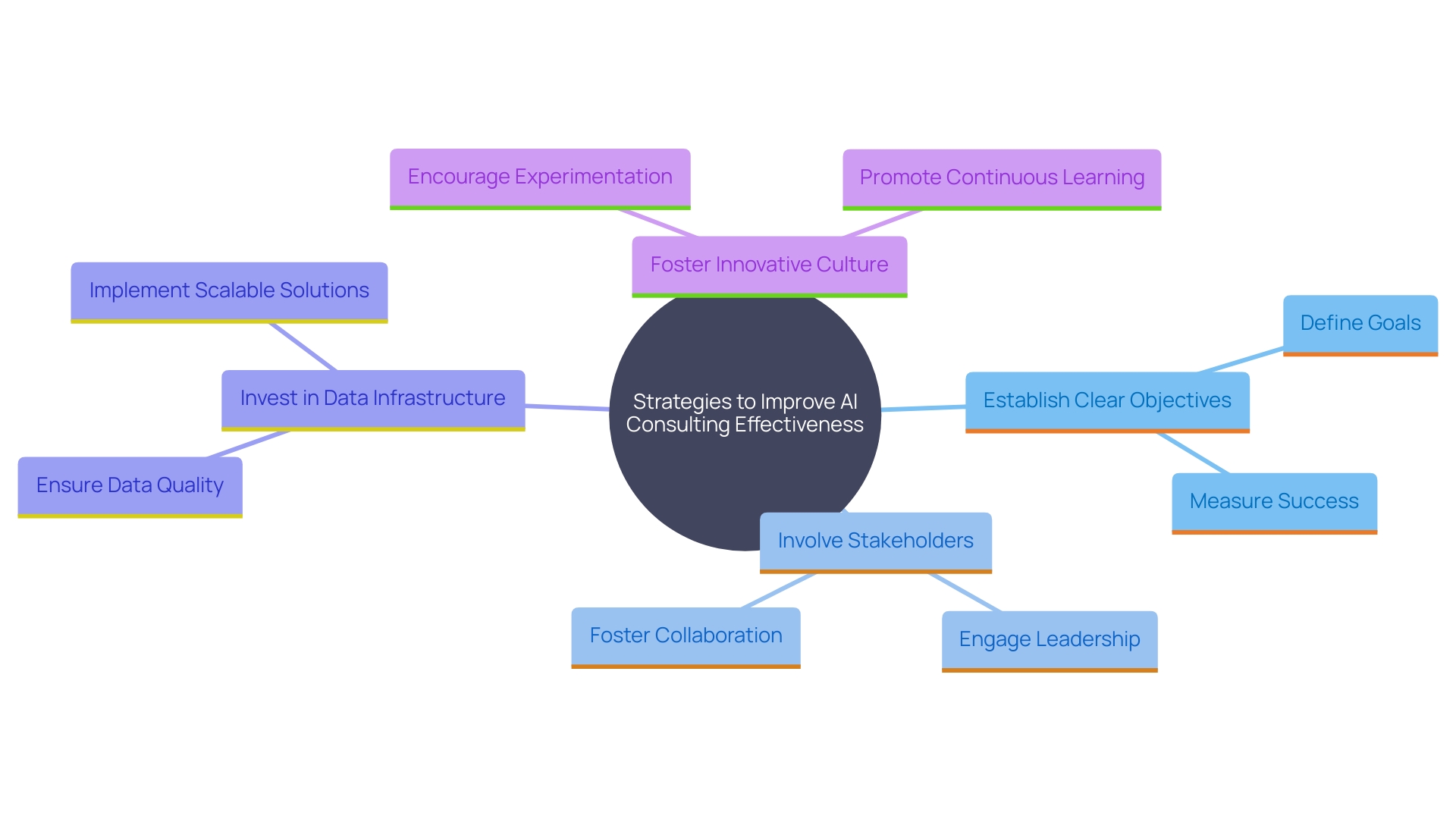
Future Trends in AI Consulting for Small Businesses
The future of AI consulting for small enterprises is poised for remarkable growth, driven by technological advancements and the increasing accessibility of AI tools. The rise of no-code platforms is a game-changer, enabling non-technical users to harness AI’s power without extensive programming knowledge. Marty Fisher’s experience with Sherpa Marketing underscores the importance of staying attuned to technological trends. Early in his career, Fisher recognized the potential of the internet, and his adaptability allowed him to build a thriving digital agency.
Likewise, companies today must be proactive in incorporating AI to sustain a competitive advantage. A significant trend is the emphasis on ethical AI practices. Ensuring transparency and eliminating biases in algorithms is crucial, as highlighted by concerns over generative AI’s potential for perpetuating existing biases. By vetting data sources meticulously, organizations can mitigate these risks and uphold ethical standards.
The integration of AI with emerging technologies like blockchain presents additional opportunities. As seen with companies like Holiday Extras, the ability to leverage data effectively can transform operations, providing tailored services to diverse markets. On-demand AI consulting platforms, like Macky AI, are making these advanced tools more accessible to SMEs, offering solutions for key challenges in their operations.
Small enterprises that embrace these trends will be well-positioned to capitalize on AI’s potential, driving efficiency and innovation. The disruption in consultancy is evident, with AI accelerating service delivery and providing new avenues for growth. By investing in AI and addressing ethical concerns, small businesses can navigate the future with confidence and agility.
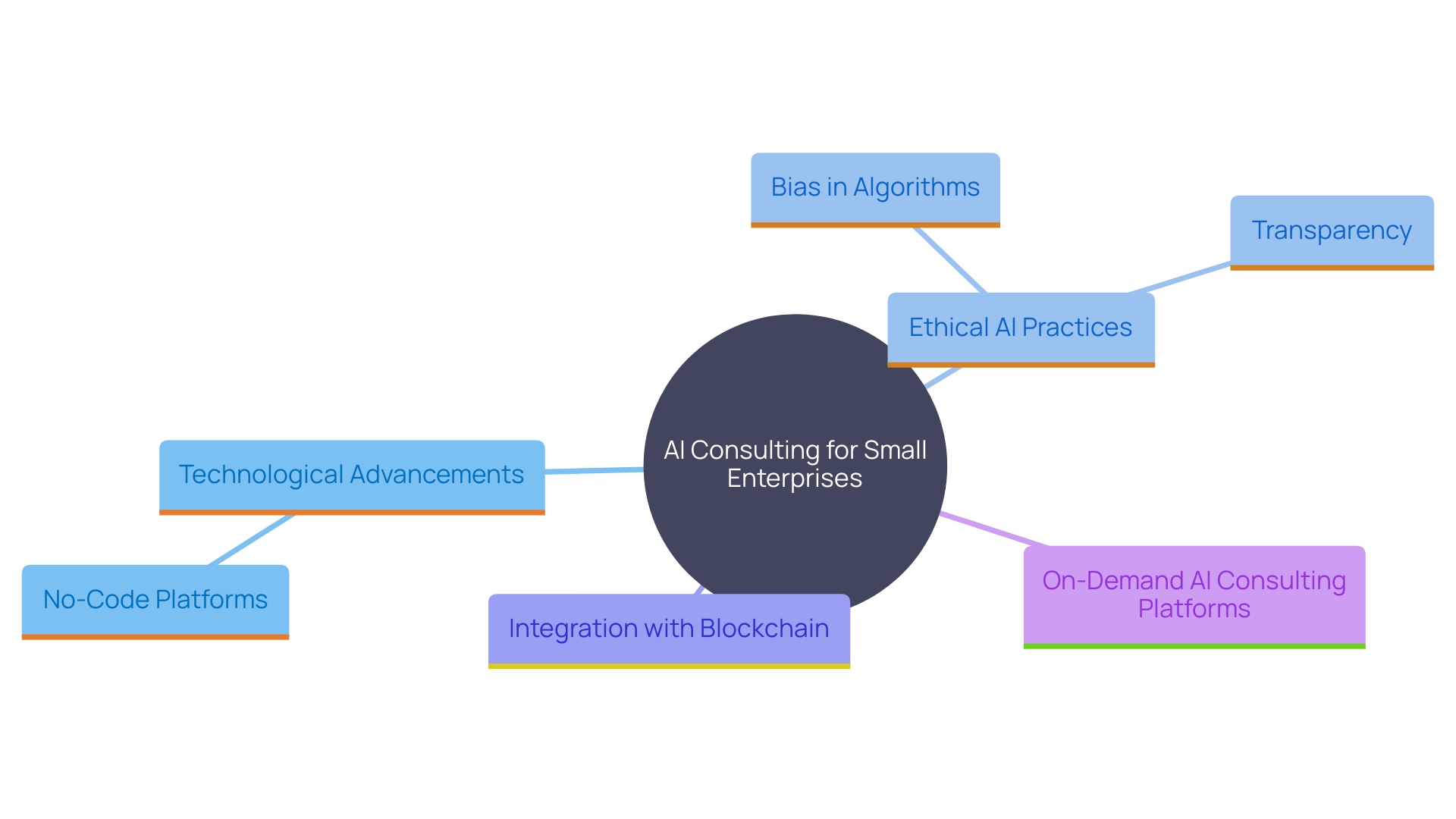
Conclusion
Artificial intelligence has emerged as a transformative force for small businesses, offering significant opportunities for operational efficiency and strategic growth. AI consultants play a crucial role in this landscape, guiding organizations through the complexities of AI adoption and ensuring that solutions are tailored to meet unique business needs. By facilitating informed decision-making and ethical practices, AI consultants empower businesses to harness the full potential of technology, leading to streamlined processes and enhanced customer experiences.
The benefits of engaging AI consultants are manifold, from automating repetitive tasks to fostering a data-driven culture. Real-world examples demonstrate how early adoption of AI technologies can provide a competitive edge, highlighting the importance of staying ahead in an increasingly digital marketplace. Moreover, key areas such as customer service automation and predictive analytics offer immediate, impactful enhancements that can transform business operations and drive growth.
Selecting the right AI consultant is vital for small businesses aiming to leverage technology effectively. By focusing on industry-specific expertise and fostering open communication, businesses can ensure that their AI initiatives align seamlessly with overarching goals. Implementing best practices, such as setting measurable objectives and investing in data infrastructure, will further enhance the success of AI projects.
Looking ahead, the future of AI consulting is bright, with trends such as no-code platforms and ethical AI practices shaping the landscape. Small businesses that proactively embrace these advancements will not only navigate the complexities of AI but also position themselves for sustained success in a competitive environment. By investing in AI and addressing ethical considerations, businesses can confidently chart their course into the future, unlocking new levels of efficiency and innovation.
Introduction
In an era where communication channels are constantly evolving and expanding, the ability to effectively analyze and leverage communication data has never been more critical. Communication mining, a sophisticated process of extracting actionable insights from various forms of communication, holds the key to unlocking unprecedented levels of efficiency and engagement within organizations. By employing advanced analytical techniques such as natural language processing, machine learning, and sentiment analysis, businesses can transform unstructured communication data into strategic intelligence.
This article delves into the intricacies of communication mining, exploring its fundamental principles, key techniques, and real-world applications. From enhancing customer service and marketing strategies to revolutionizing internal communications and operational processes, the potential benefits of this technology are vast. Furthermore, the future trends and ethical considerations surrounding communication mining will be examined, providing a comprehensive understanding of how organizations can harness its power responsibly and effectively.
What is Communication Mining?
Data mining entails the systematic examination of interaction data to derive significant insights and trends. This includes a wide variety of forms of interaction, such as emails, chat messages, social media exchanges, and phone conversations. Utilizing advanced analytical methods, entities can achieve a clearer insight into trends, increase engagement, and improve overall efficiency in interaction.
For instance, tools like AI-driven solutions can simplify interactions with complex systems, improving productivity and accessibility. IBM’s Watsonx Assistant for Z, for example, uses natural language processing and machine learning to enable users to interact with mainframes using plain language. Such innovations can bridge the skills gap and promote more widespread adoption of advanced technologies.
Furthermore, companies such as Qualtrics leverage extensive experience information to assist firms in recognizing and tackling friction points, attracting top talent, and introducing the appropriate products to the market. With almost 20,000 entities utilizing its AI features, Qualtrics has created one of the largest repositories of human sentiment worldwide, showcasing the strength of sentiment analysis to achieve substantial business results.
Furthermore, the exponential increase in information volume and channels requires effective strategies for handling and analyzing this material. Advanced AI tools provide promising solutions to improve productivity, efficiency, and collaboration, ensuring that organizations can keep pace with the increasing demands of contemporary interaction environments.
How Communication Mining Works
Communication mining utilizes advanced algorithms and processing techniques to analyze extensive volumes of communication information, often sourced from issue trackers. These tools, integral to software development, manage diverse information such as requirements and maintenance tasks. With agile methodologies gaining prominence, the complexity of issue trackers has surged, encompassing numerous projects and countless issues. Natural Language Processing (NLP) is crucial in interpreting text information, transforming unstructured text into structured formats by employing syntactic and semantic analysis. As one expert explains, NLP enables computers to comprehend and respond to human language meaningfully by applying Natural Language Understanding (NLU) and Natural Language Generation (NLG). Simultaneously, machine learning algorithms identify patterns and trends within this information. For instance, in the realm of issue trackers, these algorithms help navigate and manage the evolving web of issues, facilitating the extraction of actionable insights. This multi-step process—gathering data from various sources, cleansing it, and then analyzing it—ultimately informs strategic decisions, enhancing operational efficiency and productivity.
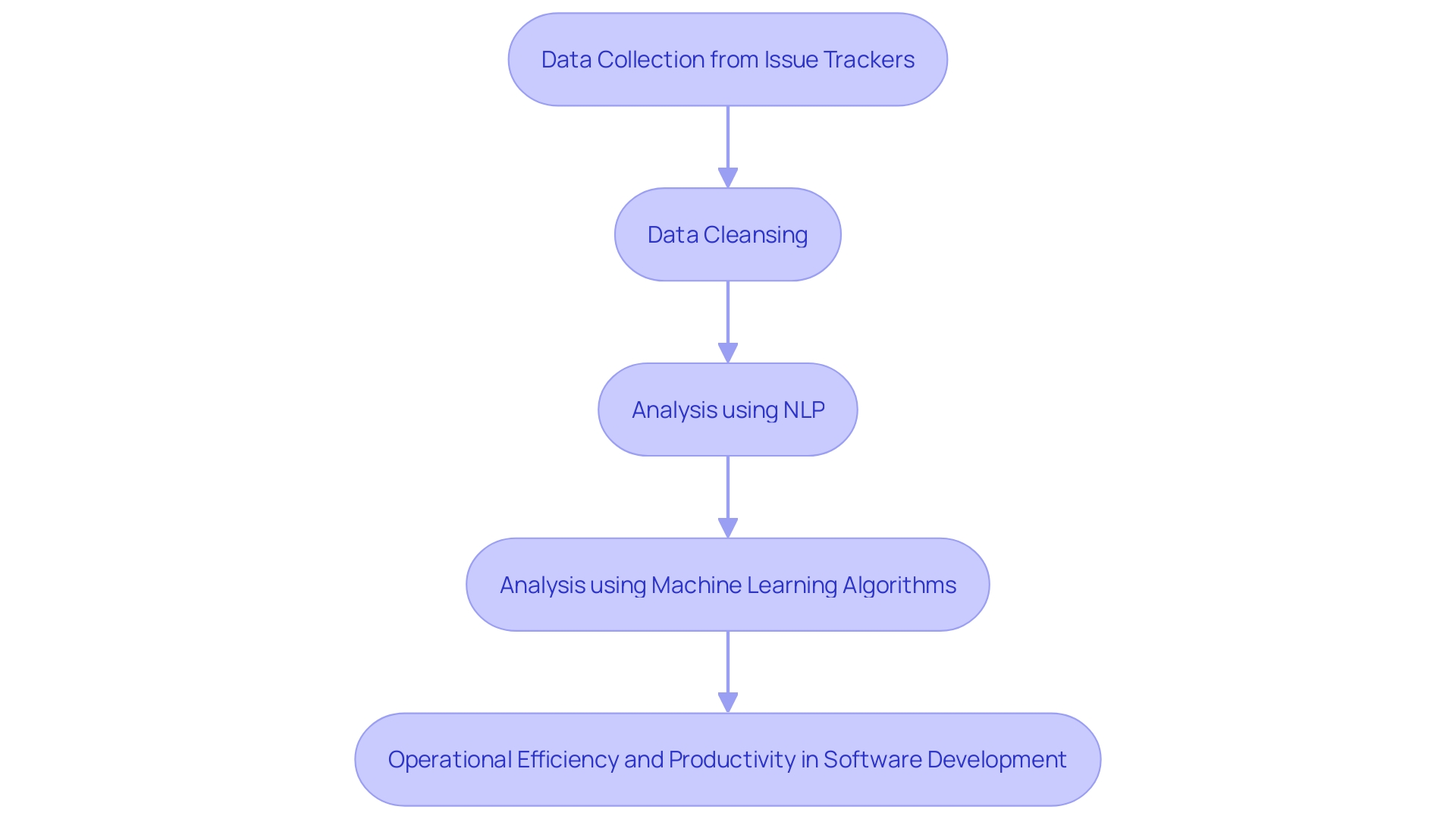
Key Techniques in Communication Mining
Several advanced techniques are pivotal in information extraction, each offering unique insights into organizational interactions. Sentiment analysis, for instance, utilizes machine learning and natural language processing to determine the emotional tone behind words, allowing businesses to assign quantitative scores to subjective opinions. This method has proven invaluable in gauging public perception, as evidenced during the COVID-19 pandemic when researchers used sentiment analysis to measure public responses to news and developments surrounding the virus.
Topic modeling is another crucial technique that identifies common themes across various interaction channels. This approach was effectively demonstrated in a few-shot pipeline for topic analysis during the FIFA World Cup in Qatar, showcasing its ability to uncover prevailing topics in large datasets.
Network analysis, on the other hand, examines the relationships and interactions between different communicators. This technique can reveal key influencers and communication bottlenecks, offering a detailed map of how information flows within a company. According to Hossein Hassani and Nadejda Komendantova, this type of social intelligence analysis aids us in comprehending the wider societal effects of our online interactions, offering a deeper insight into market dynamics and trends.
Combined, these techniques enable entities to transform qualitative feedback into quantifiable metrics, improving their capacity to hear from customers at scale and adopt data-informed strategies.
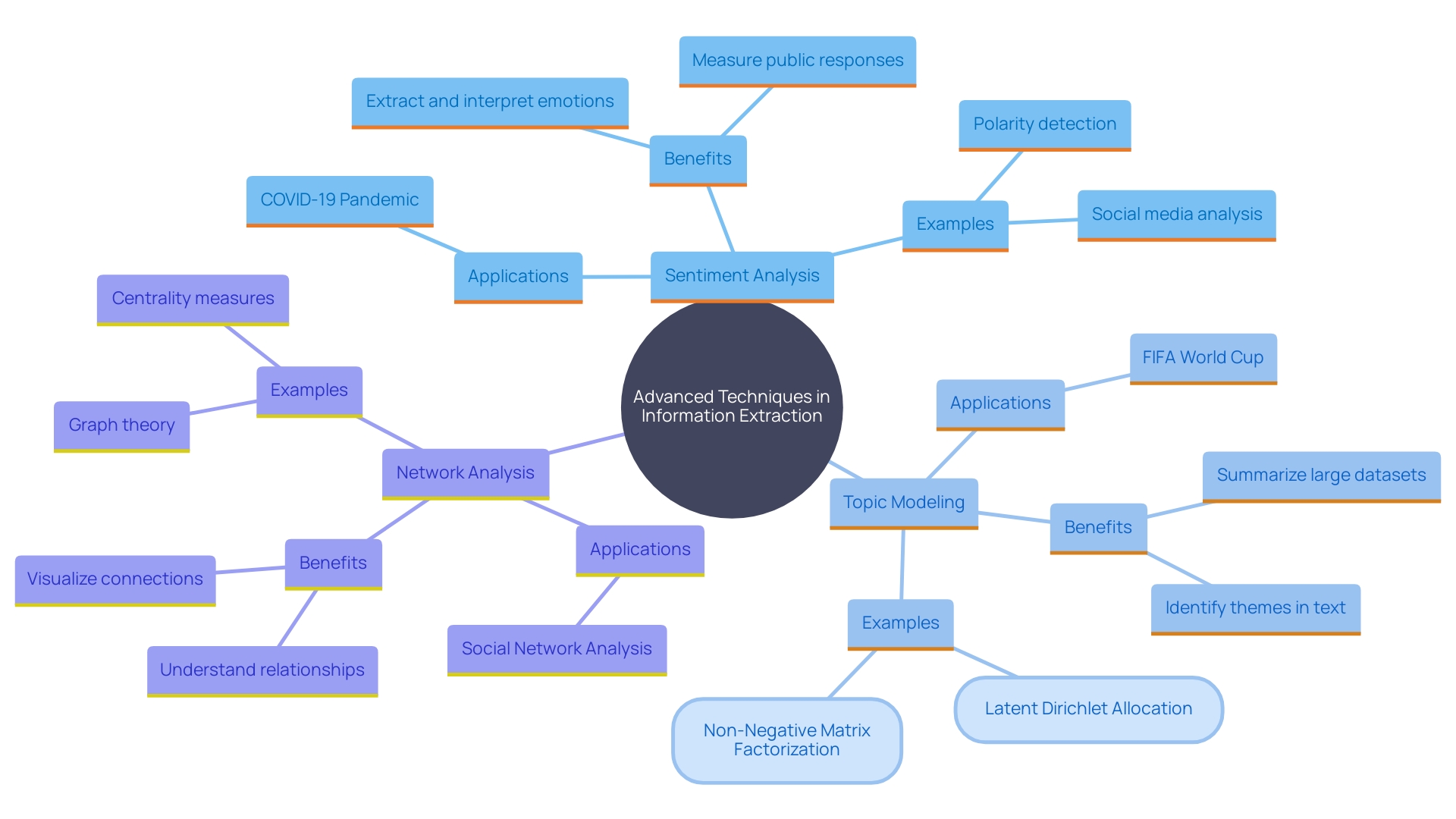
Applications of Communication Mining
‘Communication analysis offers transformative potential across various industries by leveraging data to enhance efficiency and productivity.’. In the customer service sector, this technology enables organizations to significantly improve response times, streamline operations, and boost customer satisfaction. By identifying common issues and preemptively addressing them, companies can move from reactive to proactive and even preemptive service models. This shift not only resolves problems before they affect customers but also enhances overall service quality.
In marketing, dialogue analysis enables brands to closely observe social media discussions, offering insights into consumer preferences and emerging trends. ‘With 5.04 billion social media users worldwide and an annual growth rate of 5.6%, this information is invaluable for crafting targeted marketing strategies that resonate with a broad audience.’. The ability to analyze real-time social media interactions helps brands stay ahead of the curve and adapt quickly to changing consumer behaviors.
Within organizations, information analysis can transform internal dialogue by promoting better collaboration and identifying areas for enhancement among teams. For instance, developing a shared information model and standardized analytical frameworks, as observed with major telecommunication groups, can accelerate the rollout of new use cases and innovations from months to just weeks. This kind of approach not only enhances operational efficiency but also drives technology transformation and revenue generation, aligning with the evolving priorities of modern customer care leaders.
Spotify’s success in integrating communication mining into their podcast platform is a testament to its effectiveness. By examining user information and feedback, Spotify has managed to expand its podcast offerings significantly, now hosting over 100,000 video podcasts globally. ‘This strategic use of information has not only increased user engagement but has also positioned Spotify as a leader in the audio content industry.’.
Incorporating data mining with existing APIs further enhances its advantages. This integration facilitates smooth data collection and analysis, offering companies with actionable insights in real-time. The exponential rise in information exchange volume and channels underscores the necessity for such advanced tools to maintain high-quality interactions and efficient workflows. By adopting these technologies, businesses can not only enhance their operational processes but also improve their overall interaction strategies, ensuring sustained growth and competitiveness in a rapidly evolving digital landscape.
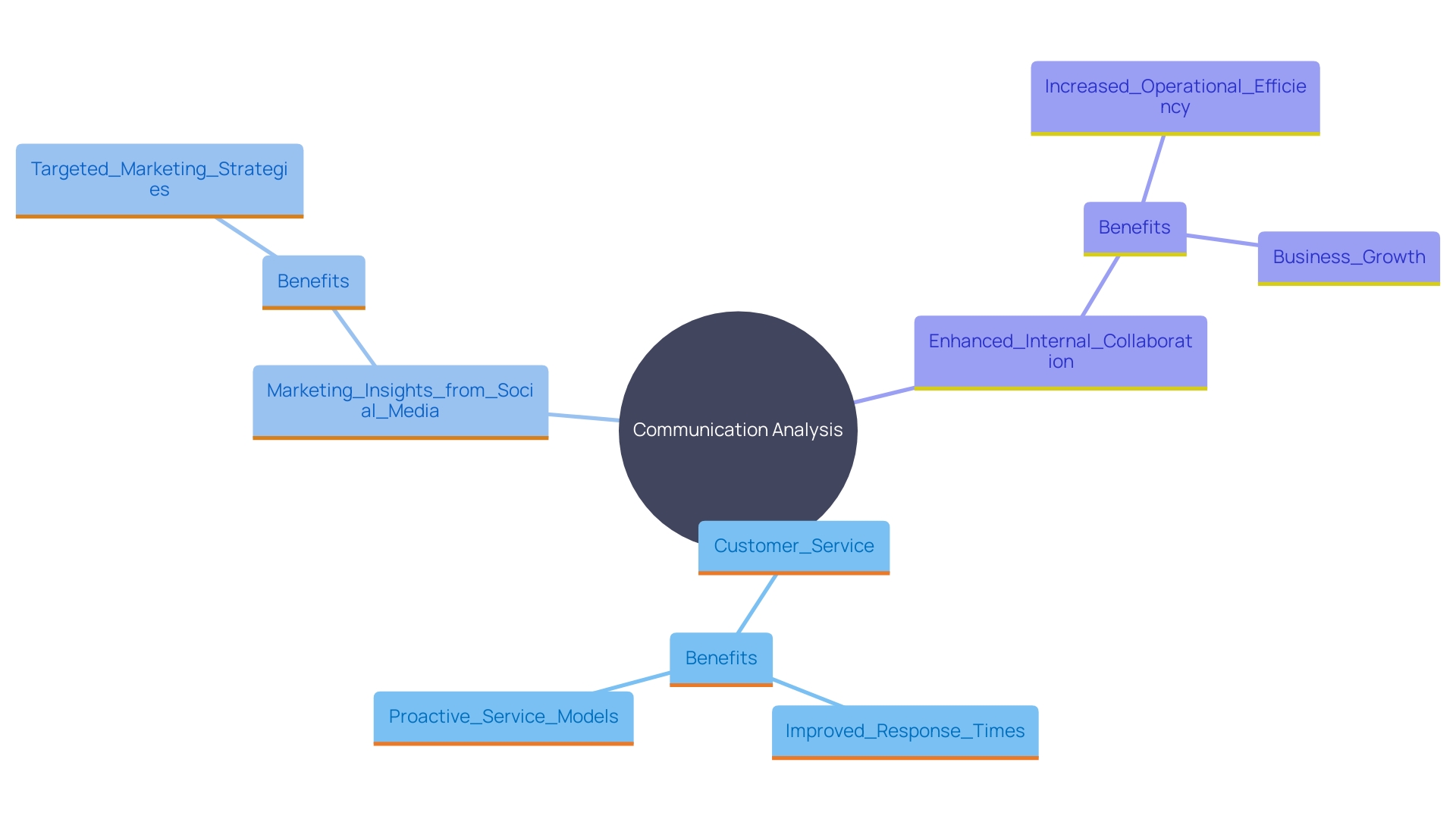
Benefits of Communication Mining for Businesses
The benefits of information extraction are extensive and transformative for organizations. By examining interaction data, businesses can make knowledgeable, data-driven choices that improve customer engagement through personalized interactions. This technology simplifies internal interaction processes, enabling seamless collaboration and efficiency.
Utilizing insights from message analysis, companies can adjust and enhance their strategies to better address customer needs, ultimately driving growth. For example, a recent study showed that 84% of entities perceive integrated messaging solutions as the future of business interactions. This highlights the vital role of effective interaction in maintaining competitive advantage and operational excellence.
Furthermore, information extraction assists organizations in navigating the intricate terrain of contemporary digital engagement. As emphasized in a study on the role of business in society, top CEOs stress the significance of prioritizing interactions at the heart of their duties, engaging deeply with stakeholders. This approach not only fosters a culture of empathy and understanding but also propels organizational success.
In the context of worldwide operations, tools such as Crawford Technologies’ ILA, which offers real-time multilingual interaction, illustrate the practical uses of information extraction. Such tools ensure accessibility and inclusivity, eliminating miscommunication and enhancing user experience across diverse customer bases.
Ultimately, information extraction provides companies with the resources to not only enhance internal processes but also to foster more significant, tailored interactions with clients, promoting sustained growth and operational efficiency.
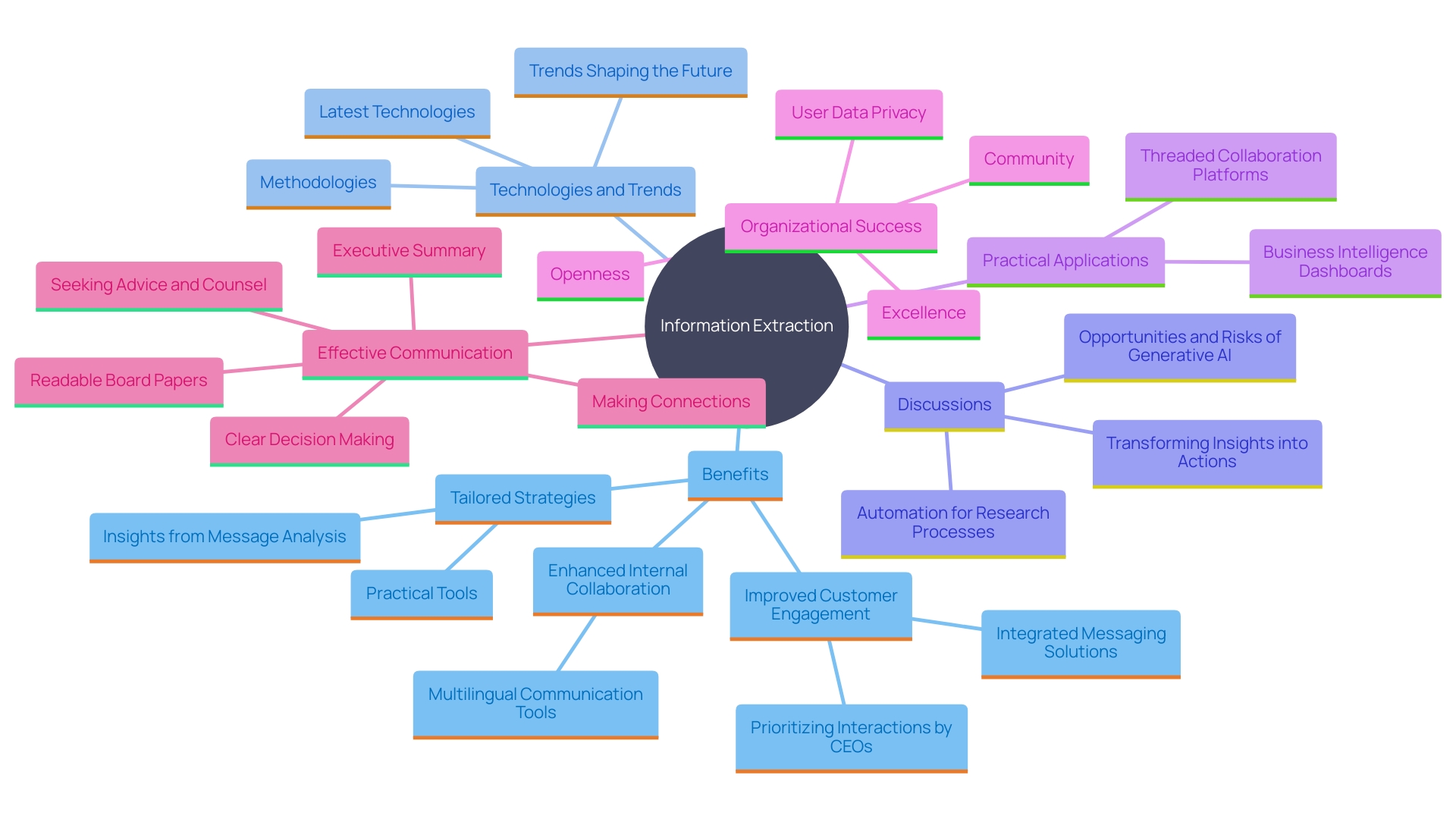
Real-World Use Cases of Communication Mining
Many organizations have effectively utilized information extraction to improve their operations, demonstrating its extensive potential. For example, Western Union, a prominent financial services firm, employed analytics to examine customer interactions across different platforms. By analyzing this data, they gained insights into customer personas, purchasing habits, and efficient interaction channels, which allowed them to reduce churn and optimize marketing efforts. This strategic approach helped Western Union stay competitive in the evolving market by providing a better customer experience and operational efficiency.
Likewise, another persuasive illustration originates from a financial organization that utilized information analysis to identify inefficiencies in its customer service procedures. By examining customer feedback and interaction patterns, they were able to streamline their operations, resulting in significantly faster response times and enhanced customer satisfaction. This case highlights the significance of incorporating advanced analytical models and a cohesive information strategy to drive operational enhancements and elevate customer experiences.
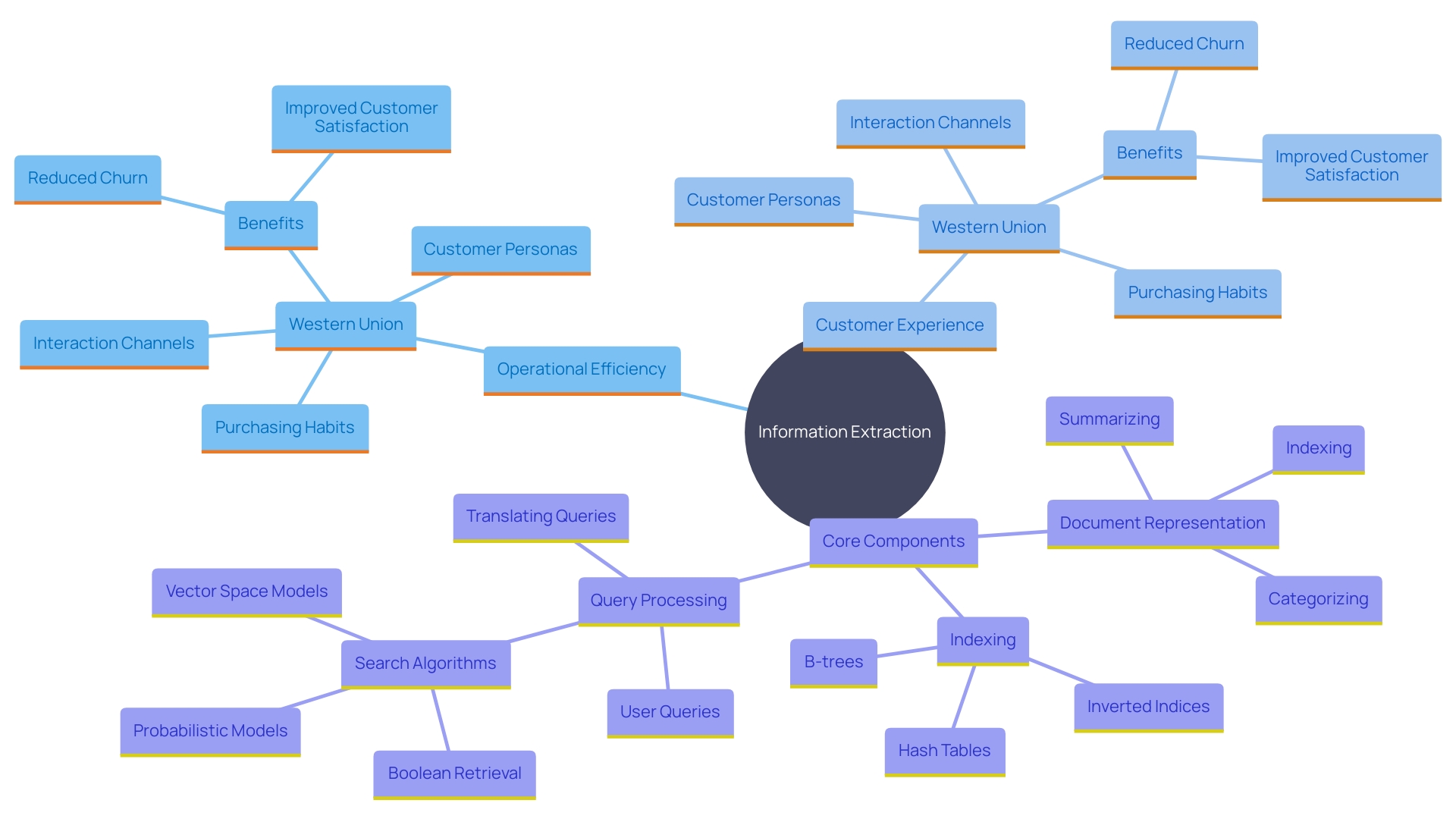
Future Trends in Communication Mining
The future of communication mining is poised to be revolutionized by advancements in artificial intelligence (AI) and machine learning. As these technologies advance, the ability to examine unstructured information will become significantly more refined, allowing entities to derive deeper and more practical insights. According to a report by the Center for Economic Studies, the integration of AI is being adopted in various business applications, highlighting its potential to enhance operational efficiency significantly.
One notable case study involves a telecommunications group that established a common data model across multiple countries. This model facilitated the rapid deployment of analytical models, reducing the time frame for implementing new use cases from five months to just six weeks. This demonstrates how AI-driven analytics can expedite processes and drive cross-functional improvements.
Moreover, real-time analytics integration will enable organizations to respond swiftly to evolving interaction dynamics. As emphasized by specialists from Aragon Research, AI and Copilots are poised to enhance interaction and collaboration, enabling businesses to remain at the forefront of innovation trends. In the words of Antony, a professor of computer science, ‘We’re a largely text-based industry; we deal in language and the nuances of it all day long. So given that it’s large language models (LLMs) that are at the frontier, pushing the boundaries of what we thought AI is capable of, that obviously means a lot more opportunity, but also a lot more risk for our industry specifically.’
This advancement in information analysis not only promises improved efficiency and productivity but also offers a chance for companies to leverage the full potential of AI-driven insights. Entities that adjust to these developments will be better equipped to manage the intricacies of contemporary messaging environments.
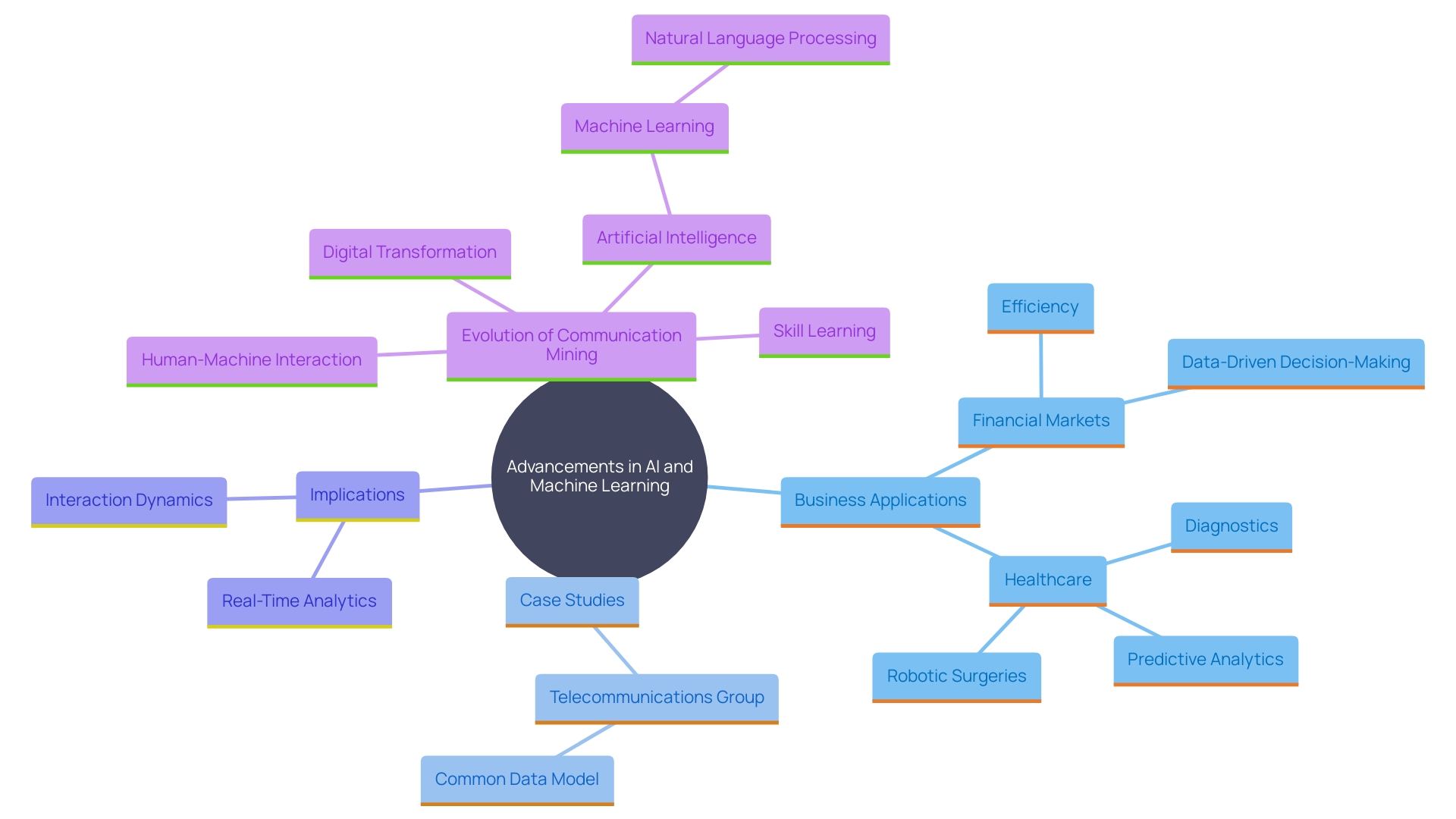
Ethical Considerations and Responsible Use
While communication mining offers significant advantages, ethical considerations must be addressed. Clarity in information gathering and adherence to privacy regulations are paramount. For instance, the U.S. Census Bureau’s adoption of differential privacy highlights the importance of algorithmic transparency and participation, ensuring that user information is protected while still allowing valuable insights to be drawn. Accountable information extraction entails utilizing data to improve dialogue without violating personal privacy, thereby nurturing trust between organizations and stakeholders. As noted by experts, ethical research requires more than just a formal review; it involves a commitment to respect, beneficence, and justice. Organizations should document their ethical decisions and consider the norms and expectations of the communities involved. This approach not only mitigates risks but also ensures that the benefits of communication mining are shared responsibly and transparently.
Conclusion
The insights derived from communication mining present a transformative opportunity for organizations to enhance efficiency and engagement across all levels. By systematically analyzing communication data from various channels, businesses can uncover meaningful patterns and trends that drive informed decision-making. The application of advanced techniques such as natural language processing, sentiment analysis, and machine learning equips organizations to adapt their strategies, ensuring they remain responsive to customer needs and market dynamics.
The real-world applications of communication mining illustrate its vast potential across industries. From improving customer service response times to refining marketing strategies, organizations that embrace this technology can transition from reactive to proactive operational models. Furthermore, the integration of communication mining with existing APIs allows for real-time insights, enabling businesses to maintain high-quality interactions in an increasingly complex communication landscape.
As organizations look to the future, the advancements in AI and machine learning will further amplify the capabilities of communication mining. By harnessing these technologies, businesses can extract deeper insights and drive cross-functional improvements with greater speed and efficiency. However, it is crucial to navigate the ethical considerations surrounding data use.
Prioritizing transparency and privacy will foster trust and ensure that the benefits of communication mining are shared responsibly.
In summary, communication mining not only streamlines internal processes but also enhances customer interactions, driving sustained growth and operational excellence. Organizations that leverage these capabilities will be well-positioned to thrive in a rapidly evolving digital environment, ensuring they remain competitive and responsive to the needs of their stakeholders.
Introduction
In today’s fast-paced business environment, the quest for operational efficiency and strategic edge has never been more critical. Directors of Operations Efficiency face myriad challenges, from handling vast amounts of data to streamlining financial processes and enhancing customer interactions. This article delves into practical, actionable solutions to these challenges through the power of automation.
Explore how Python can revolutionize data analysis, accounts payable software can optimize financial workflows, and CRM automation can enhance customer management. Additionally, learn about the transformative potential of platforms like Zapier for integrating apps, AI-driven tools for marketing, and SaaS solutions for automating diverse business processes. Discover the significant impact of sales and marketing automation and the cutting-edge advancements in Robotic Process Automation (RPA) that can scale operations to new heights.
Each section provides insights into leveraging technology to achieve unparalleled efficiency, accuracy, and productivity, ensuring your organization remains competitive and innovative in a rapidly evolving marketplace.
Automated Data Analysis with Python
Harness the power of Python to automate data analysis processes and transform raw data into actionable insights. By leveraging robust libraries like Pandas and NumPy, businesses can efficiently analyze large datasets, uncovering patterns and trends that drive strategic decisions. This automation not only accelerates decision-making but also minimizes human error, ensuring more accurate outcomes.
In the retail sector, for instance, data from various touchpoints such as advertisements, product clicks, purchases, and reviews form a goldmine of information. Using Python, eCommerce companies can create detailed consumer personas and comprehend purchasing behaviors, allowing for more effective customer targeting and lowering operational expenses. Automating these analyses helps businesses stay competitive by providing timely insights into customer behavior and market trends.
Python’s extensive ecosystem, including tools like Jupyter Notebook, facilitates a systematic analysis workflow. This guarantees uniformity and preparation for the future of methodologies, as documented procedures can be re-applied to new information sets. Moreover, Python’s ability to handle big data through libraries such as Matplotlib for visualization further enhances the ability to make informed predictions and improve business operations.
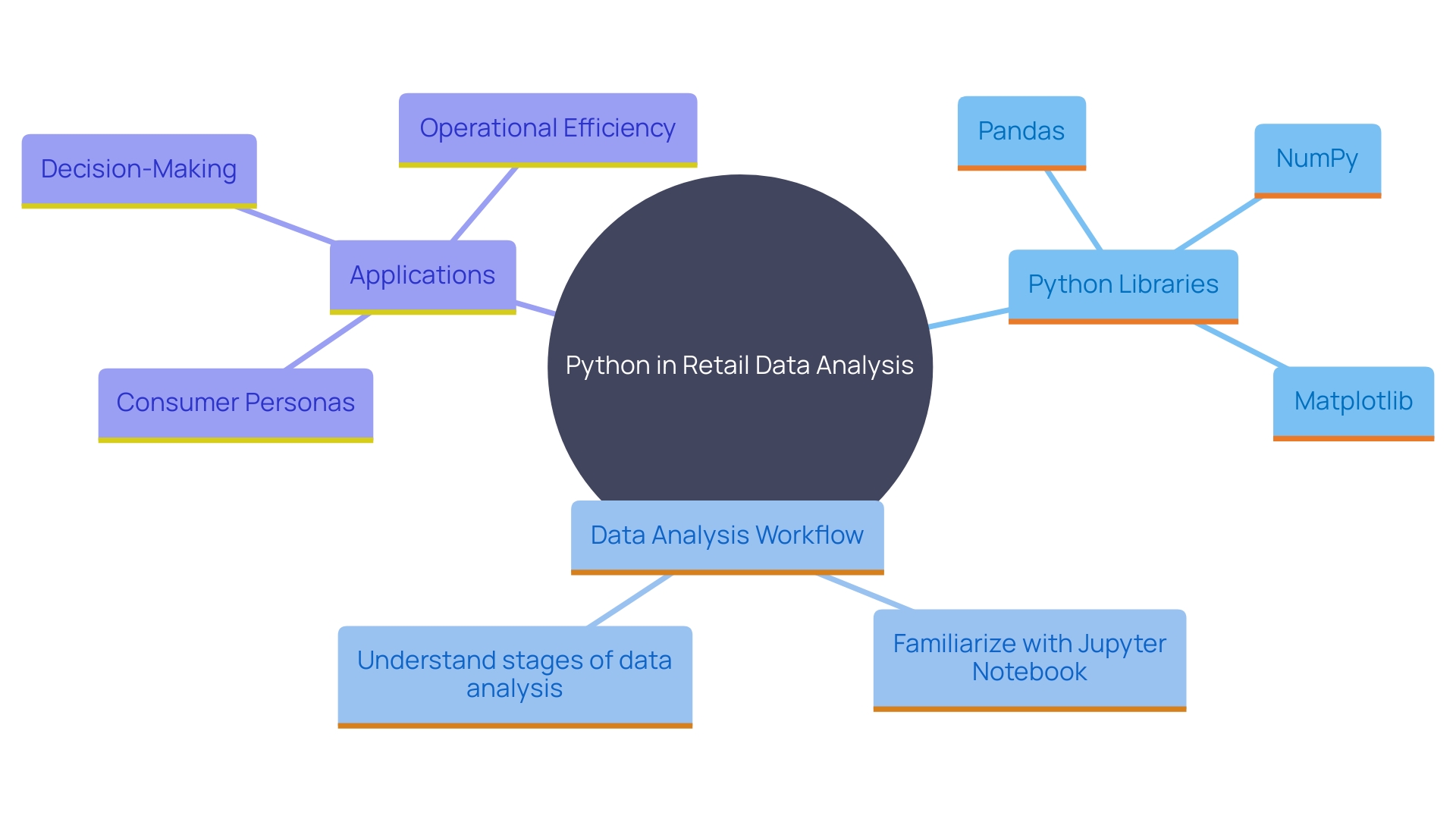
Streamlining Accounts Payable with AP Software
Adopting accounts payable software can transform the invoicing, approval, and payment methods in your organization. This system not only reduces processing time but also improves accuracy and optimizes cash flow management. According to a study by PYMNTS Intelligence and American Express, 29% of firms have already automated their accounts payable and receivable processes, witnessing significant benefits such as streamlined operations and improved financial accuracy.
Automated reminders and tracking features ensure no payments are overlooked, fostering better vendor relationships. Chris Macksey’s accounting firm, Prix Fixe, serves as a prime example of this transformation. By implementing automated processes, they saved 5 to 10 hours of work per client during end-of-year audits, dramatically improving efficiency and client satisfaction.
Furthermore, the increase in productivity from mechanization is unmatched. As experts indicate, assigning simpler tasks to AI enables your skilled personnel to concentrate on more complex work, improving overall performance. Delivery Hero, for example, greatly diminished their IT workload by streamlining account recovery procedures, highlighting the extensive possibilities of mechanization in various sectors.
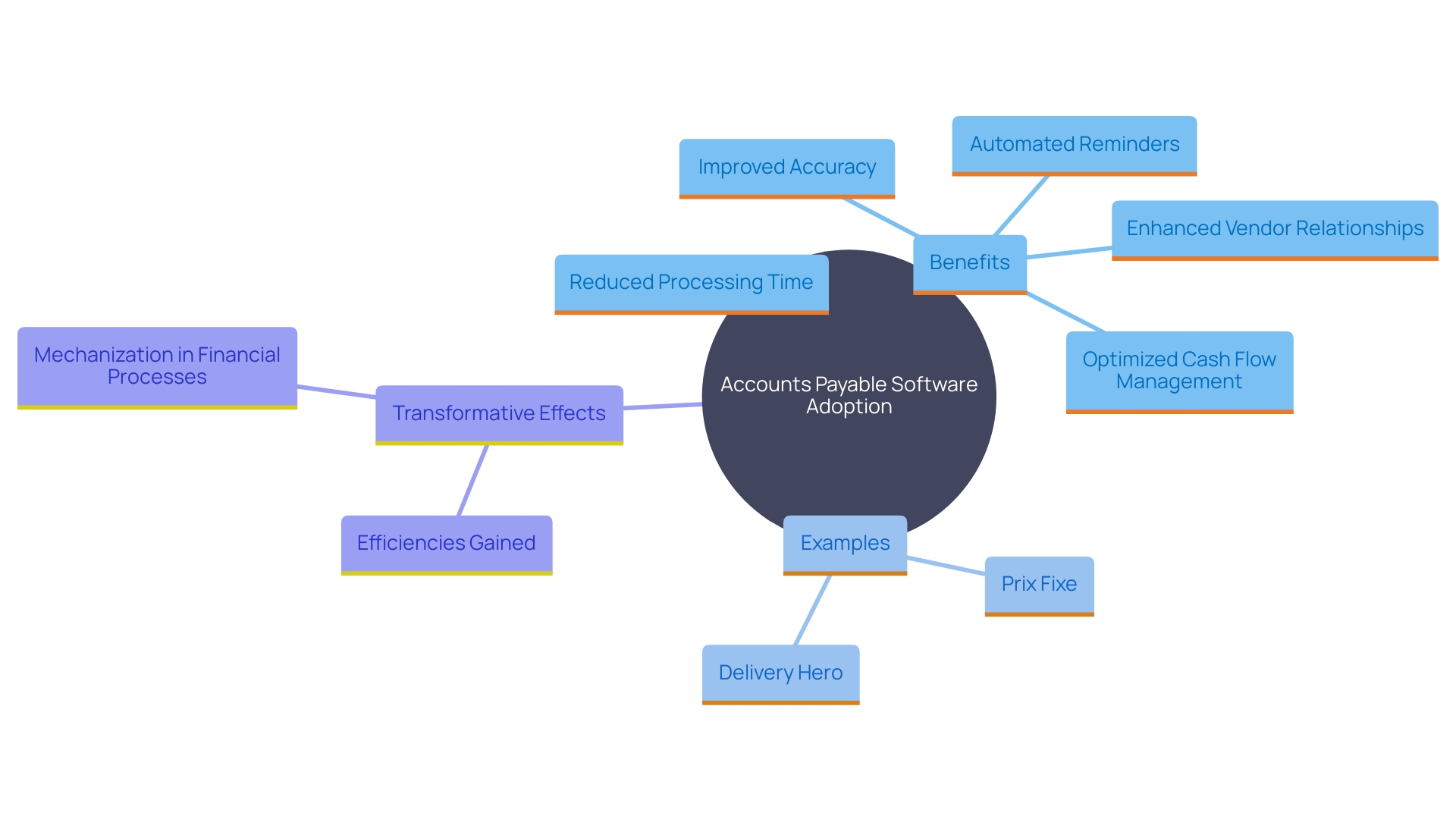
Automating CRM Workflows for Enhanced Customer Management
Incorporating mechanization within your Customer Relationship Management (CRM) system can transform customer interactions by making them more efficient and personalized. Automated follow-ups ensure that no potential customer slips through the cracks, while lead scoring helps prioritize efforts on the most promising opportunities. Personalized marketing campaigns, tailored through AI, adapt to individual customer behaviors and preferences, enhancing engagement and loyalty. As Vivek Sharma, CEO at Movable Ink, highlights, Ai’s ability to automatically tailor campaigns based on shifting customer behaviors can fundamentally change how businesses interact with their customers. This degree of mechanization not only saves time but also enables your team to concentrate on strategic initiatives, ultimately enhancing productivity and job satisfaction. In 2024, 94% of corporate executives prefer a unified platform for app integration and process automation, underscoring the growing importance of streamlined operations. Embracing these advancements in CRM technology can provide a significant competitive edge by improving customer experience and operational efficiency.
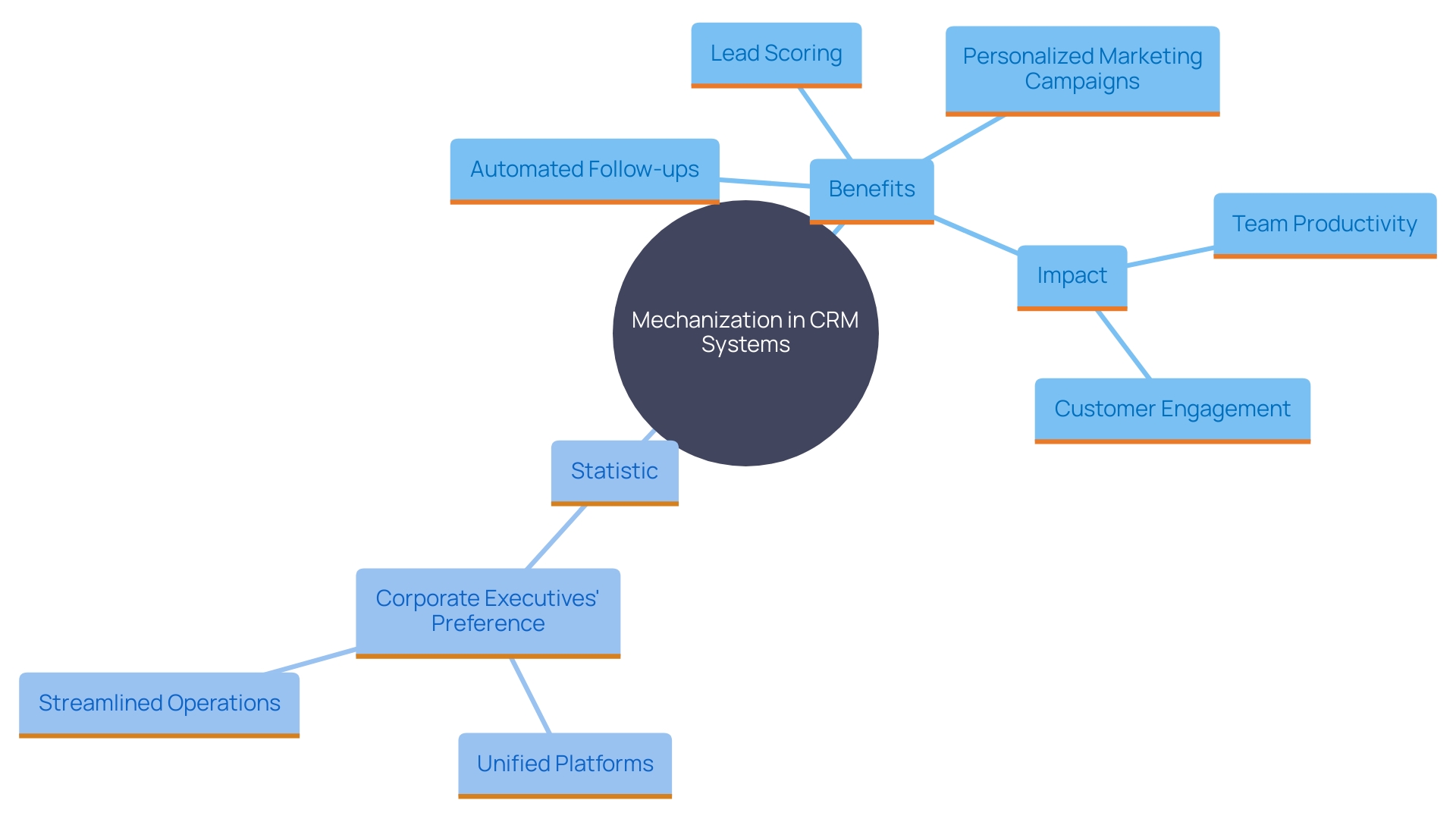
Leveraging Zapier for Seamless Integration and Automation
Zapier empowers businesses to seamlessly connect over 6000 apps and automate workflows without the need for coding expertise. By creating ‘Zaps,’ users can automate repetitive tasks such as information entry, email notifications, and file organization, drastically enhancing productivity across departments. Oleg, a specialist in process optimization, emphasizes how Zapier’s user-friendly platform enabled him to reduce operational expenses by 89 times while enhancing data processing capabilities. This capability is essential, particularly in light of the swift expansion in the industrial control market, anticipated to reach $264.69 billion by 2026. Zapier’s development from a workflow tool to a comprehensive system for streamlining processes allows both small business owners and large enterprises to innovate and execute tasks efficiently.
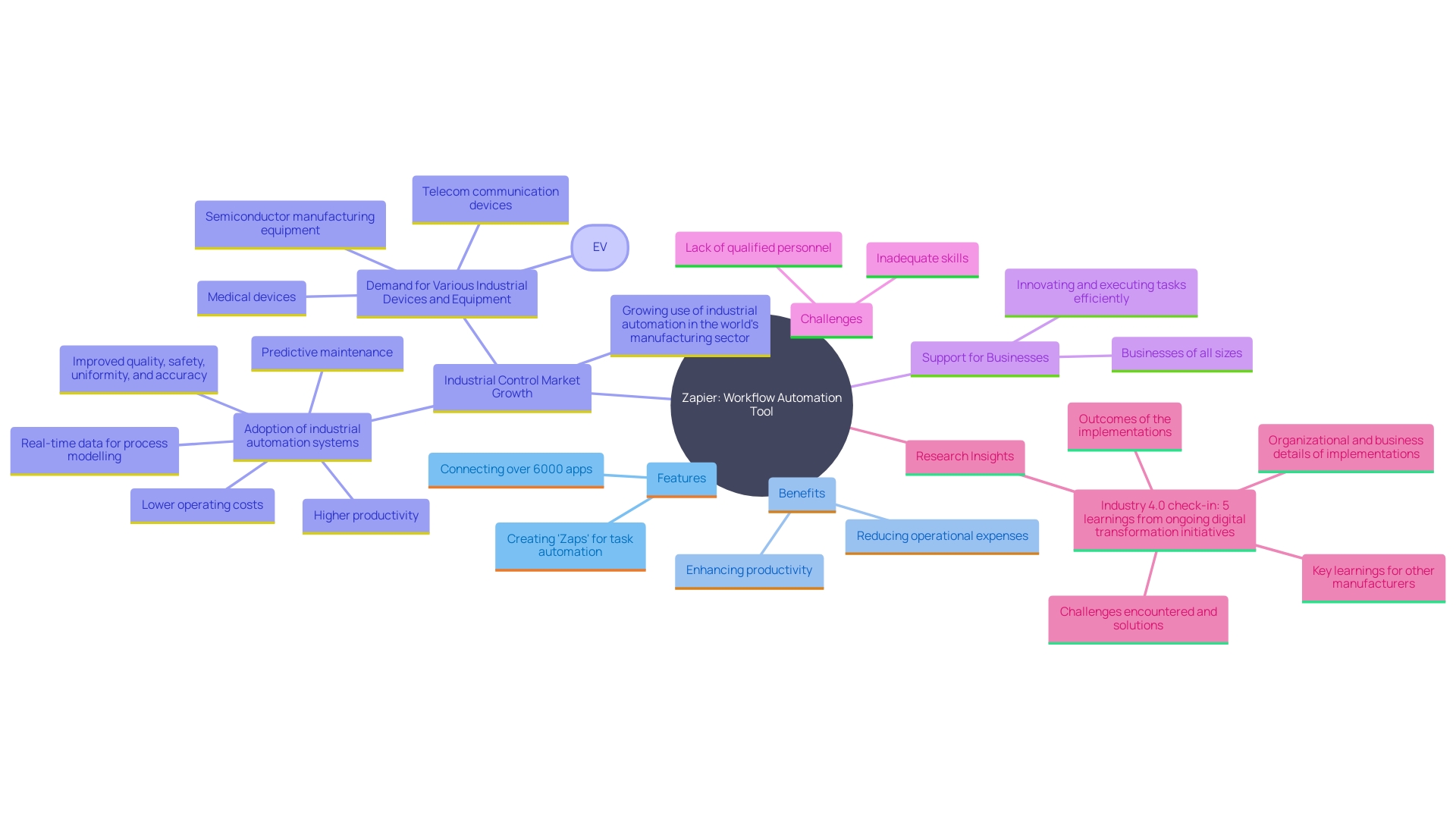
Implementing AI-Driven Marketing Automation
Harness AI-driven tools to revolutionize your marketing efforts at scale. By leveraging advanced automation software, you can analyze customer behavior, segment audiences effectively, and deliver highly targeted campaigns. This not only enhances engagement and conversion rates but also allows marketing teams to focus on strategic initiatives.
AI’s role in marketing has become indispensable, with 42% of small companies adopting AI tools, according to Pipedrive’s Annual State of Sales and Marketing report. The integration of AI in marketing strategies has evolved rapidly, driven by the need to stay ahead in a dynamic and competitive landscape. As noted by industry experts, ‘AI technology implementation – identify the right tools for your AI initiatives, and establish methods and processes to achieve reliable MLOps and ModelOps.’
Recent acquisitions, such as Siteimprove’s acquisition of MarketMuse, highlight the growing trend of integrating AI to optimize content strategies and execution. This ensures that content is not only generated efficiently but also optimized for both traditional and AI-driven search engines.
Data-driven marketing maturity is a continuous journey, requiring brands to embed data deeply into their operations and deliver technology-enhanced consumer experiences. Despite the challenges, AI and generative AI (GenAI) present significant opportunities for brands to enhance their productivity, profitability, and competitiveness. In fact, marketers have ranked AI implementation as their top priority and challenge, underscoring its pivotal role in shaping the future of marketing.
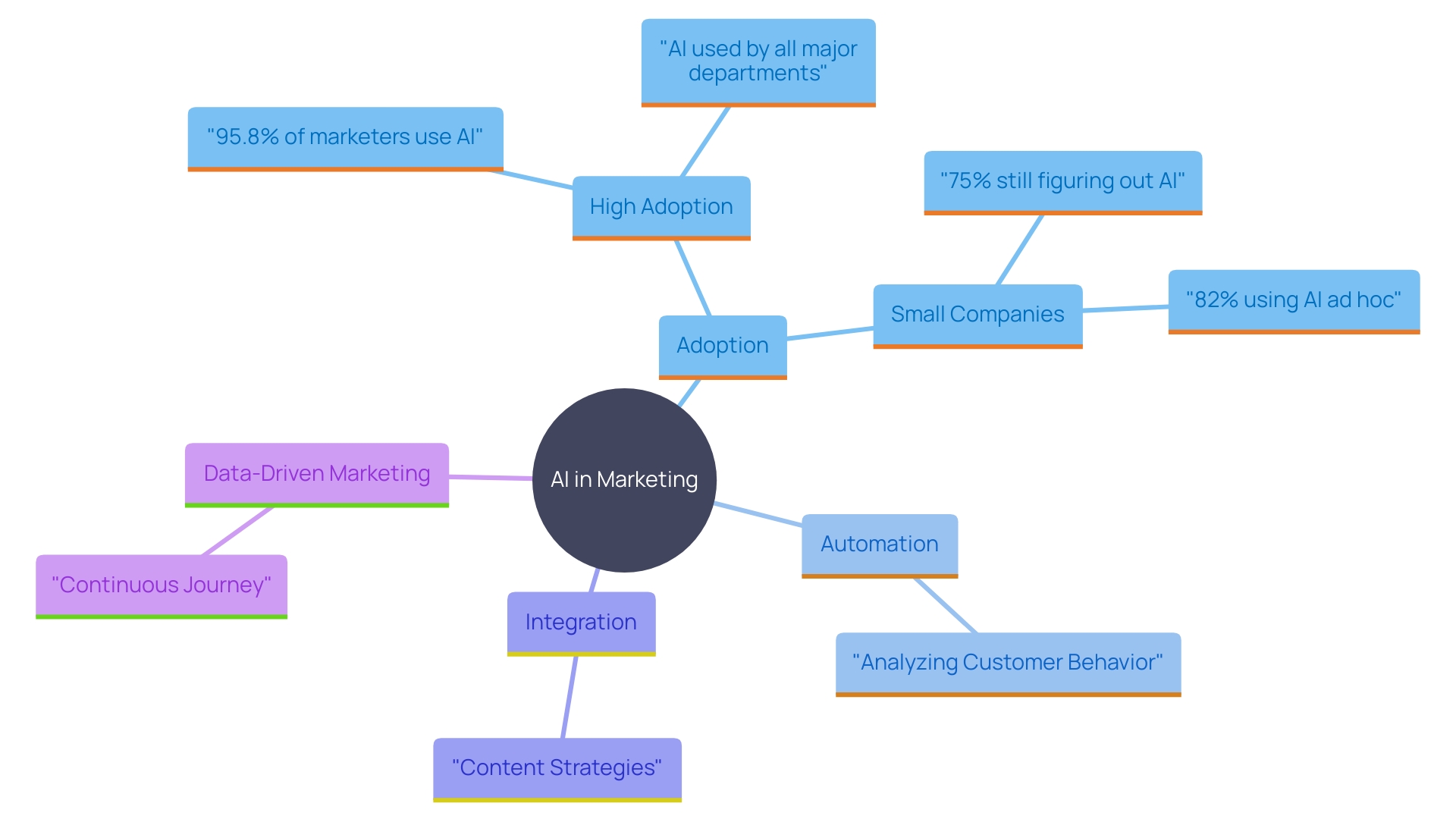
Automating Content Distribution with Sponsored Content
Improve your content marketing plan by utilizing technology to distribute sponsored material effortlessly across various platforms. This approach guarantees consistent messaging, maximizes reach, and saves valuable time, enabling marketing teams to focus on crafting high-quality content. By automating each step of the content dissemination workflow, such as generating ad variations for different platforms like Facebook, marketing departments can handle hundreds of creative assets efficiently. The recent acquisition of MarketMuse by Siteimprove, aimed at integrating content creation and strategy, exemplifies the industry’s shift towards reducing content waste and optimizing for both traditional and AI-driven search engines. This transformation in content marketing is part of a broader trend where legacy methodologies are being replaced by more efficient, automated workflows to meet the demands of modern digital media.
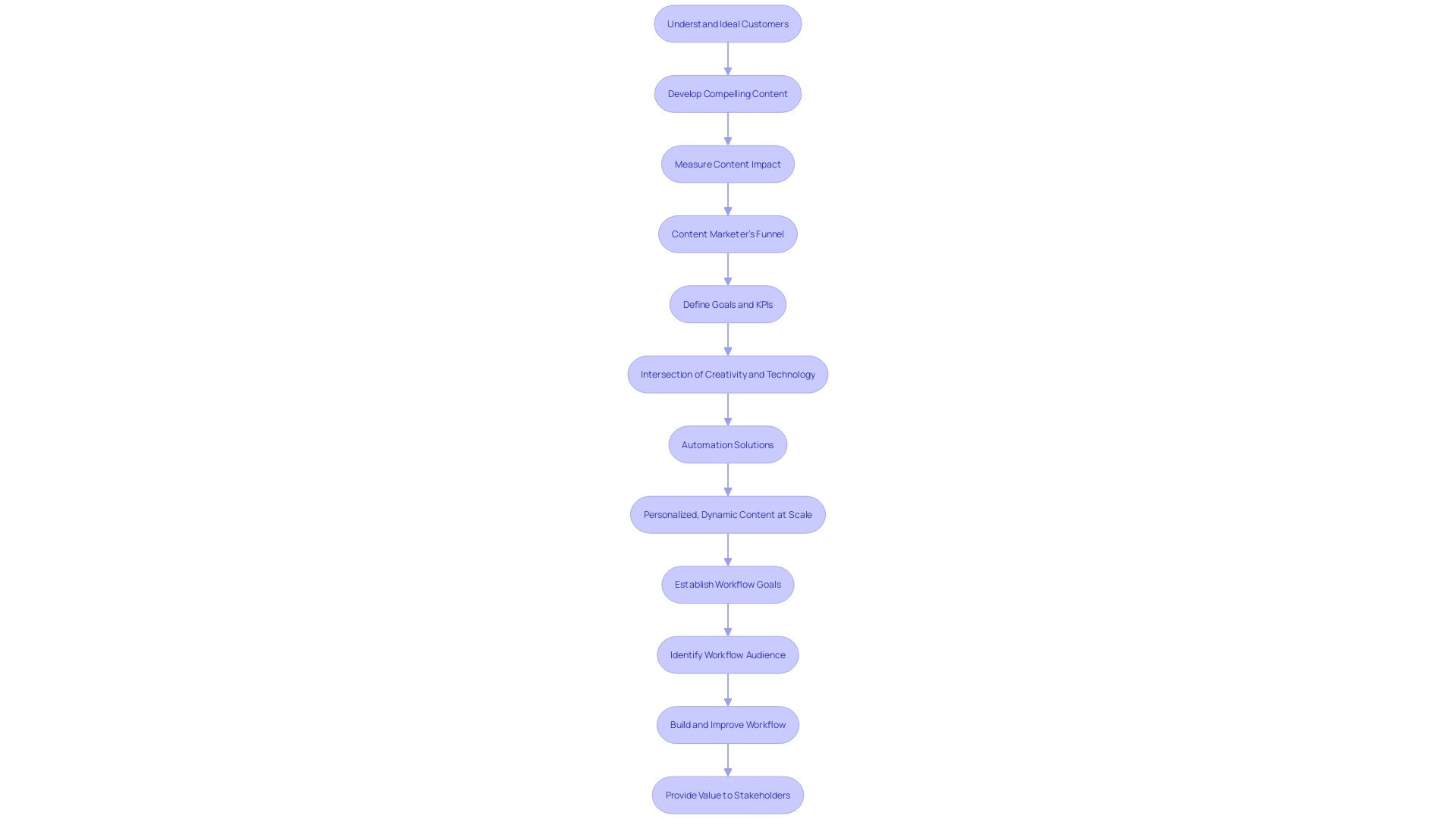
Enhancing Business Efficiency with Workflow Automation Tools
Utilizing workflow management tools is essential for streamlining and optimizing business processes. These advanced tools employ software applications, algorithms, and predefined rules to automate repetitive tasks, thereby minimizing manual intervention and reducing the risk of human error. This approach facilitates seamless communication and orchestrates the flow of work within an organization, ensuring that tasks are completed efficiently and consistently.
‘Workflow mechanization encompasses a range of solutions tailored to various sectors, including IT, finance, healthcare, and manufacturing.’. The choice between no-code, low-code, or high-code solutions depends on the user type, use cases, and complexity required. For example, DevOps groups could gain from specialized systems for mechanization, while wider organizational requirements might require general mechanization solutions.
The effectiveness of workflow streamlining is evidenced by its widespread adoption. A report from Zapier highlights that nearly all workers in smaller businesses handle repetitive tasks like sending notifications or managing permissions. Furthermore, mechanization plays a crucial role in contemporary software development, with engineering and IT departments overseeing 40% of an organization’s mechanized processes.
The industry’s growth further highlights its significance. Valued at $5.1 billion in 2022, it is projected to reach $7.1 billion by 2028. This surge is driven by the need to enhance efficiency and productivity across various fields, including research laboratories, where automation accelerates data analysis, streamlines operations, and reduces costs. As organizations continue to adopt digital transformation, placing technology at the center of end-to-end operations enables employees to concentrate on high-value tasks, thereby enhancing overall organizational performance.
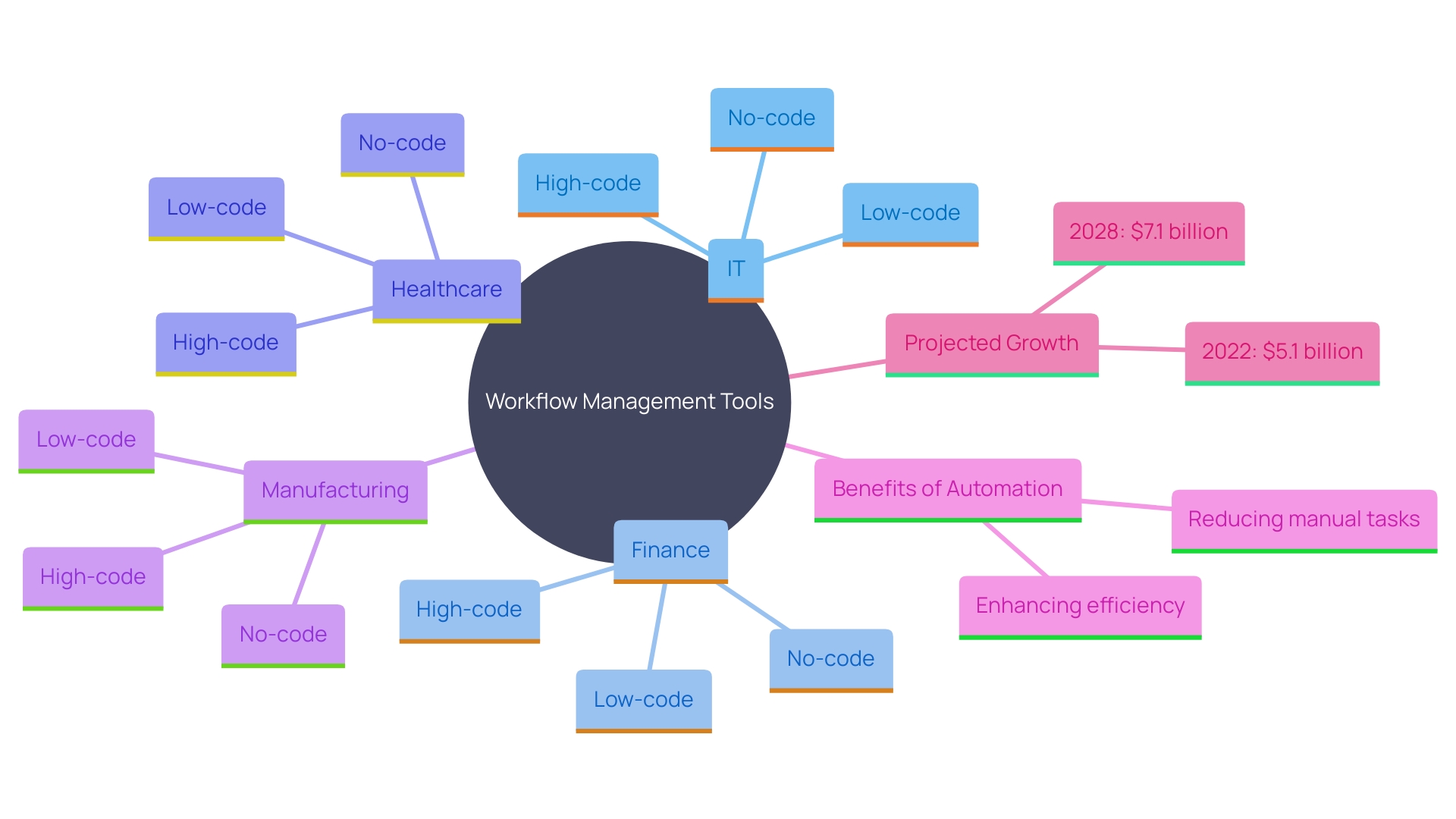
Using SaaS Solutions for Automated Business Processes
Embrace Software as a Service (SaaS) solutions to automate various organizational processes, including project management, HR tasks, and customer support. SaaS platforms provide scalable, cloud-based solutions that can swiftly adjust to changing organizational needs. By leveraging SaaS, companies can ensure clean, usable data, which is crucial for accurate analysis and operational efficiency. As mechanization becomes integral to modern business, statistics show that 83% of IT leaders believe workflow mechanization is essential for digital transformation. Furthermore, mechanization has improved jobs for 90% of knowledge workers, enhancing productivity for 66% of them. For instance, Specsavers, managing a complex global supply chain, developed in-house technologies to streamline operations and enhance customer experience. This exemplifies how SaaS can play a pivotal role in overcoming operational challenges and boosting efficiency.
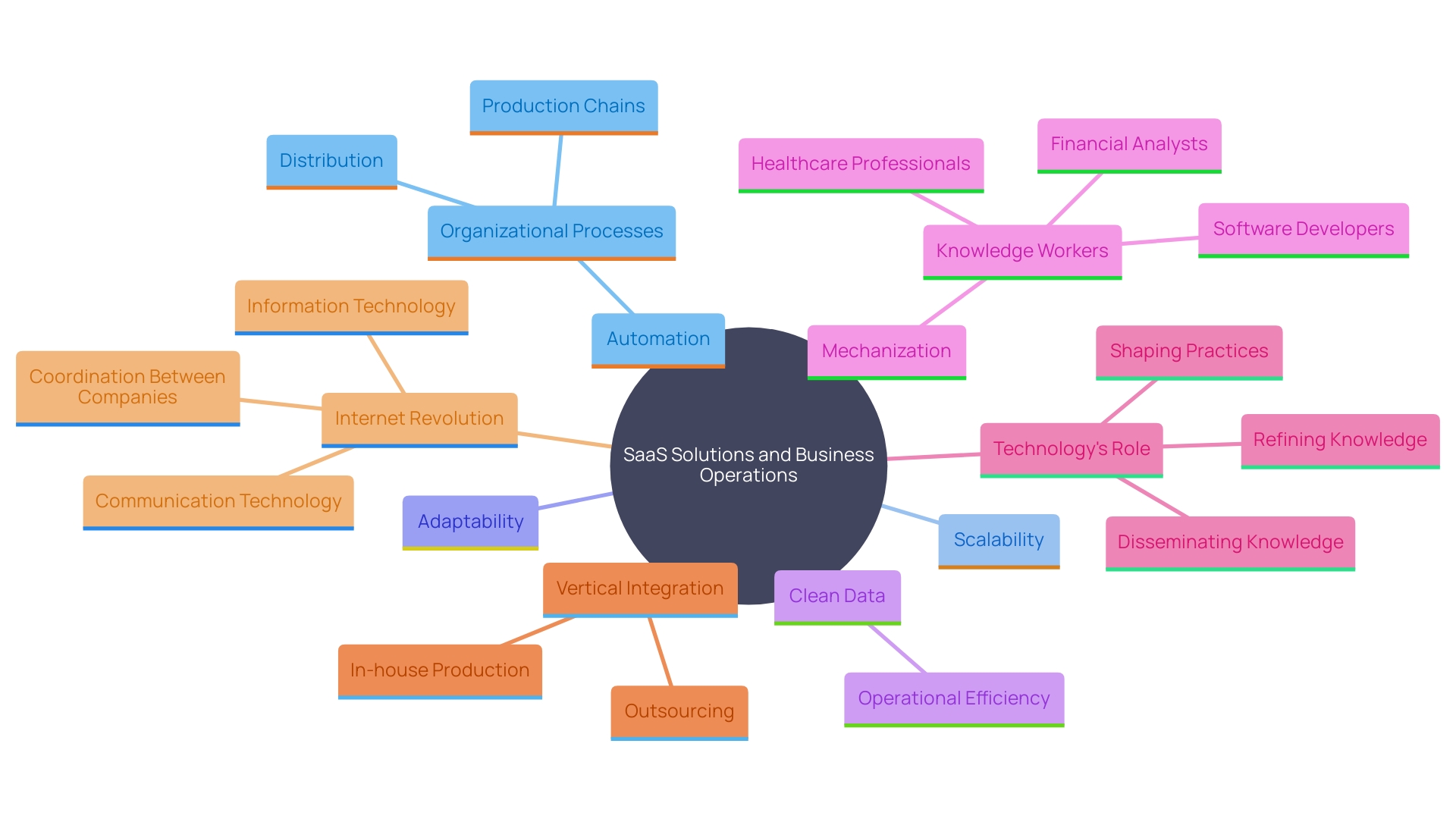
Integrating Automation in Sales and Marketing Strategies
Integrate automation into your sales and marketing strategies to significantly enhance lead generation and nurturing. By automating tasks such as email outreach, follow-ups, and reporting, companies can experience remarkable improvements in response times and sales performance. Employing generative AI (gen AI), which has experienced extensive integration across different organizational functions, can further enhance these processes. ‘Gen Ai’s promise of speed and efficiency in analyzing vast amounts of data, coupled with its precision in identifying patterns and insights that manual research might overlook, makes it an invaluable tool for today’s enterprises.’.
For instance, companies that have implemented gen AI in their B2B sales report notable outcomes and a real impact on their initial builds, indicating that the wide scale adoption of gen AI is not just probable but inevitable. Furthermore, sales automation software has emerged as a game-changer, particularly for small businesses, by increasing efficiency and driving growth. These tools manage leads, facilitate communication with customers, and track sales data, ultimately boosting productivity and revenue.
As highlighted by industry thought leaders, effective communication and collaboration are crucial for successful marketing strategies. Leveraging automated tools to streamline these processes can create meaningful connections with your audience and foster trust-based relationships. Prioritizing customer satisfaction and delivering high-quality services are essential strategies for creating positive experiences, especially in sectors like healthcare. Automation enables organizations to accomplish these objectives more effectively, ensuring they stay competitive in an AI-driven world.
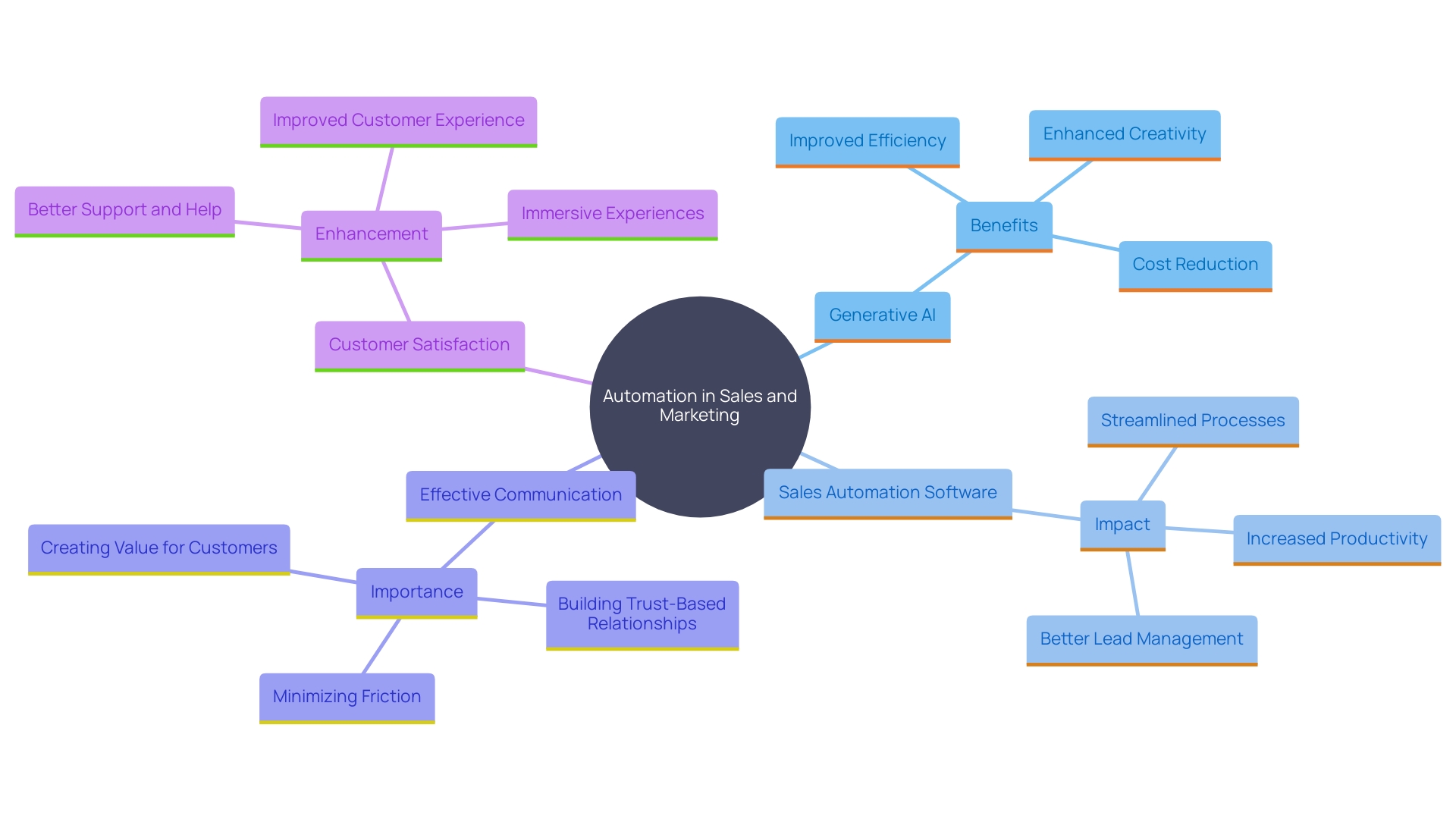
Scaling Business Operations with Advanced Automation Techniques
Harness the full potential of Robotic Process Automation (RPA) to elevate operational processes to new heights. By employing RPA to handle repetitive tasks across various departments, organizations can dramatically increase efficiency, cut costs, and deploy resources with greater precision. For example, the Louvre Hotels Group saved an astounding 574 hours per month by automating rate code maintenance with RobosizeME’s cutting-edge solutions. This not only showcases the transformative power of RPA but also underscores its vital role in streamlining workflows. As the CEO of Automation Anywhere aptly put it, “As AI and automation converge, it’s not unlike the birth of the PC or the internet—a moment in history that will reshape our world irreversibly.” Embracing RPA allows businesses to focus on strategic growth areas, leveraging automation to stay competitive and innovative in a rapidly evolving market.
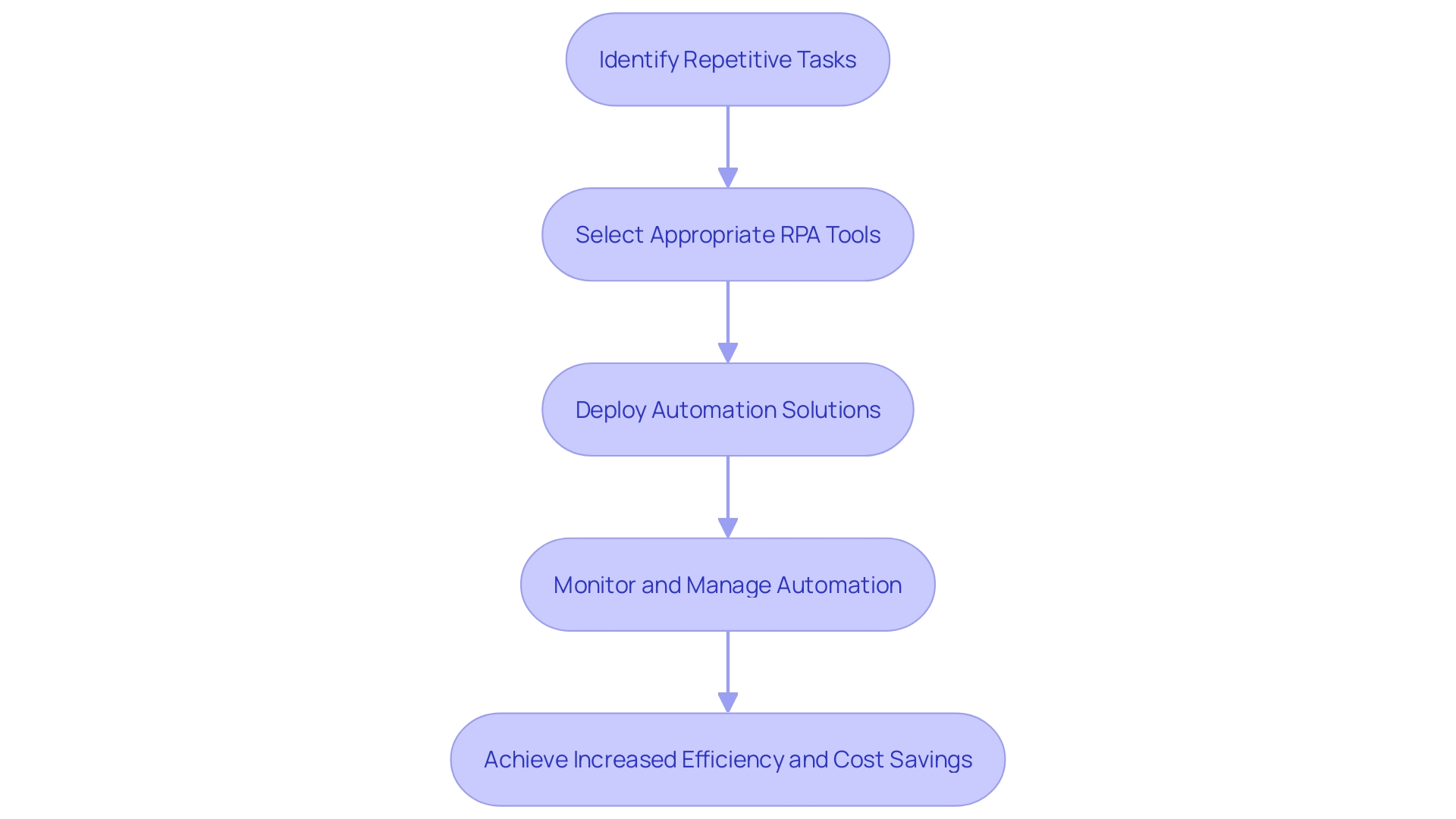
Conclusion
The integration of automation technologies is essential for Directors of Operations Efficiency aiming to enhance business performance. Utilizing Python for automated data analysis transforms large datasets into actionable insights, reducing human error and accelerating decision-making.
Implementing accounts payable software streamlines financial processes, improving accuracy and fostering better vendor relationships while freeing up resources for more complex tasks. This ultimately enhances client satisfaction.
Automating Customer Relationship Management (CRM) workflows significantly improves customer interactions through automated follow-ups and AI-driven personalized marketing campaigns, boosting engagement and loyalty. Tools like Zapier facilitate seamless app integration, simplifying the automation of repetitive tasks.
AI-driven marketing automation and content distribution further optimize engagement. By analyzing customer behavior and deploying targeted campaigns, businesses can refine their marketing strategies. SaaS solutions are also key in automating diverse processes, allowing organizations to adapt swiftly to evolving needs while maintaining efficiency.
Robotic Process Automation (RPA) provides a critical opportunity to scale operations by handling repetitive tasks, enabling teams to focus on strategic initiatives that drive growth. Embracing these automation solutions is vital for maintaining a competitive edge in a dynamic marketplace, empowering businesses to enhance productivity, accuracy, and overall performance.
Introduction
The world of automation has undergone a remarkable transformation, evolving from simple mechanical aids in ancient civilizations to the sophisticated, AI-driven systems of today. This journey began in earnest during the Industrial Revolution, which revolutionized production processes and laid the groundwork for future innovations. The 20th century saw the advent of programmable logic controllers (PLCs), further enhancing manufacturing capabilities.
In the modern era, the digital revolution has brought about intelligent automation systems that integrate AI, enabling unprecedented levels of efficiency and adaptability across industries.
Today’s landscape is defined by the convergence of traditional manufacturing with cutting-edge technologies under the banner of Industry 4.0 or smart manufacturing. This fusion is not only reshaping production processes but also demanding a new set of skills from the workforce, emphasizing the importance of continuous learning and adaptation. As intelligent automation systems evolve, they blur the lines between various categories, reflecting the dynamic nature of technological advancements.
The rapid growth of AI and digital technologies has revitalized markets that were previously stagnant, contributing to significant economic gains. For instance, the US manufacturing sector has experienced a resurgence, driven by the integration of these advanced systems, leading to higher shareholder returns and a more competitive market landscape. This acceleration marks the advent of the Fourth Industrial Revolution, promising enhanced performance, inclusivity, and sustainability.
As organizations navigate this evolving terrain, they must stay abreast of ongoing advancements to maintain their competitive edge and fully harness the potential of intelligent automation.
Historical Development of Automation
Automation has evolved significantly from its early roots in ancient civilizations, where simple mechanisms like levers and pulleys were employed to ease human labor. The Industrial Revolution marked a pivotal moment, ushering in an era of mechanization that transformed production processes. The 20th century introduced additional progress with the arrival of programmable logic controllers (PLCs) in manufacturing, paving the way for more advanced control mechanisms. ‘The digital boom of the late 20th century transformed mechanization, enabling complex programming and integration across various industries.’.
In today’s environment, automated processes are widely classified into conventional and smart categories. Intelligent technology, which is the focus of current advancements, includes AI-augmented, autonomous, autonomic, and cognitive systems. These types of automation reflect different levels of sophistication in how AI interacts with human activities and the environment. Industry 4.0, often referred to as smart manufacturing, signifies the merging of conventional manufacturing with advanced innovations. This integration is reshaping the manufacturing workforce, underscoring the need for training to stay competitive in this new era.
‘The rapid expansion of AI and digital advancements has revitalized markets that once faced stagnation.’. For instance, the US manufacturing sector, which had only grown at 1.4 percent over two decades, has seen a resurgence, with industrial companies generating higher shareholder returns over the past five years. This trend is part of the accelerating pace of the Fourth Industrial Revolution, which promises next-level performance, workforce inclusivity, and sustainability. As organizations continue to adapt, the boundaries between different categories of intelligent automation frameworks remain fluid, reflecting ongoing advancements and the dynamic nature of these technologies.
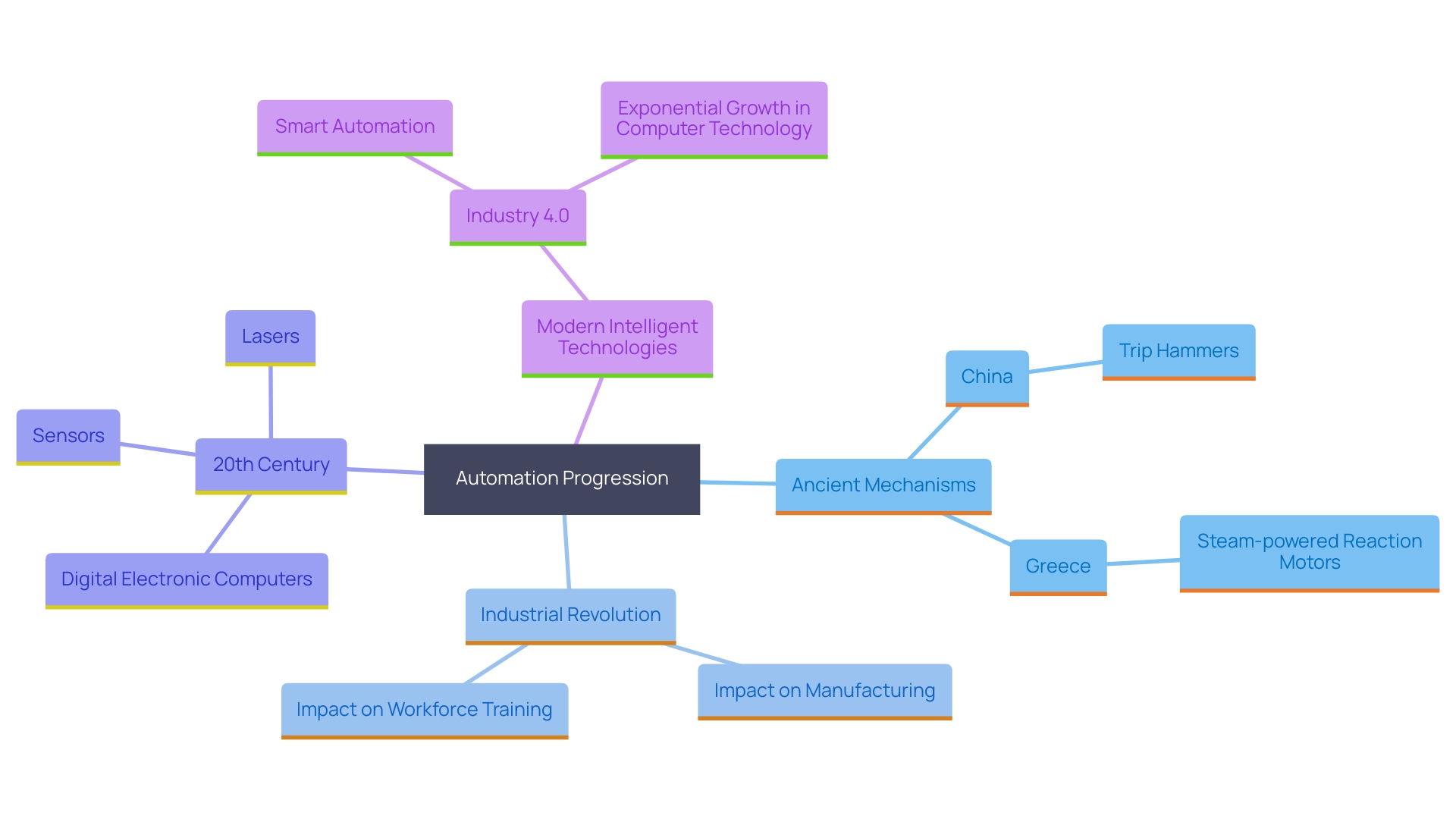
Principles and Theory of Operation
Automation fundamentally depends on control theory principles, utilizing algorithms and feedback loops to streamline processes. These arrangements function based on established guidelines and reasoning, enabling them to carry out tasks with minimal human involvement. Essential components include sensors that collect data, actuators that execute actions, and controllers that process information and direct operations. Together, these elements create efficient, reliable structures capable of adapting to changing conditions.
One example of the importance of automation is demonstrated in online simulation for industrial environments, which plays a critical role during the design and commissioning phases. As emphasized in a systematic review by Darius Deubert and colleagues, online simulation is essential for monitoring, predictive analysis, and decision support. This method enables real-time optimization and offers a wide variety of applications, improving efficiency.
Moreover, in the domain of cyber-physical networks (CPS), dynamic risk management is essential. According to a study by Daniel Schneider and co-authors, CPS must handle environmental uncertainties, such as adverse conditions and malicious attacks. Incorporating methods for smooth degradation and recovery guarantees that operations uphold safety and functionality, even during unforeseen occurrences.
The area of mechanization keeps progressing with developments in AI and machine learning, as observed in recent sector updates from Automation.com. ‘These innovations are essential for keeping operations running smoothly and efficiently, ensuring that systems can self-adapt and optimize in real time.’.
In summary, automation’s reliance on control theory, coupled with advancements in simulation and AI, underscores its significance in modern industrial environments. These innovations not only improve efficiency but also guarantee resilience and adaptability in the face of changing conditions.
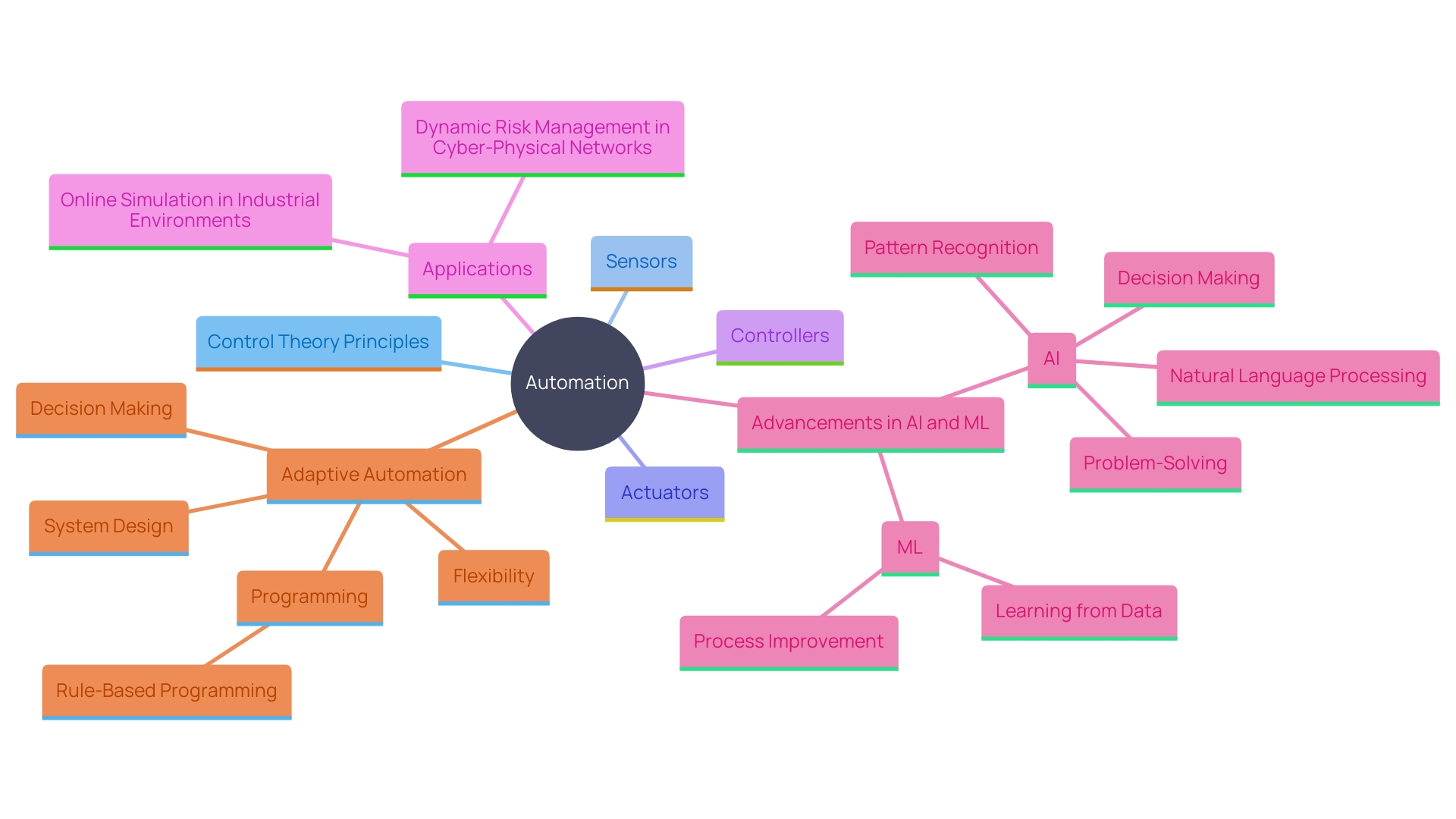
Applications of Automation
Automated computer programs are revolutionizing various sectors, including manufacturing, healthcare, finance, and logistics. In manufacturing, the integration of AI and digital technologies has significantly boosted productivity. For example, US industrial firms have observed total shareholder returns rise by approximately 400 basis points during the last five years, due to progress in mechanization. Companies like Europris in Norway have set exemplary standards by consolidating six warehouses into one efficient automated logistics center, featuring 65,000 pallet locations and 11 Vectura pallet cranes.
In healthcare, automated systems enhance operational efficiency by managing patient records, dispensing medication, and aiding in diagnostics. This is crucial as AI adoption is still in its early stages but shows promise in predictive analytics and other applications.
Financial institutions utilize technology for transaction processing, fraud detection, and risk management. These developments are part of a broader trend where AI and machine learning are becoming essential tools for optimizing performance.
Logistics companies benefit from automated solutions for route optimization, warehouse management, and supply chain operations. Europris’s journey with Swisslog to create an automated central warehouse exemplifies how mechanization can streamline logistics, thereby reducing operational costs and enhancing efficiency.
The increasing pace of the Fourth Industrial Revolution (4IR) is not only enabling next-level performance but also fostering inclusivity and sustainability in the workforce. As the landscape continues to evolve, staying abreast of these advancements is crucial for maintaining a competitive edge.
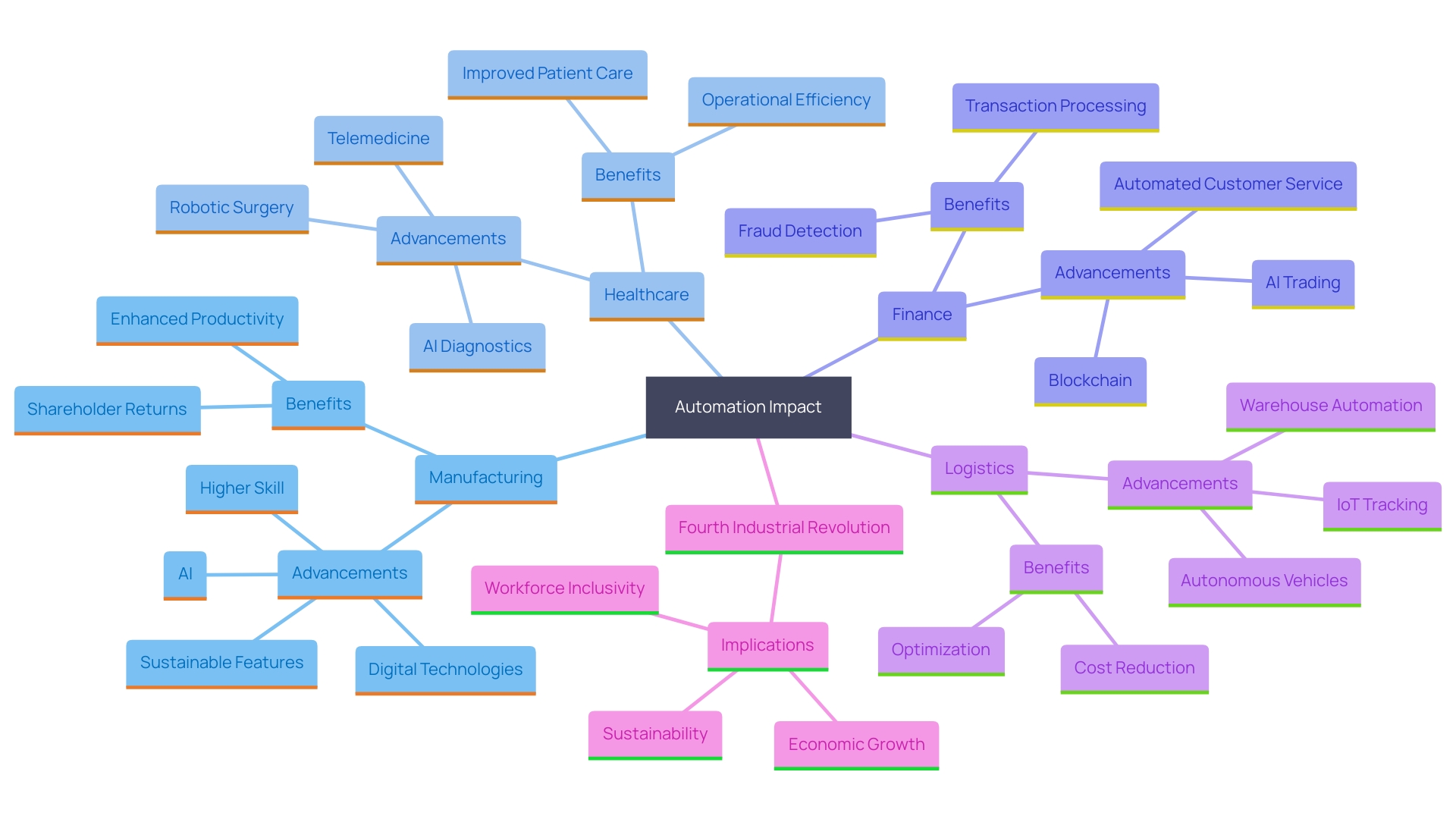
Benefits of Automation
The execution of mechanization yields a plethora of benefits, substantially enhancing efficiency, reducing operational costs, and improving accuracy. According to the International Federation of Robotics, the deployment of industrial robots has surged to around 3.5 million units globally, with a total value of 15.7 billion US dollars, particularly impacting the automotive and electronics sectors. This trend highlights the transformative change that technological advancement has brought to various sectors.
By automating repetitive tasks, organizations can free up human resources for more strategic roles, thereby fostering innovation and growth. Automation minimizes errors that often arise from manual processes, which significantly improves overall quality. For instance, the service sector has experienced significant expansion in mechanization through the use of chatbots, virtual assistants, and Internet of Things (IoT) devices, further emphasizing its crucial role in modern business activities.
Furthermore, mechanization allows for swift scaling of operations, enabling companies to react more effectively to market demands and uphold a competitive advantage. The combination of AI and technology not only boosts productivity and problem-solving abilities but also offers chances for efficiency and innovation. However, this progress does come with its own set of challenges, including workforce stability and employment displacement, which need to be navigated thoughtfully to optimize human potential and ensure equitable growth in the evolving technological landscape.
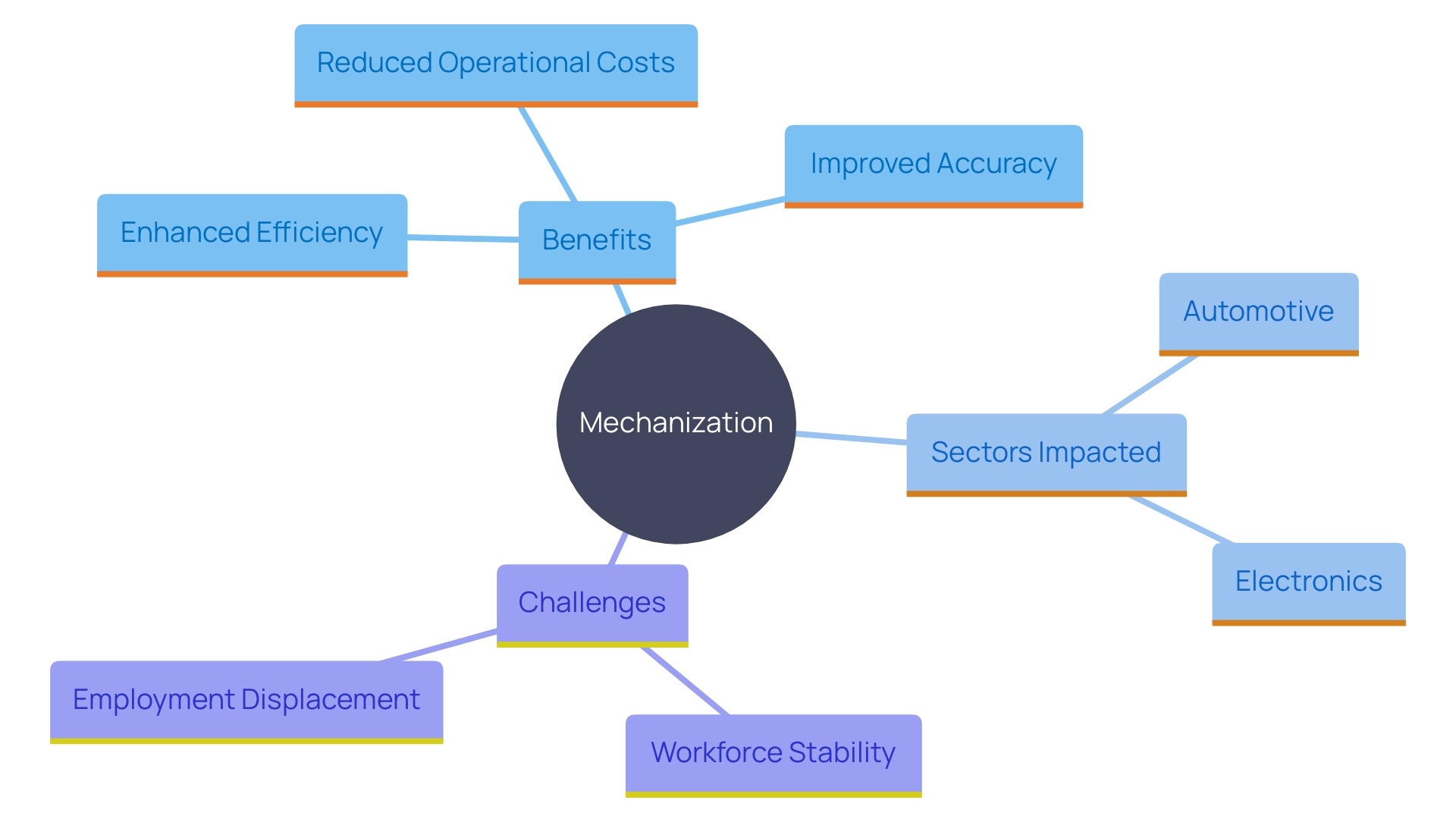
Future of Automation and AI
The future of mechanization is set for remarkable advancements, especially with the integration of artificial intelligence (AI). As AI technologies progress, automated processes will become more refined, able to learn from information and make independent choices. This will result in more flexible and responsive technological solutions, transforming business models and creating new opportunities.
Renault, for instance, has seen significant improvements in its supply chain through digitalization. By creating a data lake and pouring all supply chain data into it, Renault has developed a control tower connected to partners like Shippeo. This framework enables accurate management of factory resources, illustrating how AI-powered technology can transform processes.
John Deere’s innovations in AI and machine learning have similarly transformed agricultural efficiency, helping farmers tackle challenges like changing weather and limited arable land. This evolution in automation systems is categorized into AI-augmented, autonomous, autonomic, and cognitive, each representing varying levels of AI interaction with human activity and the environment.
The AI market is projected to reach $305.90 billion by 2024, with an annual growth rate of 15.83%, highlighting the rapid growth and investment in this field. Key players like Google, IBM, and Microsoft are driving advancements in areas such as natural language processing, computer vision, and machine learning. These technologies are not only enhancing personalization and predictive analytics but also improving human-machine collaboration, paving the way for innovative solutions across industries.
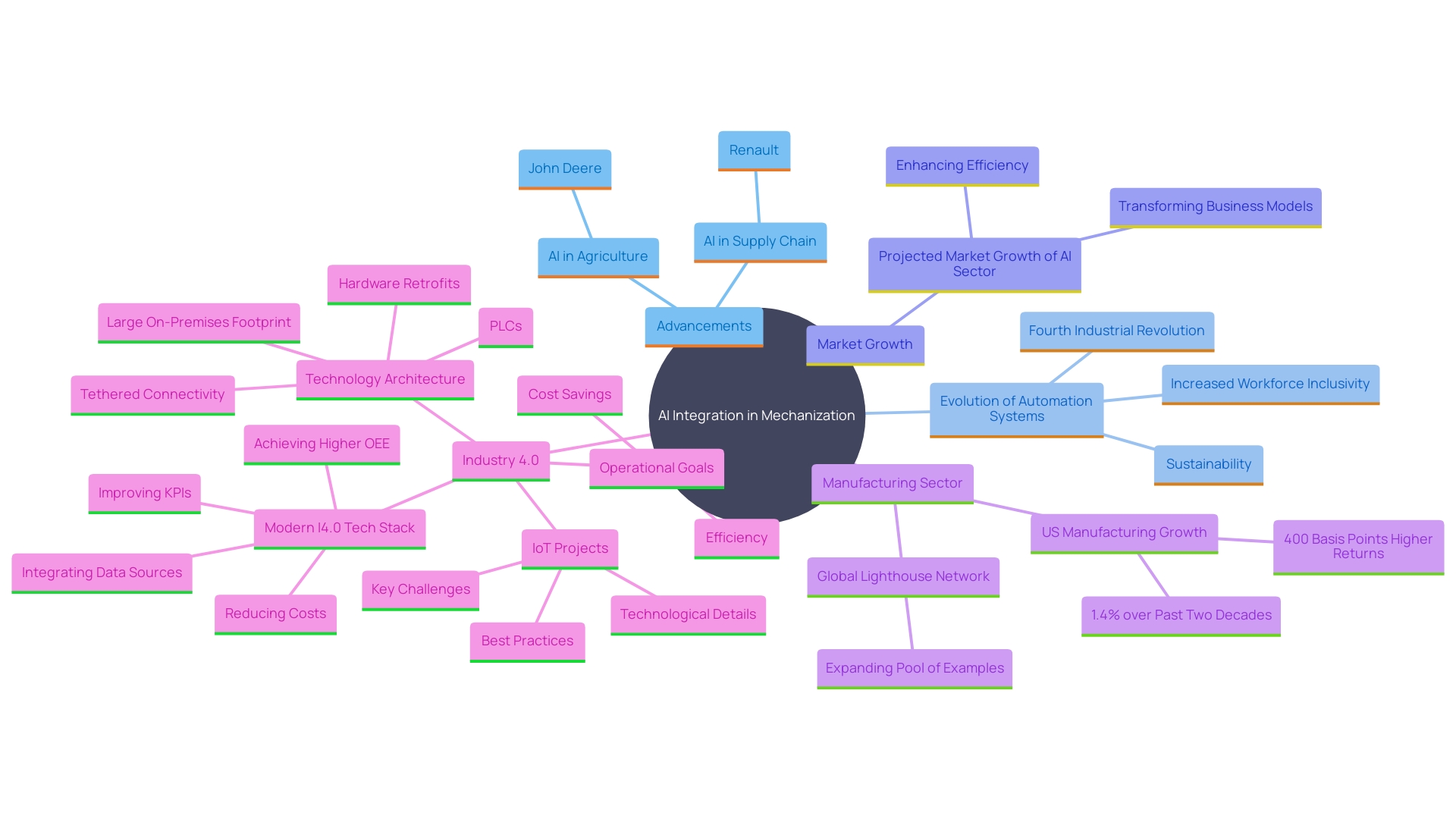
Impact on Society and Workforce
The growth of mechanization and AI has ignited broad conversations regarding its complex effects on the workforce and society as a whole. ‘While certain sectors may experience job displacement, AI and mechanization also pave the way for new roles focused on managing and developing these advanced systems.’. ‘Historical trends in productivity growth, driven by technological progress, suggest that AI could yield an increase in productivity ranging from 8% to 36%, depending on the adoption rate and application within various industries and cities.’.
Upskilling and reskilling initiatives are essential to prepare the workforce for this evolving landscape. Studies have shown that productivity improvements can lead to higher compensation and tax revenue, thereby enhancing economic well-being and standards of living. The demand for occupations such as health professionals and STEM-related roles is predicted to grow by 17% to 30% between 2022 and 2030, highlighting the importance of equipping the workforce with the necessary skills.
AI’s integration into high-skilled jobs offers both risks and opportunities, particularly for advanced economies. As we navigate this transformative era, it is crucial to address the ethical considerations and societal impacts of mechanization. This includes ensuring that human rights and ethics remain at the forefront of technological regulation. By doing so, society can harness the benefits of improved efficiency and productivity, ultimately driving economic growth and advancements in quality of life.
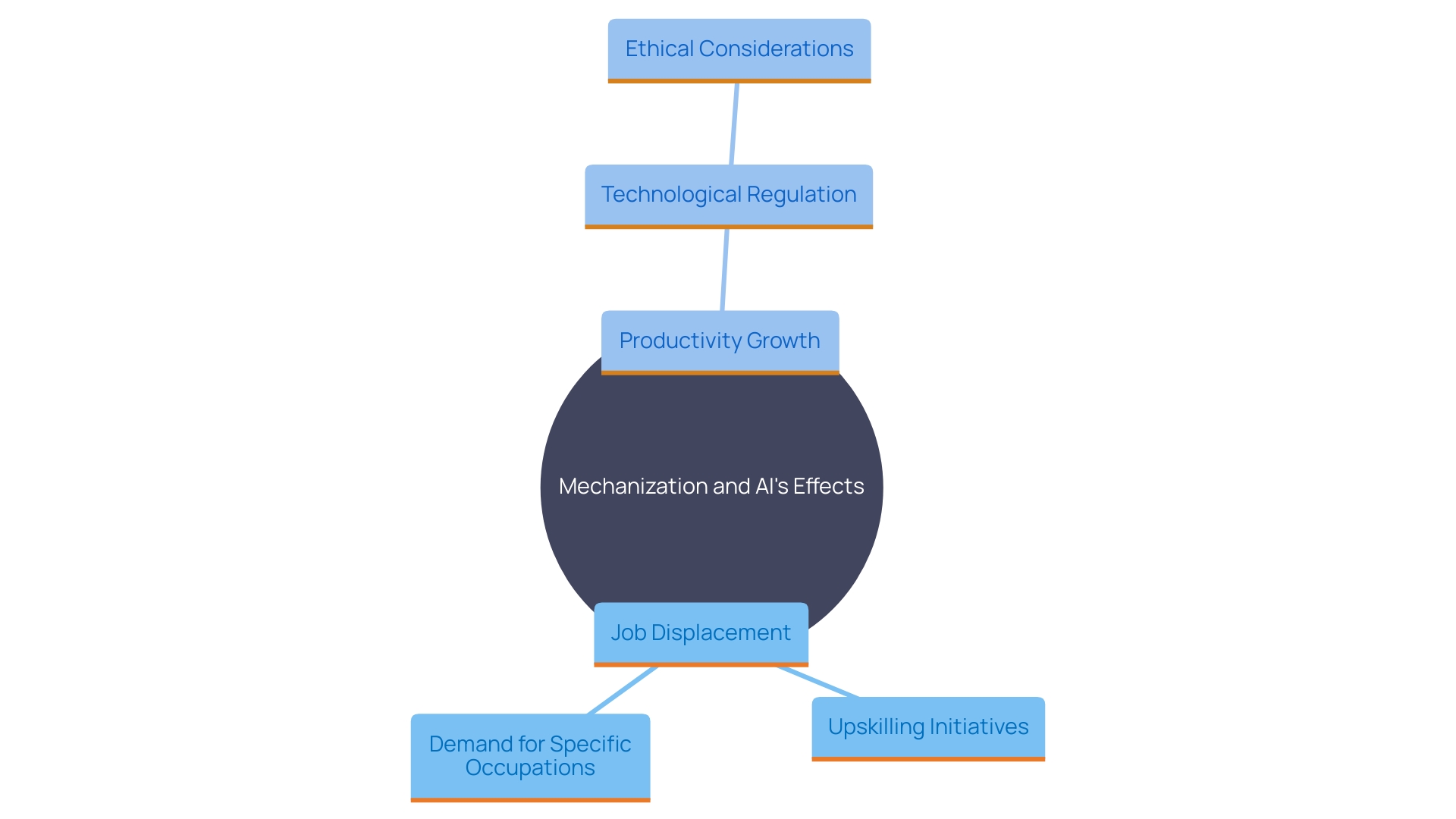
Examples of Automated Systems
Automation applications span a wide array of industries, showcasing its transformative potential. Robotic Process Automation (RPA) has become essential in administrative functions, streamlining routine tasks like data entry and report generation. In the manufacturing sector, the use of industrial robots has surged, with around 3.5 million units deployed globally, particularly in the automotive and electronics sectors, as reported by the International Federation of Robotics. Collaborative robots, or cobots, work alongside human operators, significantly enhancing productivity and efficiency.
In the service sector, the influence of mechanization is equally profound, marked by the rise of chatbots, virtual assistants, and Internet of Things (IoT) devices. These technologies are transforming customer service and operational efficiency, emphasizing the crucial role of mechanization in our daily interactions with technology. As per studies released on Statista, the worldwide industrial control market is anticipated to attain $265 billion by 2025, increasing from $175 billion in 2020.
Smart home devices, such as thermostats and security systems, further exemplify the adaptability of technology. These devices automate everyday tasks, improving convenience and energy efficiency for homeowners. The prevalence of mechanization in today’s world is undeniable, extending beyond specific industries to become an integral part of our everyday lives. A McKinsey study indicates that firms globally will allocate over 25 percent of their resources to mechanization solutions in the upcoming years, highlighting the increasing dependence on these advancements.
Automation is not just a trend but a transformative shift that continues to shape our economy and workforce. As Claire Fallon, CEO and executive director of the International Society of Automation (ISA), stated, “Global economic growth is tied closely to the successful implementation of technology and the skilled workforce to put these innovations in place.” The advancements in automation and artificial intelligence (AI) are set to further expand the possibilities, making it an essential element in enhancing various aspects of life and business.
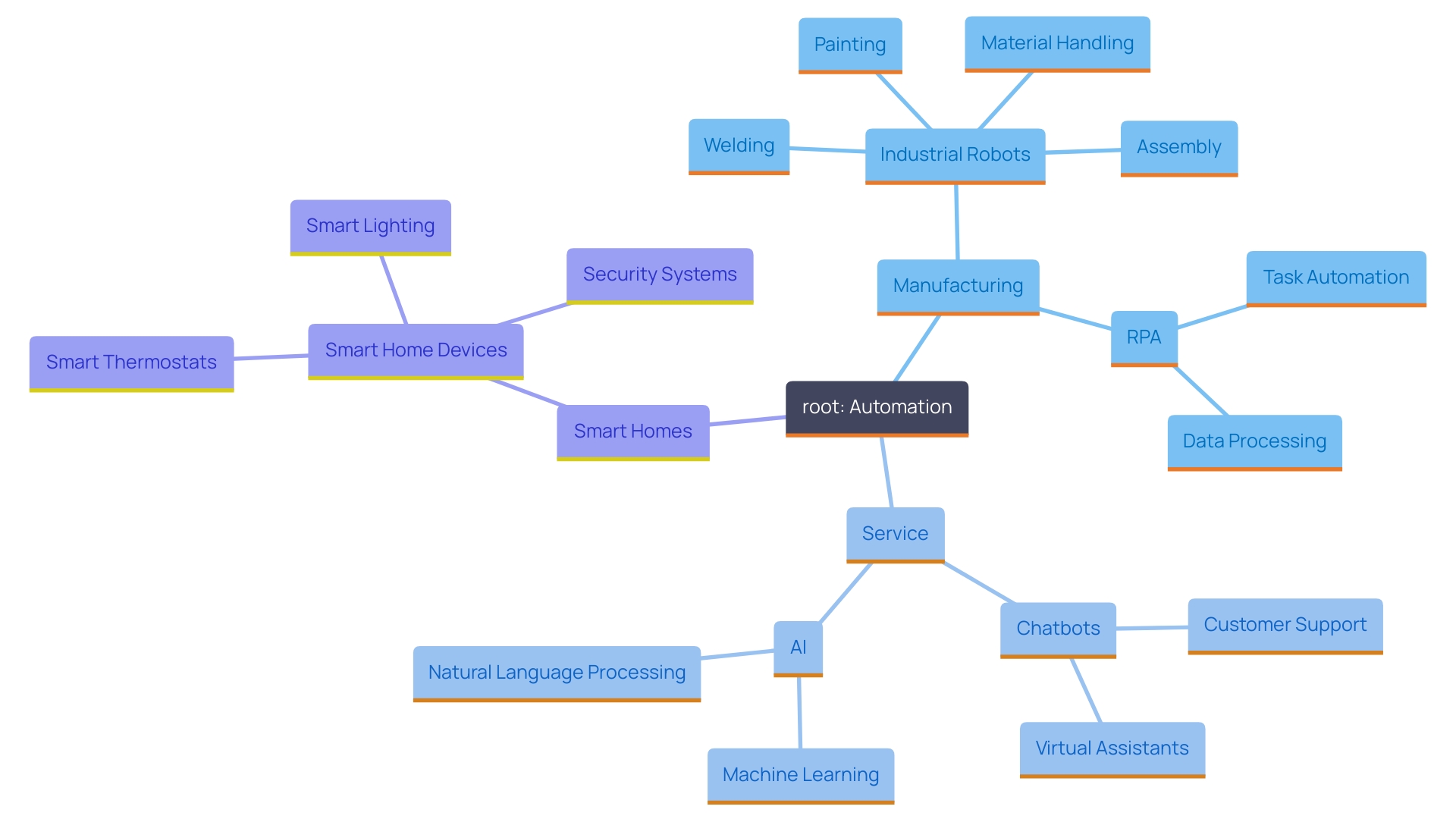
Conclusion
The evolution of automation has reached a pivotal point, highlighting its significance across various industries. From its humble beginnings with simple mechanisms to the sophisticated AI-driven systems of today, automation has transformed production processes, enhanced efficiency, and revitalized stagnant markets. Organizations that embrace intelligent automation are not only improving their operational capabilities but are also fostering a culture of continuous learning and adaptability within their workforce.
The benefits of automation extend beyond mere productivity gains; they include improved accuracy, reduced operational costs, and the ability to scale operations rapidly. As industries like manufacturing, healthcare, and logistics adopt automated solutions, they are witnessing substantial improvements in performance and efficiency. The integration of AI technologies is further driving this transformation, allowing for real-time optimization and adaptive responses to changing conditions.
Looking ahead, the future of automation is promising, with AI set to play a central role in developing more sophisticated systems. As businesses navigate this landscape, prioritizing upskilling and reskilling initiatives will be essential to prepare the workforce for new roles and responsibilities. By addressing the ethical implications and ensuring equitable growth, organizations can harness the full potential of automation, ultimately driving economic progress and enhancing quality of life for society at large.
Introduction
In today’s rapidly evolving technological landscape, automating IT operations has become essential for organizations striving for efficiency and productivity. By minimizing manual interventions, automation enhances consistency, reduces errors, and speeds up response times, allowing IT teams to focus on strategic initiatives. This transformation not only cuts down task completion times but also leads to substantial cost savings, improved compliance, and optimal resource allocation.
However, the path to successful automation is lined with challenges such as security concerns and organizational resistance, which can be mitigated through careful planning and execution. Real-world examples and best practices demonstrate the profound impact of automation on operational efficiency and overall business goals, setting the stage for a more agile and productive future.
Benefits of Automating IT Operations
Automating IT operations can significantly enhance efficiency and productivity by minimizing the need for manual intervention. This reduction in human involvement helps in decreasing errors, streamlining workflows, and improving response times. By utilizing automated processes, IT teams can attain more reliable performance and shift their attention towards strategic initiatives instead of routine activities.
One of the main advantages of mechanization is its capacity to reduce the time needed to finish different activities. For instance, DevOps and Continuous Integration/Continuous Delivery (CI/CD) pipelines have become prevalent because they enable quicker results, lowering the time to market for new features. According to a discussion with Nokia, while automation is advancing steadily, it’s integrating thoughtfully and methodically, ensuring robust and reliable implementations.
Moreover, automating routine processes can lead to substantial cost savings, improved compliance, and better resource allocation. For example, the deployment of Robotic Process Automation (RPA) allows bots to handle tasks like data entry, transaction processing, and workflow execution, freeing up human workers for more complex activities. This shift not only enhances operational efficiency but also aligns with broader business goals.
The execution of automated processes also brings its challenges, such as navigating security considerations and overcoming resistance within siloed organizations. However, as evidenced by multiple successful projects, these hurdles can be addressed through careful planning and execution. Real-world case studies show that companies that embrace automation benefit from reduced costs, higher Overall Equipment Effectiveness (OEE), and improved KPI metrics.
In summary, automating IT operations isn’t just about replacing manual activities; it’s about transforming the way organizations function, leading to a more agile, efficient, and productive environment.
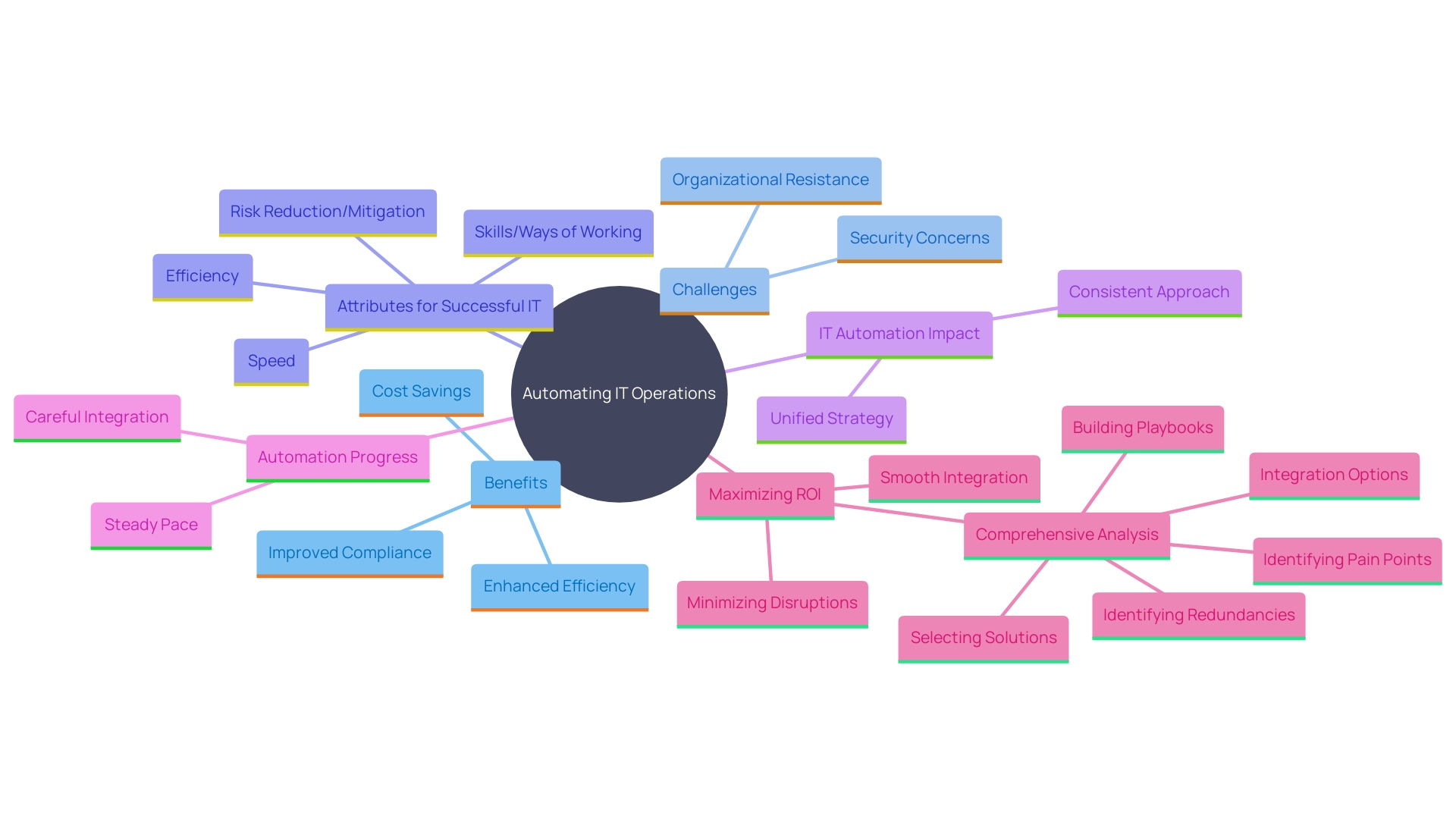
Identifying Tasks for Automation
To effectively automate IT operations, begin with a comprehensive activity audit. Assess weekly workflows, including research, administration, and report generation, and categorize tasks based on time, impact, and expertise required. This helps identify repetitive and time-consuming processes prone to errors, such as data entry and system monitoring. Engaging with your team to gather insights on pain points is crucial for recognizing automation opportunities.
Apply the A.D.D. strategy: Automate, Delegate, or Deprecate activities. The 80:20 principle indicates that 80% of the effect originates from 20% of the effort, so concentrate on automating activities that provide the greatest worth. This strategic approach ensures significant time savings and resource optimization.
Evaluate the potential monetary value of automation by comparing the time spent on manual processes versus automated ones. This assists in ranking tasks according to their influence on productivity. For instance, digitizing data and documents can streamline operations, while digitalization alters processes to leverage improved data capture. Ultimately, digital transformation shifts how organizations create value, enhancing overall efficiency.
As noted by experts, placing technology at the center of end-to-end processes allows humans to focus on high-value tasks. This multi-stage transformation, from digitization to digital transformation, creates additional value for organizations and their customers.
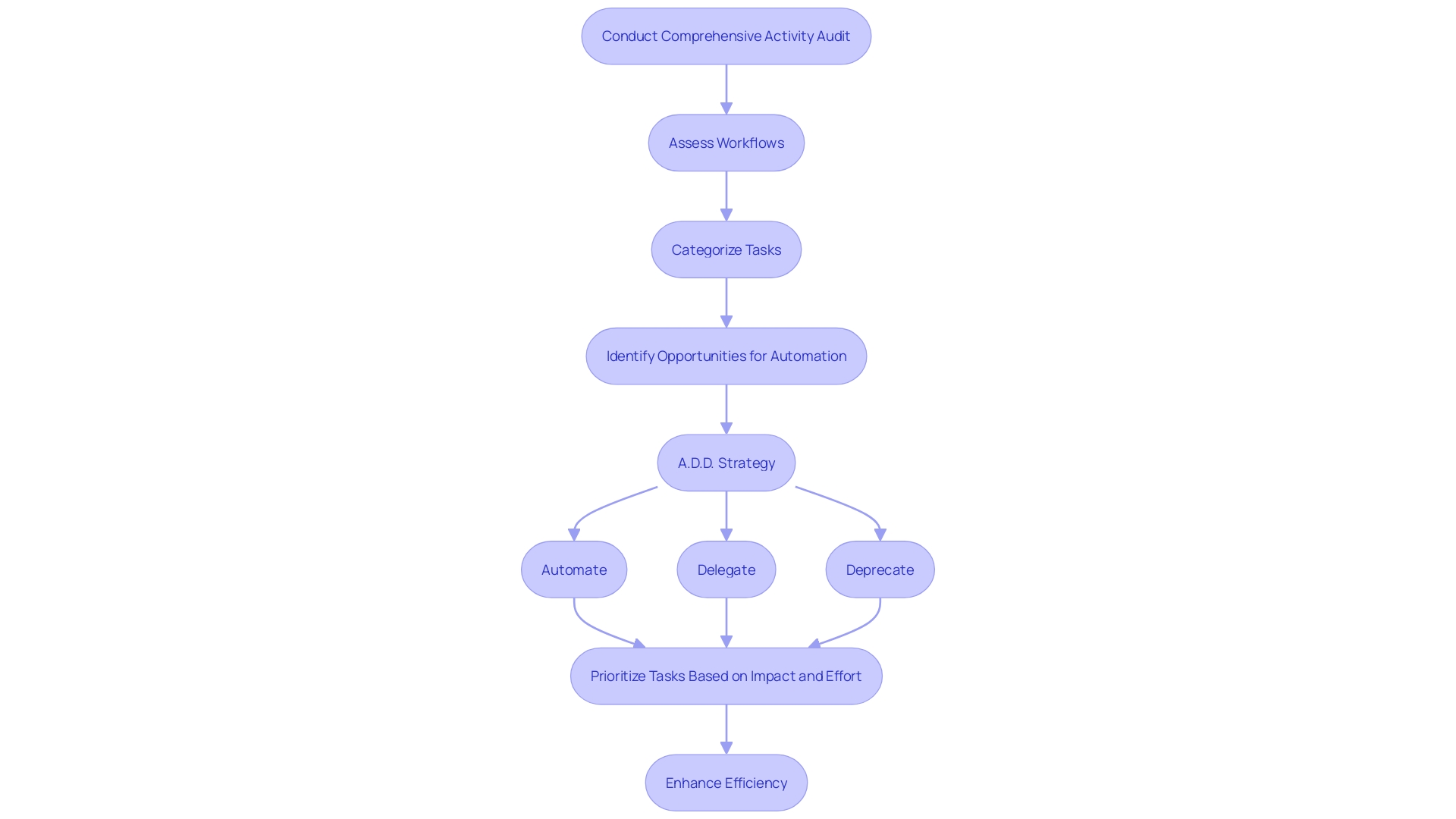
Choosing the Right Automation Tools
Selecting the right automation tools is pivotal to achieving seamless IT operations automation. Begin by evaluating tools based on their compatibility with your existing systems and their scalability to meet future organizational needs. User-friendly interfaces should be a priority to ensure quick adoption and minimize training time for your team. Strong integration abilities are crucial, as they allow smooth information transfer across different systems, improving overall productivity. Comprehensive reporting features are also crucial, providing valuable insights into performance and areas for improvement. Strong vendor support can make a significant difference, ensuring that any issues are promptly addressed and resolved.
Conducting a pilot test with a few selected tools can provide practical insights into their effectiveness. For instance, a study on Industry 4.0 implementations highlighted the importance of pilot testing to uncover potential challenges and optimize solutions before full-scale deployment. These pilot tests can reveal how well the tools integrate with your existing infrastructure and their impact on operational efficiency.
The complexity of modern enterprises, with their interconnected systems and real-time data inflows, underscores the need for tools that operate at machine speed and scale. As mechanization technology continues to evolve, staying updated with industry trends and best practices is crucial. Based on findings from Automation.com, adopting the latest developments in AI and machine learning can greatly improve your efficiency strategy.
In summary, thorough evaluation, pilot testing, and staying informed about industry trends are key steps in selecting tools that will drive your IT operations towards greater efficiency and productivity.
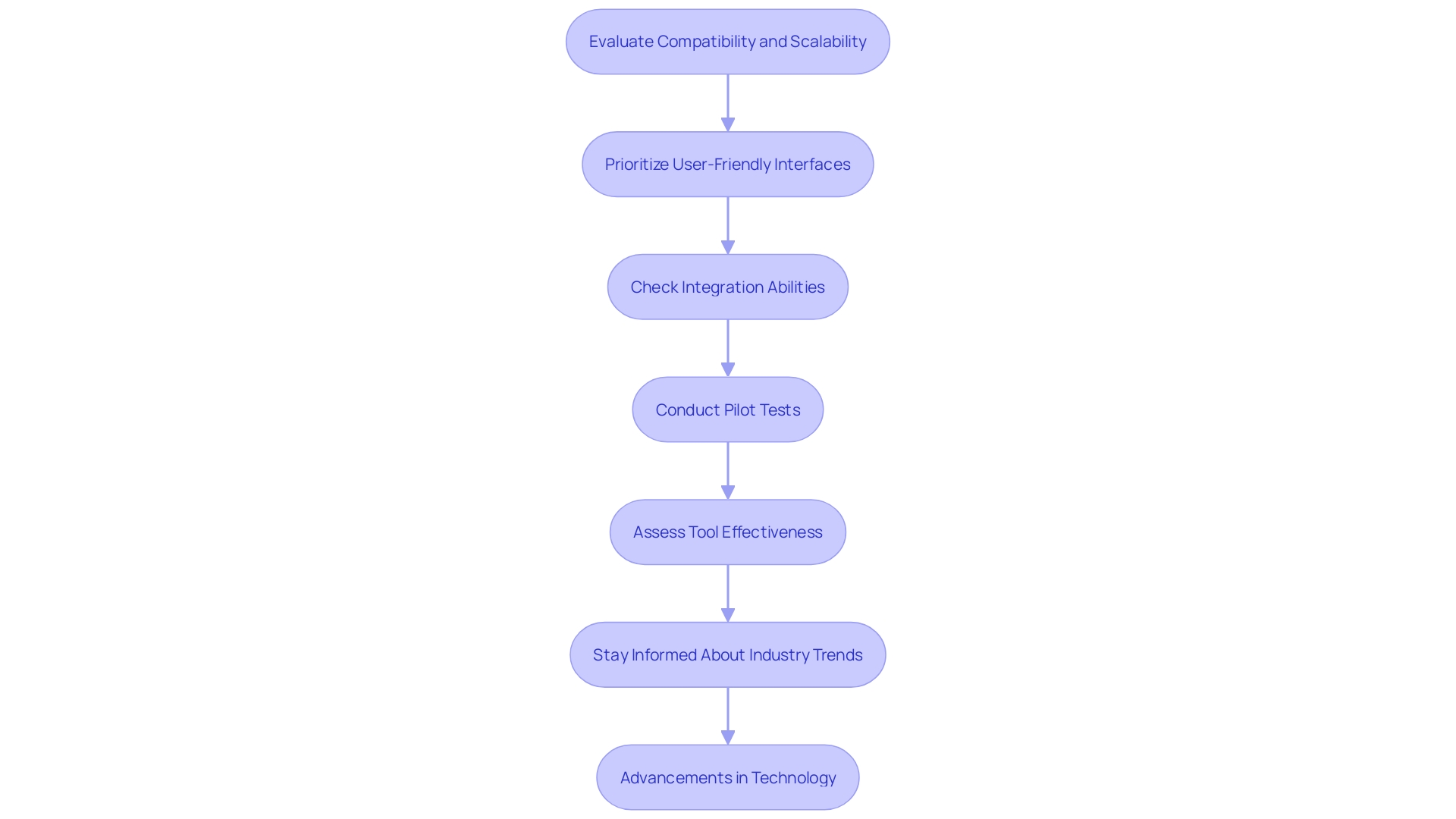
Best Practices for Effective Automation
Executing automated processes effectively demands a strategic and methodical approach. Begin with a robust automation strategy that aligns seamlessly with your business objectives. Engage stakeholders from across departments to ensure a comprehensive perspective. This collaboration fosters a culture of transparency and buy-in, critical for successful implementation.
Next, consider the sequential process of digitization, digitalization, and digital transformation. Digitization involves converting physical information into digital formats, serving as the foundation for further advancements. Digitalization, building on this, alters processes and structures to enhance data capture and analysis. Finally, digital transformation integrates these technologies to create additional value and streamline end-to-end processes, allowing your team to focus on high-value tasks.
Regularly monitor and analyze the performance of automated processes. This ongoing evaluation helps identify areas for improvement and ensures that the tools are delivering the expected benefits. For instance, companies that have successfully integrated AI into their operations have seen notable improvements in efficiency and productivity.
Investing in continuous training and support is crucial. This not only keeps your team engaged but also provides them with the necessary skills to utilize technology fully. As technology evolves, so should your team’s capabilities, ensuring they are prepared to navigate and utilize new tools effectively.
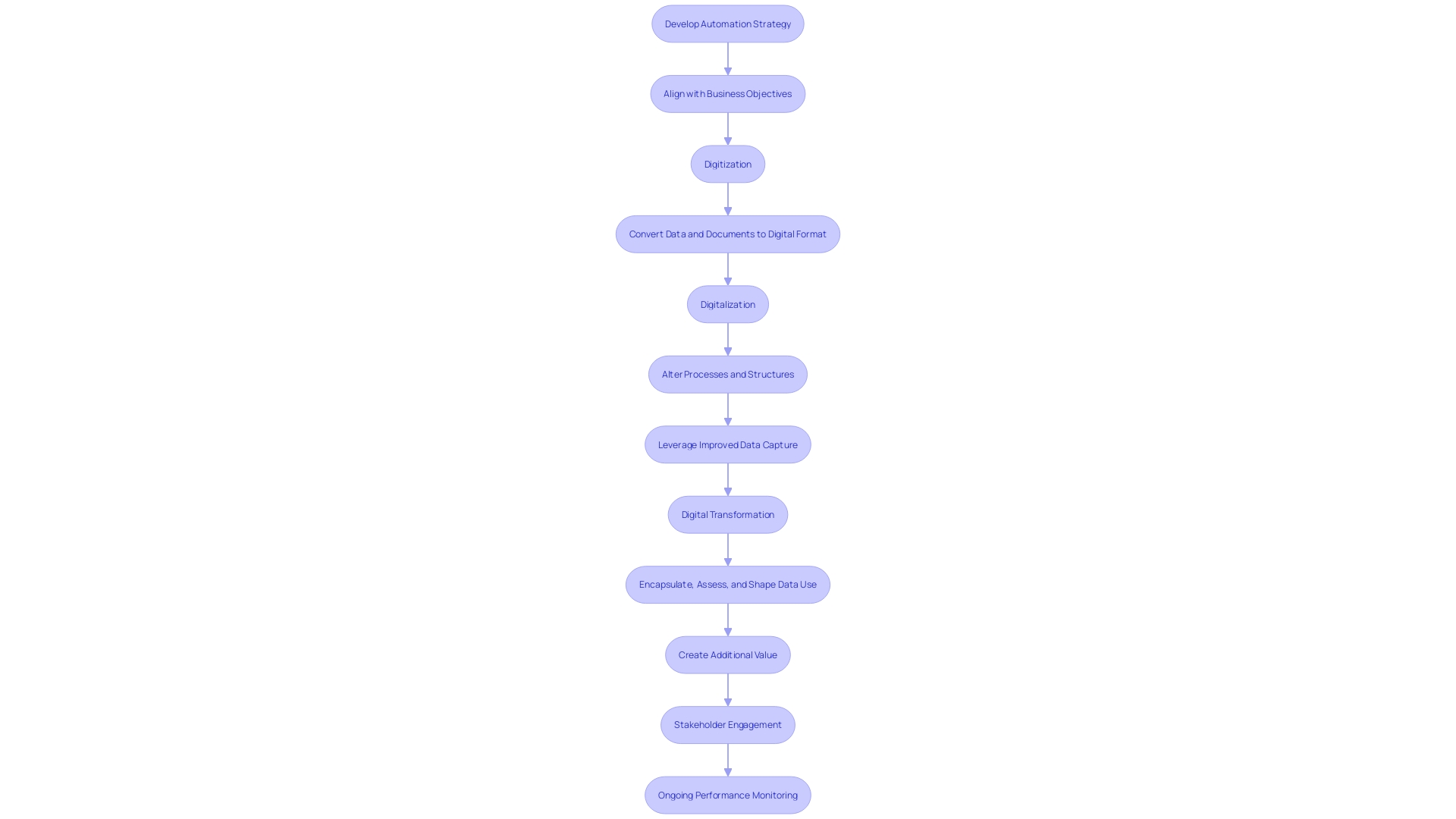
Overcoming Resistance to Automation
Overcoming resistance to mechanization requires a strategic approach that emphasizes clear communication and active involvement. Begin by outlining the advantages of mechanization to your team, such as decreasing their workload, removing repetitive tasks, and generating chances for professional development. By demonstrating how mechanization can enhance their roles, you can alleviate concerns and build a more supportive environment.
Engaging staff in the mechanization process is essential. Allow them to voice their concerns and provide input, fostering a sense of ownership and partnership. This collaborative approach can significantly reduce resistance and encourage a culture that embraces change and innovation.
Moreover, developing a culture of adaptability is essential. As highlighted in the MxD report, the future workforce needs to be trained and prepared to leverage new technologies effectively. By investing in skill development and fostering a mindset of ongoing enhancement, organizations can ensure their teams are not only prepared for mechanization but also eager about the possibilities it offers.
Embracing Industry 4.0 principles, which combine traditional manufacturing with smart technology, can further demonstrate the transformative power of mechanization. By placing technology at the center of end-to-end process execution, employees can focus on providing high-value expertise, thus enhancing overall productivity and job satisfaction.
In summary, a strategic approach that includes clear communication, active involvement, and a focus on skill development can turn resistance into enthusiasm, paving the way for a more adaptable and innovative workforce.
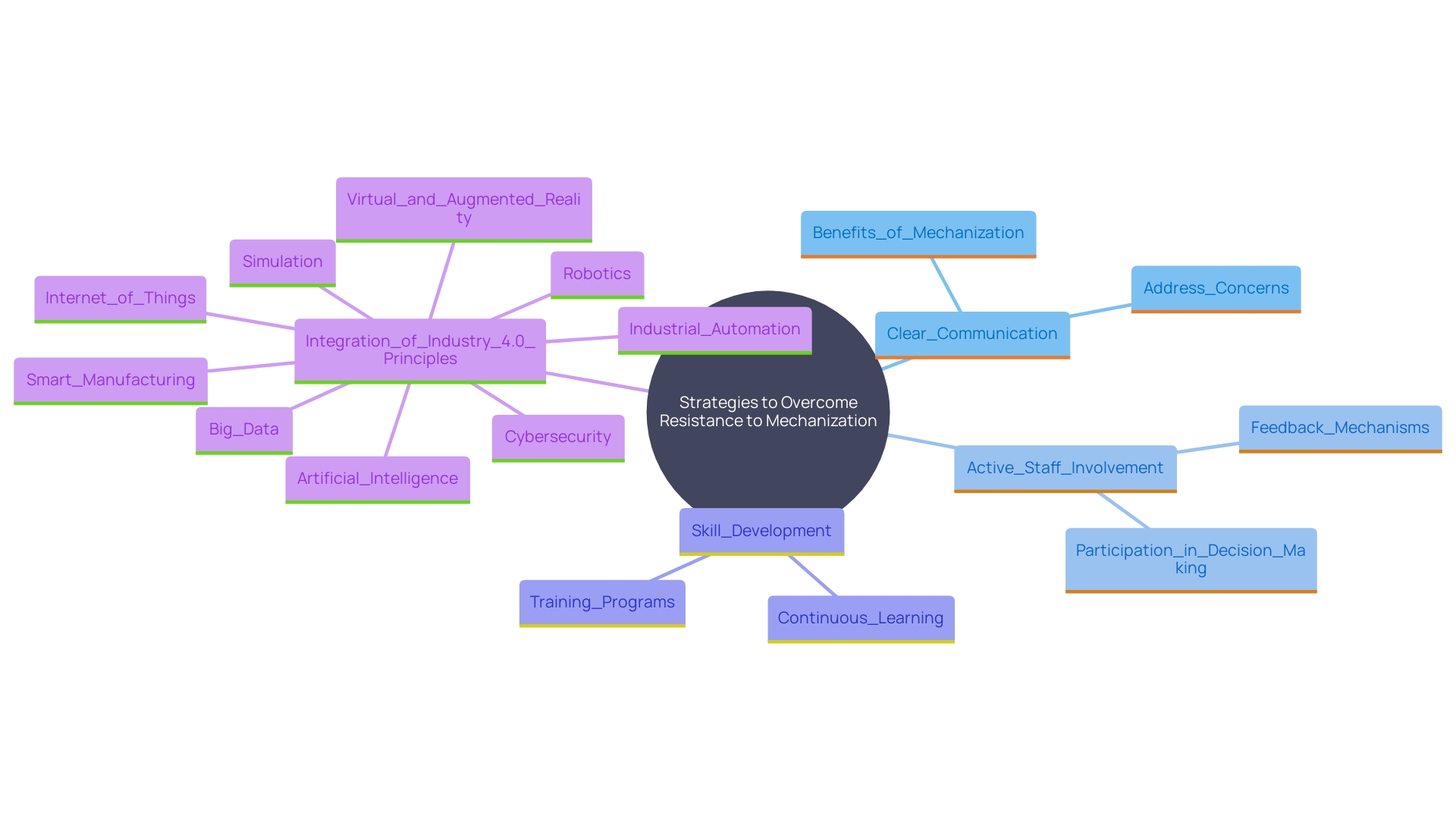
Case Studies and Success Stories
Real-world examples of successful IT operations automation can serve as powerful motivators for change. For instance, the adoption of DevOps and Continuous Integration/Continuous Delivery (CI/CD) pipelines has become increasingly common due to their ability to expedite the time to market for new features, significantly lowering the development strain.
Consider a case where a leading provider of automated testing equipment faced the challenge of modernizing its aging IT infrastructure, which included over 190 applications with intricate dependencies. By implementing a multiprovider, multipartner strategy and creating a comprehensive playbook for data collection and information sharing, the organization managed to streamline processes and enhance collaboration. The outcome was a smooth change that not only satisfied current standards but also enhanced operational performance.
Another example is Specsavers, which operates in a complex landscape with a global supply chain. They developed in-house technologies to connect older machines with newer systems, thereby overcoming the limitations posed by legacy equipment. This initiative led to early identification of potential health issues, enhancing customer satisfaction and operational efficiency.
These success stories emphasize the tangible benefits of mechanization, such as reduced operational costs, improved accuracy, and enhanced service delivery. They also underscore the importance of addressing organizational challenges like siloed teams and security considerations. By sharing these narratives, organizations can inspire confidence and encourage similar initiatives, paving the way for a smoother process.
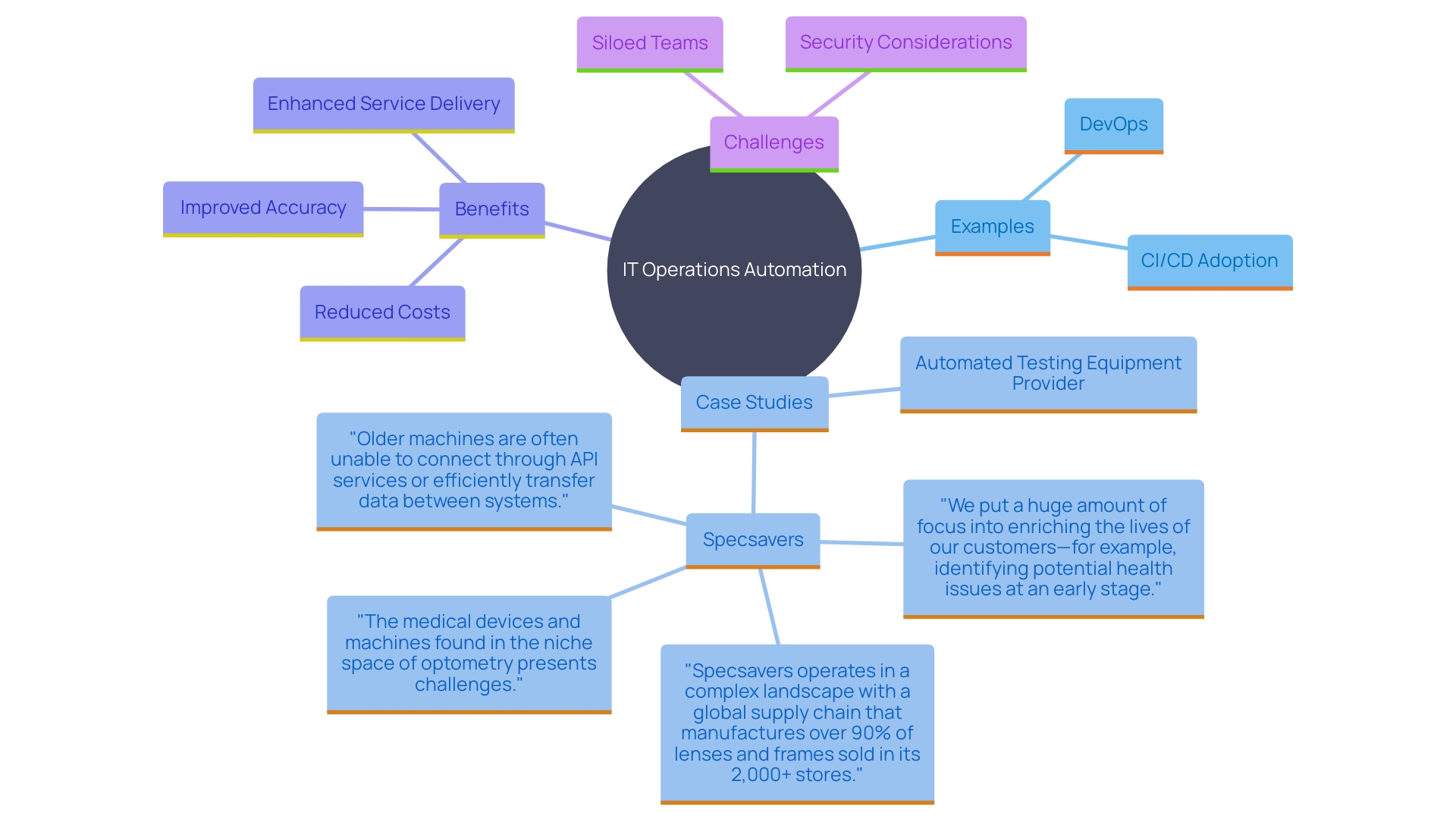
Future of IT Operations Automation
The future of IT operations streamlining is poised for transformation, driven by breakthroughs in artificial intelligence (AI) and machine learning (ML). As AI and ML technologies progress, they will greatly improve the ability to analyze extensive quantities of information, foresee possible challenges, and adjust to changing conditions. According to a recent report, AI-powered insights connect the gap between information gathering and actionable intelligence, allowing organizations to make informed decisions more effectively.
Automation is advancing steadily, with a focus on integrating new technologies into existing workflows rather than starting from scratch. This approach minimizes risks and costs associated with overhauling established systems. For instance, AIOps platforms are increasingly being adopted for their ability to provide real-time analysis and visibility into IT operations, enabling a shift from reactive to proactive issue resolution.
Moreover, staying updated with the latest trends and technologies is crucial. The swift advancement of AI, encompassing new models and processes, presents significant prospects for organizations to attain scale and enhance productivity. As highlighted in industry discussions, the careful and strategic integration of these technologies will empower organizations to maintain a competitive edge in an ever-evolving digital landscape.
In essence, the key to leveraging automation effectively lies in aligning data strategies with business goals, ensuring data quality and accessibility, and integrating AI seamlessly into existing systems. This not only enhances operational efficiency but also positions organizations to thrive in the future of IT operations.
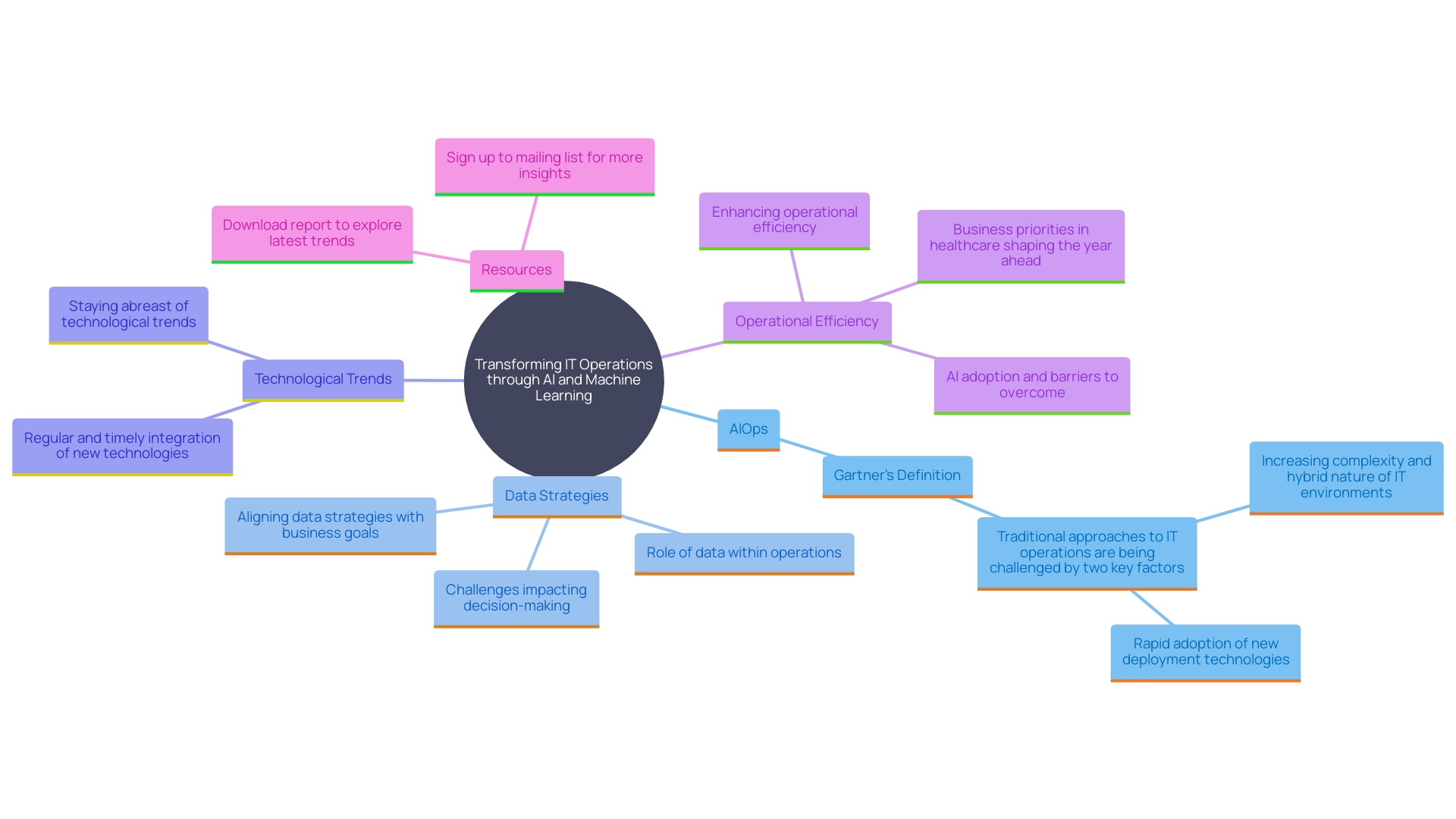
Conclusion
Automating IT operations presents a powerful opportunity for organizations to boost efficiency and productivity. By minimizing manual tasks, automation reduces errors and accelerates response times, enabling IT teams to focus on strategic initiatives. Tools like Robotic Process Automation (RPA) and CI/CD pipelines contribute to significant cost savings and align with broader business goals.
A successful automation strategy begins with a task audit to identify processes suitable for automation. Utilizing frameworks like the A.D.D. strategy—Automate, Delegate, or Deprecate—ensures focus on high-impact tasks.
Careful selection and pilot testing of automation tools are essential for effective integration.
Overcoming resistance to automation is vital. Clear communication about its benefits and involving employees in the process fosters collaboration and adaptability. Continuous training equips teams to embrace new technologies, enhancing productivity and job satisfaction.
Real-world case studies illustrate the benefits of automation, showing how organizations have streamlined operations and improved service delivery. As advancements in AI and machine learning evolve, they will further enhance IT operations, enabling proactive issue resolution and data-driven decision-making.
In essence, automating IT operations is not merely about replacing tasks; it’s about transforming organizational capabilities. By strategically implementing automation and promoting a culture of continuous improvement, organizations can thrive in a dynamic digital landscape.
